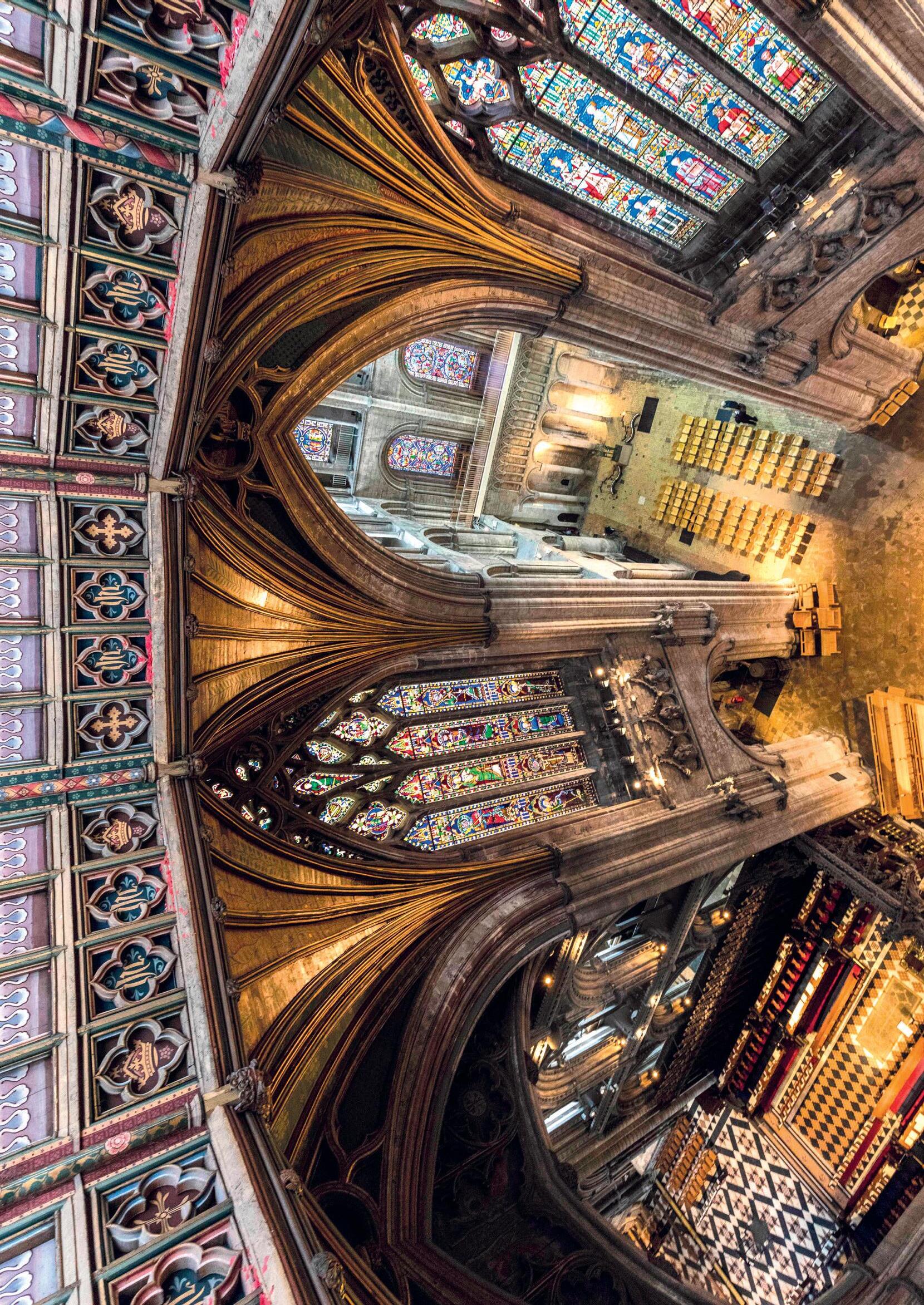CATHEDRAL MUSIC



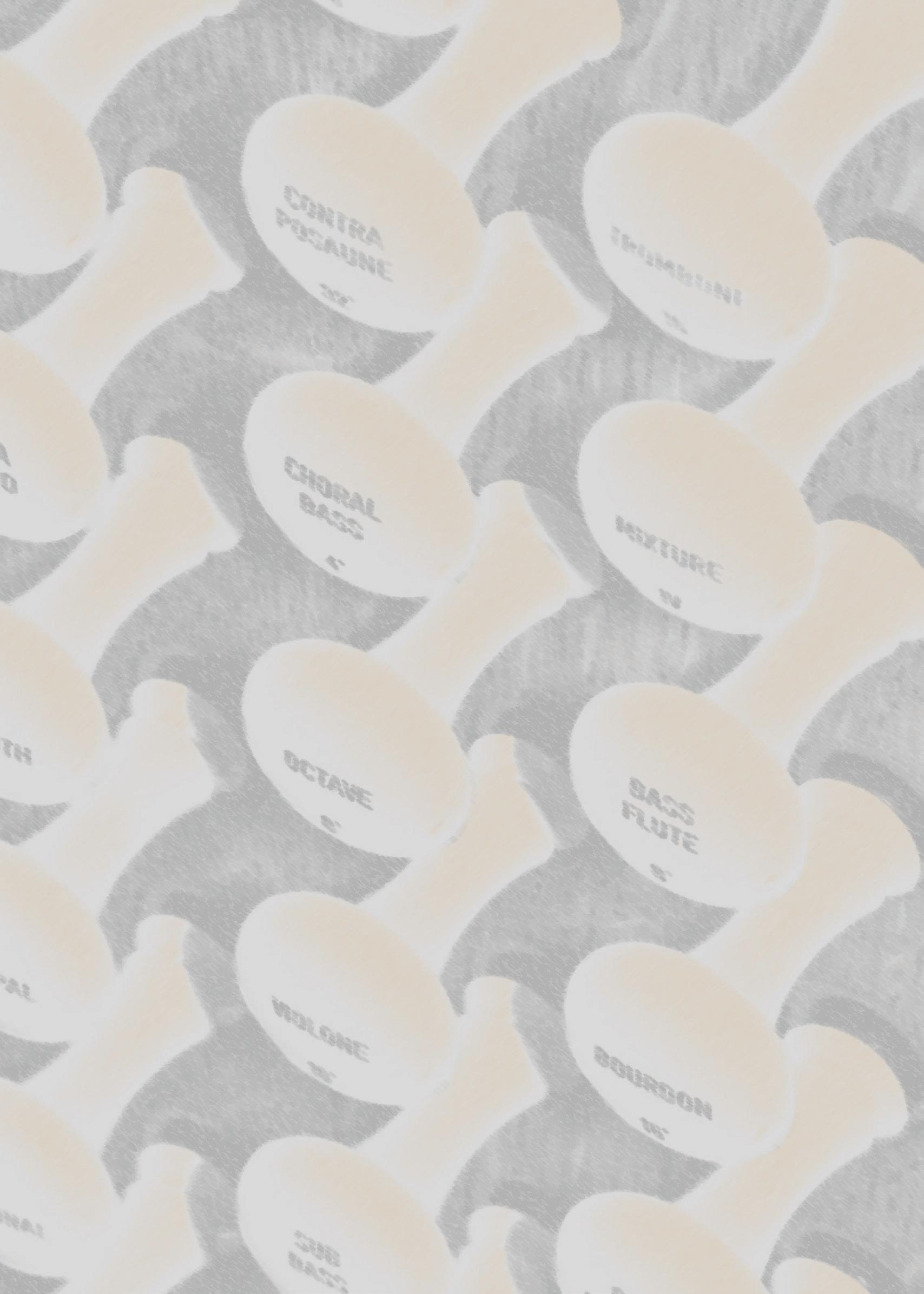
We offer four brands of organ each with their own identity, sounds, appearance, technology and style. All our brands share valuable characteristics such as technological innovation and the best sound quality, which is never a compromise. All provide the player with a unique playing experience. A great heritage and tradition are our starting points; innovation creates the organ of your dreams. Contact us for tickets for our ‘Autumn Shades’ concert at Shaw on Saturday 3rd October 2020
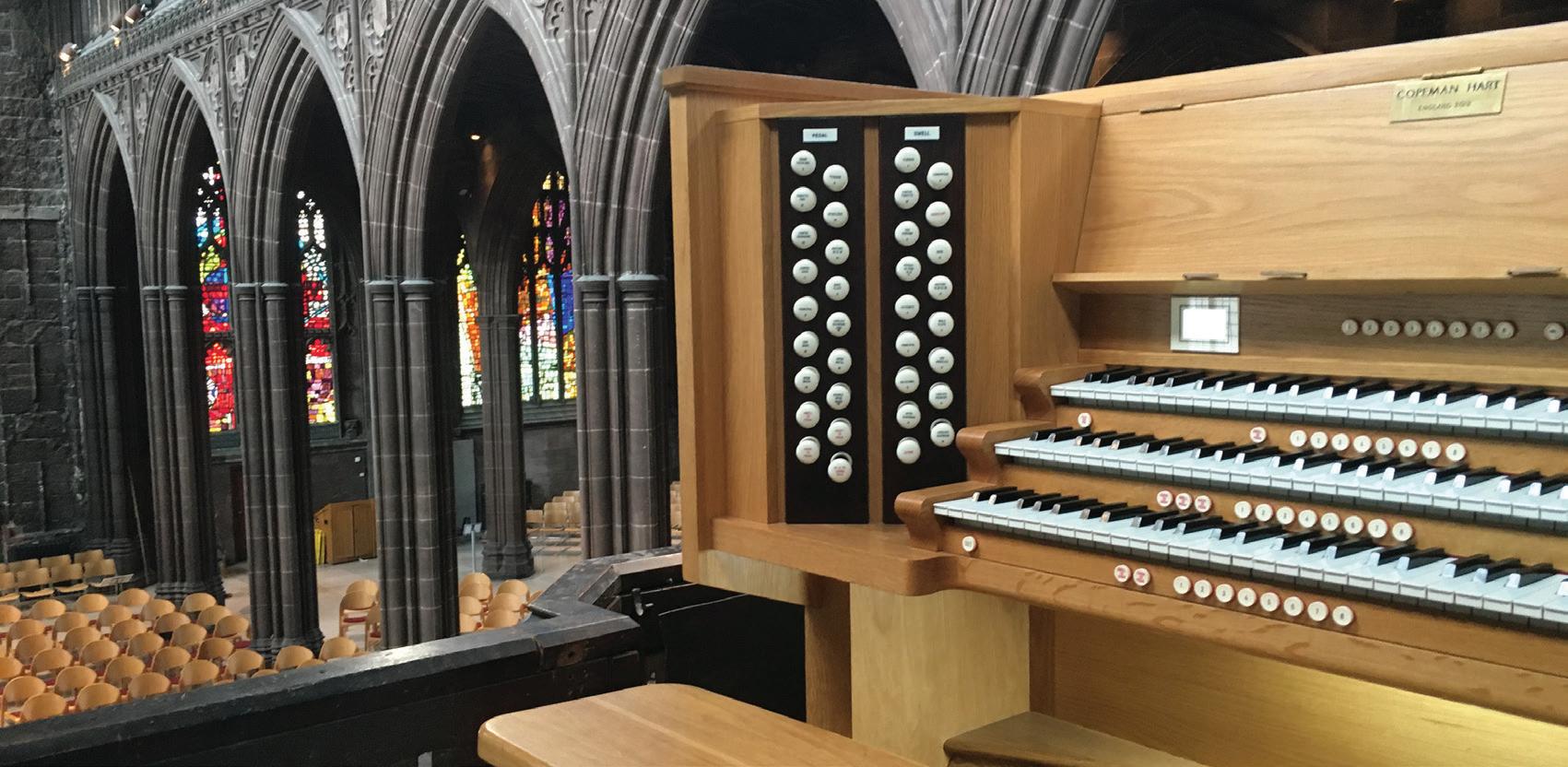
Makin | Copeman Hart | Johannus | Rodgers


CATHEDRAL MUSIC is published twice a year, in May and November.
ISSN 1363-6960 MAY 2020
Editor
Mrs Sooty Asquith, 8 Colinette Road, London SW15 6QQ editor@fcm.org.uk
Editorial Advisers
David Flood & Matthew Owens
Production Manager Graham Hermon pm@fcm.org.uk
FCM Email info@fcm.org.uk
Website www.fcm.org.uk
The views expressed in articles are those of the contributor and do not necessarily represent any official policy of Friends of Cathedral Music. Likewise, advertisements are printed in good faith. Their inclusion does not imply endorsement by FCM.

All communications regarding advertising should be addressed to:
DT Design,

4 Bedern Bank, Ripon HG4 1PE 07828 851458
d.trewhitt@sky.com
All communications regarding membership should be addressed to:
FCM Membership, 27 Old Gloucester Street, London WC1N 3AX
Tel: 020 3637 2172
International: +44 20 3637 2172 info@fcm.org.uk
Every effort has been made to determine copyright on illustrations used. We apologise for any mistakes we may have made. The Editor would be glad to correct any omissions.
Designed and produced by:
DT Design, 4 Bedern Bank, Ripon HG4 1PE 07828 851458
d.trewhitt@sky.com
Receive your first year membership of the Royal College of Organists FREE, with your home practice organ purchase


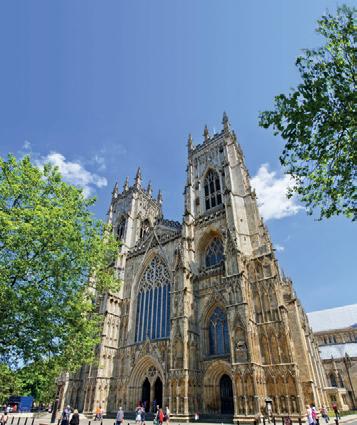




Sonus instruments, based on the very successful ‘Physis’ physical modelling sound platform, additionally incorporate an enhanced internal audio system to generate an exciting moving sound field for increased enjoyment in a home environment. Speakers above the keyboards and to the organ sides create a truly sensational and immersive sound field.
Starting at £11,700 inc VAT for a 34 stop 2 manual, the instrument pictured here is the Sonus 60 with 50 stops at £16,900 inc VAT. Neither words nor recordings can do justice to the sound of these instruments; you just have to experience it in the flesh.
Multiple speaker locations create a uniquely authentic sound
To play one of our instruments call us to book a visit to our showroom, or contact one of our regional retailers listed below.
Soundtec Irvine
Rimmers Music Edinburgh
Promenade Music Morecambe
Pianos Cymru Porthmadog
Henderson Music Londonderry
Keynote Organs Belfast
Cookes Pianos Norwich
Jeffers Music Bandon
Cotswold Organ Company Worcester
Viscount Organs Wales Swansea
Wensleigh Palmer Crediton
South Coast Organs Portsmouth
Viscount Classical Organs Ltd

Tel: 01869 247 333
E: enquiries@viscountorgans.net
www.viscountorgans.net
Sonus 60One of my favourite remarks of recent weeks is, ‘I wish we could go back to “precedented” times…’. Don’t we all? But since we can’t, and onward is the only option, in our area of support we must concentrate our efforts on offering whatever assistance we can to musicians of all kinds who have lost huge swathes of their incomes to – as my aged uncle refers to the virus – ‘Corvid’. Mass cancellations of concerts, events and services, and the closure of churches over the most important festival in the Christian year have had an enormous effect on the finances of all involved, but in the musicians’ world where so many are self-employed and a large proportion exist on erratic incomes, it is more important than ever that we give whatever aid we can. For those who can afford it, donating back the price of concert tickets bought, even if a drop in the ocean, can give a little relief to struggling churches and musicians. For those on low, restricted or immoveable incomes themselves, maybe the best way forward is to resolve, once lockdown is ended, to attend more events, buy – and encourage others to buy – more tickets for rearranged concerts etc, and thus help to swell the coffers of the – what? – endangered? afflicted? stricken? All of those, perhaps. We must all do what we can, as soon as we can.
To this end you will find included with this magazine a letter from FCM’s Chairman Peter Allwood which gives details of two very important developments, one of which concerns the formation of an emergency fund to support those choral foundations which will struggle to survive once lockdown restrictions are lifted due to loss of income from concerts and venue hire. If any member is missing this insert, it can be found on the FCM website or obtained by email from me.
Most of us currently have more time on our hands than heretofore, of course, and so hopefully this magazine will be a welcome arrival on your doormat. (It would be nice to think that it is always well received, but perhaps a little more so in these strange times.) What you will see first is thoughts about our president, Sir Stephen Cleobury. His death came as CM 2/19 went to press – doesn’t November seem a long time ago now? So much has happened since then – so this coverage had to wait. Mark Williams, who first met Sir Stephen as an undergraduate and who was Director of Music at Jesus College in Cambridge before moving to Magdalen in Oxford, has gathered comments from a wide circle of people who worked with him in different capacities and at various stages of his life. Without exception, those who knew Sir Stephen well all speak of his unfailing courtesy, his adherence to the highest of standards, and his true generosity of spirit to those around him, which at FCM we also recognise; he was always anxious to be involved in our initiatives, and gave most willingly of his time until sadly he was no longer able to do so.
Further into the magazine you can discover more about the famous ‘King’s sound’, identified all over the musical world, and Sir Stephen’s role in the continuance of this widely recognised trademark, and how it came about, in Tim Storey’s review of Timothy Day’s recent book I Saw Eternity the Other Night
And you can read about the fulfilment of David Flood’s long held-dream – a new organ at Canterbury. Normally I would say, let us rejoice him in his achievement. But how strange it must have been – as for all our churches and cathedrals but in particular for the iconic Canterbury – to have had a totally silent Easter. A new organ, but no music from it, and no prayers, no singing, no choir, no clergy – as for all of us, of course, but somehow much underlined by stillness at the heart of the Church of England. Our mission, our raison d’etre – sustaining a living heritage – has become more important than ever it was.
Sooty AsquithLog onto www.fcm.org.uk and fill in the form, or write to/email the address given on p3.
Member benefits include:
• welcome pack
• twice-yearly colour magazine and twice-yearly colour newsletter
Opportunities to:
• attend gatherings in magnificent cathedrals
• meet others with a shared interest in cathedral music
• enjoy talks, master-classes, choral and organ performances etc.
Subscription
UK members are asked to contribute at least £20 per year (£25 sterling for European members and £35 sterling for overseas members). UK choristers and full-time UK students under 21 qualify for a reduced rate of £10. New members subscribing at least £30 (standing order) or £50 (single payment) will receive a free full-length CD of cathedral music, specially compiled for FCM members.
FCM’s purpose is to safeguard our priceless heritage of cathedral music and support this living tradition. We strive to
increase public awareness and appreciation of cathedral music, and encourage high standards in choral and organ music. Money is raised by subscriptions, donations and legacies for choirs in need.
Since 1956 we have given over£4 million to Anglican and Roman Catholic cathedral, church and collegiate chapel choirs in the UK and overseas; endowed many choristerships; ensured the continued existence of a choir school, and worked to maintain the cathedral tradition. Please join now and help us to keep up this excellent work.
MW: My own first encounter with Stephen was as an undergraduate, not at King’s College but at Trinity, just down the road. Stephen asked me to play for a series of rehearsals with the chorus of the Cambridge University Musical Society. As a fresh-faced student, I was rather nervous about having to play for such a legendary figure in the choral world. And he was indeed demanding, with an ear and sense of rhythm that left nowhere for a sloppy accompanist to hide, but, within minutes of the rehearsal starting, I also saw the humour and kindness that brought humanity to his music-making. A raised eyebrow indicated that he knew exactly how he expected his seemingly gentle criticism of tuning or rhythm to be taken, and I was particularly struck by how quickly the rehearsal seemed to pass, owing to the execution of what I knew was a perfectly planned 90 minutes. In the years since my undergraduate days, I became increasingly aware not only of the magnitude of Stephen’s influence, but also of the depth of respect and affection for him across the musical world.
Thedeath of Sir Stephen Cleobury (1948-2019) on St Cecilia’s Day last year shook the musical world, coming so soon after his retirement from King’s College Cambridge following 37 years as Director of Music. Mark Williams, Informator Choristarum and Organist at Magdalen College Oxford, talks to colleagues, friends, former students and choristers about Stephen’s influence on generations of musicians.

ANDREW STAPLES was a choral scholar at King’s between 1998 and 2001. He has gone on to pursue a career as an internationally renowned tenor, appearing in major roles at the Royal Opera House, the Metropolitan Opera, New York, the Deutsche Staatsoper, Berlin and the Lyric Opera of Chicago, as well as in the Proms and on the stages of the world’s major concert halls.

AS: For all of us at King’s, Stephen was the ultimate benchmark of musicianship. He was someone you wanted to impress and, more than anything, he was someone you never wanted to let down. He inspired this ardent service without employing any tactics or high-handed methods, he simply made you want to sing better and try harder, work faster and learn more by setting a clear, humble and humbling example. His was a dedication to a cause that extended far beyond what was professionally required. Stephen knew that what he was asking of us wasn’t easy, but he believed it was worth it, and that the rewards would lead to a real sense of achievement and fulfilment. He enjoyed building teams and making them

into the best they could be. He was loyal and thoughtful, and, thankfully for me, he was patient and forgiving. He would rehearse a psalm in the same way that he rehearsed a Bach Passion, striving to make every sound, thought and gesture a matter of corporate responsibility and collective care.
As I entered my final year at King’s some 25 years ago, it occurred to me that I would never experience anything like that choir again and I’m yet to be convinced that I was wrong. Not so much Christmas and the glamorous tours as the wet Tuesday Evensong rehearsals when, in an empty, candle-lit chapel, Stephen would guide us through centuries of music, a quaver at a time, carefully instilling in us his sense of dedication to a higher purpose, all in the service of crafting music worthy of its surroundings and intention.
After three years under that kind of productive pressure we emerged able to sight-read anything, blend perfectly, and confident that our pristine text could be heard at the back of any concert hall on the planet, skills that have got me out of many a jam since.
JAMES VIVIAN has held the post of Organist and Director of Music at St George’s Chapel, Windsor Castle since 2013, directing the choir for the weddings of the Duke and Duchess of Sussex and Princess Eugenie and Jack Brooksbank. Prior to moving to Windsor, he was Assistant Organist and subsequently Director of Music at the Temple Church in London. He held the organ scholarship at King’s between 1993 and 1997:
JV: To encapsulate Stephen’s influence on me and my career is difficult to do in a few words. ‘Demanding but fair’ is a phrase that comes to mind when I think of my time as Organ Scholar at King’s, but that doesn’t adequately convey his generosity and his real desire to support his organ scholars. Particularly in my second year, when I was his only organ scholar, he was avuncular; he understood the pressures his organ scholars were under, and he always made a point of telling us when he thought we had played particularly well. Of course, we were left in no doubt when he thought we hadn’t played particularly well, too, but we knew that he was not demanding standards of us that he did not demand of himself every single day.

During my time at King’s I learned a great deal from him that I still put into use every day – the value of meticulous preparation, integrity and courtesy, attention to detail, and of how to organise and run an efficient rehearsal.
RICHARD GOWERS was a chorister at King’s 2003-2008 and Organ Scholar 2014-2017. He went on to study piano at the Royal Academy of Music and performs as a pianist and organist. He has appeared at the BBC Proms, Aldeburgh Festival, Wigmore Hall, Toulouse Les Orgues, and in collaboration with the Aurora Orchestra, BBC Singers, CBSO, LPO and several other ensembles. In 2018, the King’s label released his debut disc of Messiaen, which became a Gramophone Editor‘s Choice:

JOD: The prospect of my becoming Assistant Master of Music at Westminster Cathedral was both an exciting and a daunting one as I reached my final term at Cambridge. I was absolutely overawed by Stephen Cleobury, the cathedral’s Master of Music, who seemed utterly authoritative and almost incredibly competent. In the end, I worked with him for only a few months, as his appointment as Director of Music at King’s was announced just before I was appointed. In that short time, I found him an exacting boss but also a very supportive one. His comments were always constructive and I learned a huge amount from him, especially about the importance of being properly prepared (Stephen was never caught unprepared –for anything).
RG: My days as a chorister under Stephen were defined by his total leadership, authority and precision. In short, thanks to his demands, we were obsessed with what we did and gave all we could. It is hard to look back and conceive the amount of work we must have done to reach his expectation, but it is easy to see how much it shaped our lives.
A good rapport with Stephen was everything. The chorister system is praised for demanding a professional standard from children, and we all recognised that and took pride in it. We all tried to impress him. At the end of instrumental practice, just before the 8.10am chorister rehearsal, I would bash out choir music I’d picked up by ear to try and demonstrate an interest. “Was that you playing the Buxtehude Magnificat, Gowers?” he would ask. “A bit too fast, wasn’t it?”
In the end, trying to impress Stephen as an individual was missing the point. It was a choir: 16 choristers singing one musical line. Stephen loved recounting his predecessor Philip Ledger’s point that ‘a choir is only as good as its worst singer’. The system of apologising to him for any mistakes you made in a service was something that baffled outsiders, but felt entirely reasonable to us. Nothing was under-rehearsed on his watch.
Not all choristers went on to become musicians, but invariably we recognised what he had given us: a standard of discipline, group mentality and above all a profound love of music.
JAMES O’DONNELL took up his first post as Assistant Master of Music at Westminster Cathedral, on graduating from Jesus College Cambridge in 1982. He went on to become the Master of Music there in 1988, moving to his current post as Organist and Master of the Choristers at Westminster Abbey in 2000:


Playing for Stephen could be terrifying. This was partly because, when I arrived at the cathedral, the organs were in a poor state of repair and quite unpredictable. But it was also because you really wanted to play well for him and knew that any under-preparation or carelessness would be noticed. In that sense he was an inspiring master and encouraged you to give your best at all times.
CHRISTOPHER ROBINSON was Director of Music at St John’s College Cambridge between 1992 and 2003, having previously held positions at St George’s Windsor, and Worcester Cathedral:
CR: I first came across Stephen in 1962 in Worcester, where he was Head Chorister in the cathedral choir. He was quite small, always tidily dressed, polite, unassuming, yet totally au fait with everything that was going on. He always seemed wise beyond his years –precocious without being precious.
Along with a group of other talented boys (which included his brother Nicholas) I gave him piano lessons. A year later I also taught him the organ. Progress was rapid, and it was not long before he was fulfilling the role of organ scholar. He was an exceptionally diligent and determined pupil and if, at first, his style was inclined to be cautious, by the time of his audition for the St John’s organ scholarship at Cambridge he was playing the Toccata, Adagio and Fugue with considerable panache. As a pianist, I recall a fine account of Mozart’s G major Concerto K453.
Following his chorister days, he developed a pleasing light baritone voice and I encouraged him to join a madrigal group which I ran at the Alice Ottley School. This marked a significant step forward in his social life! In due course, he directed a similar group of his own. He also sang in the Festival Chorus and encountered a wide variety of choral works by such composers as Berlioz, Poulenc, Stravinsky, Britten (the War Requiem) and, of course, Elgar. From time to time he came with me to Birmingham to act as accompanist
for the City Choir. Nothing seemed to faze him, not even the Glagolitic Mass
After Cambridge he returned to Worcester to marry Penny. I remember this occasion vividly. George Guest conducted the combined choirs of Worcester and St John’s, and I played the organ. I was glad was quite something.
SUZI DIGBY is a renowned choral director and music educator. Founder of The Voices Foundation and director of The London Youth Choir and the professional ensemble, ORA Singers, amongst others, she lives in Cambridge with her husband, the Lord Eatwell, President of Queens’ College:

SD: I first met Stephen when I arrived at Queens’ College Cambridge in 2006. As the ‘hers’ college to King’s ‘his’ college (ours was co-founded by Margaret of Anjou, the wife of Henry VI), our colleges enjoyed a natural pairing. As a big choral person, the significance to me of being next door to King’s was immense. Over the next 13 years, Stephen was an unfailing support and a gracious friend. Perhaps the most abiding personal memory was Sir David Willcocks’ 90th birthday party, which I hosted in the Tudor Long Gallery at Queens’. We surprised Sir David with a performance of John Rutter’s specially commissioned Birthday Ode and Sir David’s wartime song, which we all sang under his direction. Seeing Stephen singing heartily alongside a distinguished gathering of musicians was a sight to behold!
JOHN RUTTER is one of the world’s leading composers, particularly celebrated for his many and muchloved contributions to the choral repertoire. Amongst pieces written for the King’s choir and Stephen Cleobury are two of his most famous carol settings, ‘What sweeter music’ and ‘Dormi Jesu’:

instead? We’ve got a slot after the eighth lesson this year.” I wrote the carol – What sweeter music – and Stephen championed it ever afterwards. It was always hard to find the right words to thank him; he was embarrassed by overt expressions of feeling, but the occasional private note from him showed that it meant a lot to know that he and his work were appreciated.
JOD: Stephen’s achievements during his short period at Westminster Cathedral were extraordinary and, in my view, have not been fully acknowledged. On his arrival he found in the cathedral choir a disorganised and somewhat demoralised group. Through methodical and dedicated work he rapidly transformed it into a top professional ensemble with a growing international reputation. He provided the foundations on which his successors have been able to build. Always musically demanding and disciplined, he was also courteous and goodhumoured and deeply respected by all his colleagues.
Stephen and I got on well, and we stayed in touch when he went to King’s. As I moved on to more senior positions, he seemed to me obviously the best person to ask for advice on tricky professional matters, and he always generously gave his attention despite the many other pressures on his time. His guidance was always balanced, wise and sensible, and totally discreet. Confidences were never broken.
JV: Stephen was genuinely delighted when his organ and choral scholars went on to succeed in later life, and he and Emma followed their careers with interest. I vividly remember coming out of a recent televised royal event to find a text message – sent during the broadcast – from him and Emma complimenting the choir on something they had just sung. That meant a great deal. It also meant a great deal that I could pick up the phone and ask for advice at any time. There was almost nothing in the world of professional music-making that Stephen hadn’t experienced, and his invaluable counsel was always wise and measured. I, and many others, will greatly miss being able to tap into that vast well of knowledge.
JR: Stephen’s professional and public life is well documented. His personal acts of kindness and thoughtfulness are less well known; he didn’t advertise them. Whether it was a kind word to a chorister parent suffering bereavement, dealing sensitively with a choir member battling serious illness, remembering a distinguished colleague in retirement, or spending extra time with a struggling organ scholar, his humanity was always there alongside his musicianship. I have particular reason to be grateful for this side of his nature: in 1987 he asked me to write a substantial choral work for the King’s choir’s annual concert at the Barbican. Illness forced me to renege on this commitment, and I felt terrible about it. He threw me a lifeline. “John,” he said, “I realise a big piece would be too much, but could you manage a carol for the Christmas Eve service
SD: We all know about Stephen’s peerless contribution to choral music at King’s. I feel most indebted to him for the outstanding series of 35 new commissions for Nine Lessons and Carols – an unparalleled contribution to the choral repertoire. What most people are less aware of is Stephen’s extraordinary generosity with respect to his work with other choirs and groups around the world. If he could make himself available, he would accept every invitation to work with community and school choirs. He also brought his daughter to one of my Kodály musicianship classes, such was his interest in music education in general. Stephen was tireless, ego-less and unfailingly gracious. And a superb musician.
GABRIEL JACKSON is one the United Kingdom’s most prominent and highly regarded composers, known in particular for his prolific output of choral music:

MW: On returning to Cambridge, as Director of Music at Jesus College, in 2009, Stephen was the first of the Cambridge directors of music to write inviting me to dinner. He was an exceptionally gracious host and a tremendous conversationalist. Personal friendships and the exchange of ideas with colleagues meant a great deal to him, and he worked tirelessly to nurture both, always taking time to send a handwritten note, or latterly a text message or email, whether after catching a broadcast or on learning of some difficult personal news. He offered warm encouragement and sage advice as our relationship evolved from teacher–student to colleagues. With his wife, Emma, he extended the hand of friendship to many of his colleagues across the university and the musical profession, and I was fortunate to be one of those. Like a large number of others, I am grateful for the many kindnesses he showed me over the years.
GJ: Stephen was a meticulous, conscientious interpreter of new works. He had total respect for what was in the score (if he thought you knew what you were doing!) and his instincts for all those little nuances of performance that can’t be notated were incredibly sure. There was never anything to say to Stephen in a rehearsal. Any observations one might make, if asked – and, of course, he always did ask – had already been made by him.
When I wrote The Christ-child for the Service of Nine Lessons and Carols in 2009, he invited me up to a rehearsal at King’s a week or so before Christmas Eve. We had a very nice lunch, went over to the chapel, he introduced me to the choir, they sang through the piece – beautifully – a couple of times, I said “Thank you very much, Stephen, that’s great!” and went home. That’s how Stephen was – quietly, efficiently professional, and so immaculately musical.
CR: In 1991, Stephen and I were reunited, now as colleagues as I was appointed to direct the choir of his alma mater. I have been proud to admire his long and distinguished reign at King’s which – more recently – I witnessed at close quarters. The plans for his final year were as ambitious and challenging as one would have expected. In view of his failing health, it is astonishing that he was able to summon up enough strength to carry them through. Music-making seemed to invigorate him in a miraculous way.
It is cruel that the long years of retirement which he so richly deserved were denied him. However, it would certainly have been a busy retirement. As Emma, his wife and constant support for almost 20 years so neatly put it, ‘time off’ was not really a concept which Stephen understood, and although he seemed to thrive on hard work, we should not forget that he was, above all, a deeply sensitive human being.

DAVID BUTCHER has been Chief Executive and Artistic Director of Britten Sinfonia since the orchestra’s foundation in 1992. The orchestra collaborated with Stephen Cleobury and the King’s choir regularly, including in a number of critically acclaimed recordings:

DB: Immediately following any project with Stephen – a concert, tour or recording – there would be a letter or email of thanks to Britten Sinfonia musicians and the management team. These thanks typically never contained superficial platitudes but were thoughtful, heartfelt, precise and instructive, whether praising particular musician contributions or thanking our percussionists for putting up with a long journey from van to stage. Stephen was a true gentleman as well as a brilliant musician. His preparation and attention to detail were as legendary as his musical precision and brilliance. Like the great Oliver Knussen, Stephen could unerringly detect any intonation or balance issue requiring further enlightenment at 50 paces during the most complex of musical passages, and this with his courtesy and inspiring musicianship made him one of the orchestra’s favourite collaborators. Over the years he got to know our players personally. Occasionally if, say, a different 2nd clarinet or 4th cello was in for the first time he would make a point of knowing their name and welcoming them individually. We were all so honoured and touched that he asked us to join him for his retirement concert in King’s chapel. It was probably the easiest event we’ve ever had to book musicians for as all our players wanted to be there for him. Although obviously unwell, he somehow transcended earthly physical frailties to inspire and illuminate a never-to-be-forgotten performance of Britten’s Saint Nicolas, creating a night that will live long in our collective musical memory. We will miss him so very much and the orchestra is privileged to have played a small part in his unique musical legacy – one that lives on through his multitudinous recordings and many commissions, and through the countless lives he touched.
JOD: Stephen’s work over more than four decades has been an inspiration to me and to so many. He has trained countless young musicians and thereby made an inestimable contribution to the musical world, especially to choral music. It is very cruel that he died so soon after stepping down from his long and distinguished tenure at King’s, but I know I am amongst countless others in remembering him with gratitude, respect and deep affection.
AS: A generous and selfless musician, Stephen transformed the lives and careers of innumerable choristers, choral scholars and organ scholars, teaching us that if a job is worth doing, it’s worth doing to the best of our abilities. We thank him for nurturing, training and teasing out talents and performances that otherwise simply wouldn’t have emerged; for sharing with us a wealth of opportunity and experience, for sharing with us his love of music and its power, and for leading us into a deeper and more humble appreciation of it. I hope he felt the depth of the affection and respect that we all had for him; it’s often easier to demonstrate the latter without dipping into the vast pool of the former.
JR: In an age when we tend to gush in public and trumpet our achievements all over social media, Stephen stood as a reminder of old-fashioned gentlemanly restraint and courtesy. We shall all miss him.
The Edington Festival of Music within the Liturgy (the Edington Music Festival) is marking its 65th birthday with the launch of a new annual award to support choristers at those cathedrals, colleges and greater churches which have applied to FCM for financial support.
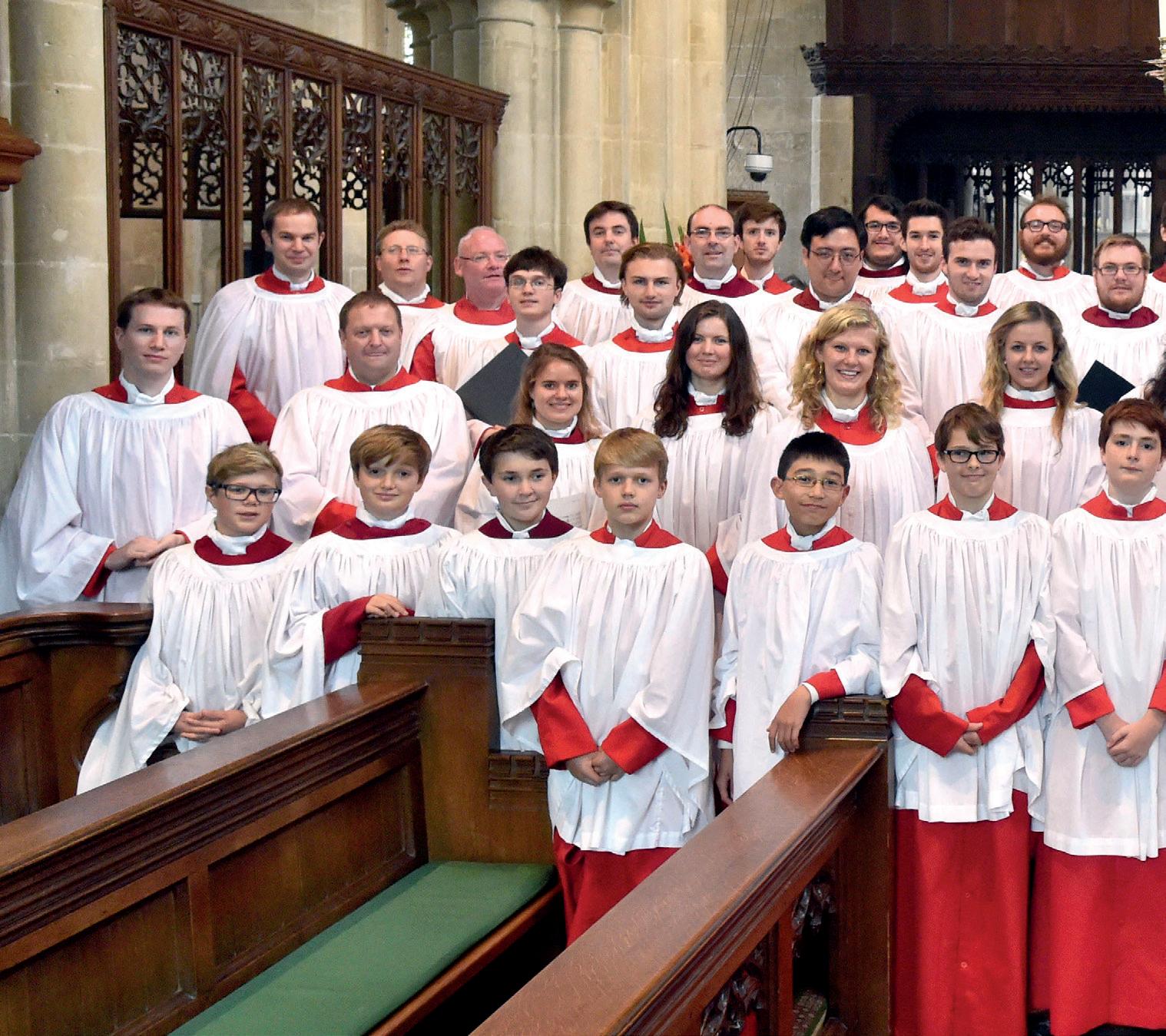
The Edington Festival Award has been made possible by a recent bequest to the Edington Music Festival Association (EMFA), which has been ethically invested. Working in collaboration with FCM’s Diamond Fund for Choristers, the award will most likely be allocated for choral training or as support for choristers.
The EMFA executive committee has agreed to support boy and girl choristers at choral foundations whether or not they have an existing relationship with the festival.
The inclusion of greater churches as potential beneficiaries of the Edington Festival Award means that funds will also
be available to support a grassroots level of choral training within the rich and historic tradition of music inspired by religious texts. This sacred music is at the heart of the eight days of services which comprise the Edington Music Festival, exploring the full panoply of composition from plainchant through to new commissions.
Richard Pinel, Director of the Edington Music Festival and Director of Music at Jesus College Cambridge, comments, “We know that sometimes for financial reasons talented young singers and choirs are unable to undertake professional vocal training to enable them to progress within the particular niche that is church music.”
He continues, “The Edington Music Festival has been a launchpad for both junior choristers and senior musicians for 65 years; a large number of the UK’s most respected and talented oratorio and operatic soloists and organists, and members of the most well-known vocal ensembles have
participated in the eight-day festival since 1956. Our three choirs are selected annually from cathedrals and collegiate choirs all over the UK, and the Festival provides an opportunity for more than 80 musicians from the age of 9 or 10 upwards to sing familiar and new music from this complex and beautiful repertoire. We hope that the Edington Festival Award will enable more talented musicians and choirs to experience the joy and fulfilment of singing this extraordinary music.”
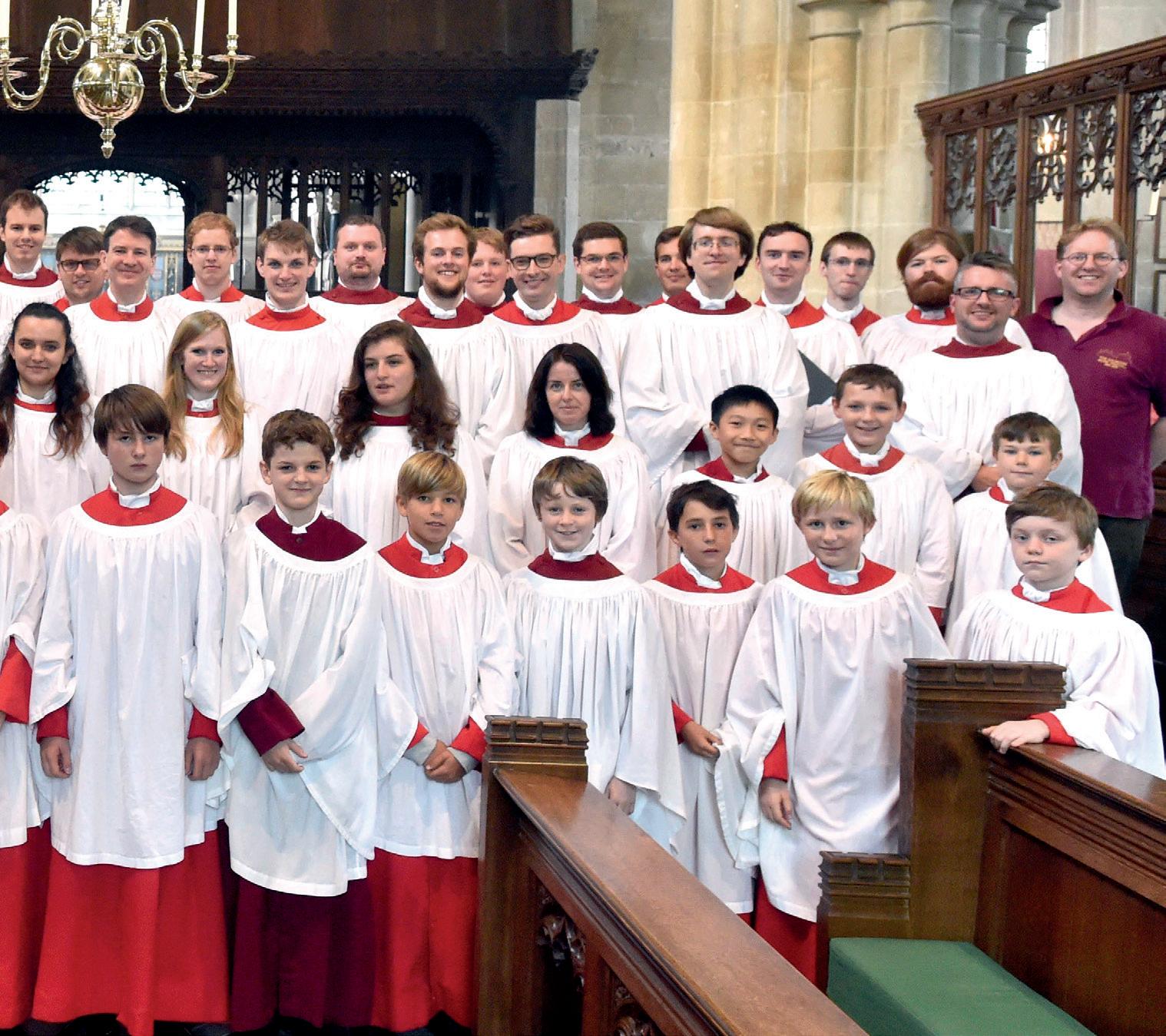
The world-famous vocal ensemble The King’s Singers has included many singers over the years who have come through the Edington Festival. Julian Gregory, tenor, and Pat Dunachie, countertenor, two of their latest Edington Festival alumni, have added their support for the initiative: “Church music is in the blood of The King’s Singers, so we are delighted to hear that the Edington Music Festival, through this new award, will be working to increase access to training at all levels of church music-making. The Edington Music Festival has been a formative experience for many members of The King’s
Singers, past and present, and the more people who are able to experience the kind of music celebrated by this wonderful festival, the richer the world of choral music will be.”
The nearby Wiltshire parish of St John’s in Devizes, where former Assistant Festival Organist Chris Totney is Director of Music, has added its support to the scheme. “The benefits of singing have been well documented in recent years. As well as being good for physical and mental wellbeing, it has all sorts of wider benefits such as the development of reading, mathematical and leadership skills to name but a few – and you make friends for life,” says Chris. “The English choral tradition is the envy of the world and the Edington Music Festival is one of the most iconic snapshots of this every summer. In an age where we hear all too frequently about cuts in arts funding, it’s wonderful that this new award will empower choral foundations to provide more sustainable support for future generations of choristers.”

calling to each other from the highest possible locations – one placed in the octagon lantern and the other at clock level at the west end of the building.
In the context of the long history of Ely Cathedral, three decades of responsibility for the music in such a glorious place is a mere flash in the pan, and any reflections must inevitably be highly selective. What follows here aims to identify what has stayed the same and what has changed during that time.
When I first arrived, the overwhelming impressions were of the scale, beauty and mystery of the building. Externally, the mystery is certainly still striking. A particularly impressive time of year in Ely is the autumn, when the mists shroud the octagon and west tower. Internally, I worry about some erosion of mystery caused by a preoccupation with tourism and a determination to cater for all kinds of worship. Both are understandable and laudable developments, in step with contemporary times and views about the role of cathedrals, but in order to really appreciate the essence of Ely Cathedral it’s probably best to come early in the morning, or at evensong time on a cold, dim day when the visitors have gone and the busy, often rather noisy events of a typical day do not intrude. When entering the cathedral to take the daily boys’ rehearsal at 8am I nearly always made a point of coming in from the west end. This enabled me to take in the view of the whole length of the building and remind myself of the privilege of working in such an exceptional setting. It is especially wonderful when there is no seating in the nave. The huge size of the cathedral, with all its galleries and other performing spaces (including the fabulous 14th century Lady Chapel) has been a constant source of inspiration to composers throughout the centuries – including Christopher Tye and John Amner, whose music has been included on a number of CDs recorded over the past 30 years. The marvellous performing spaces have also inspired me to write extensively for the Ely choir, including a setting of the Advent Responsory which features two soloists
The chorister rehearsals were always the highlight of my day. At 8 in the morning children are fresh and lively. Seldom has anything yet gone wrong with their day, and their enthusiasm and energy shines through. It just needs to be harnessed and channelled into the task of concentrating and singing. If the work is not properly done at that stage of the day it is likely that there will be difficulties later on, when a day at school will have taken its toll. So the early morning work has to be intense and determined, but this can only be achieved by teamwork and dedication to task. Enjoyment and humour are equally crucial ingredients – especially the latter. Boys are usually capable of achieving almost anything we might expect of an adult if they are told they can do it. Equally true, they are also mischievous and the cause of much amusement. They say daft things (!) and it’s good to take time out of a rehearsal to enjoy that, however much pressure there may be to get through the notes and turn them into worship.
Many of my favourite memories concern the laughter. April Fool pranks are an ideal example, and there have been many of them over the years. In my final year I decided to introduce the boys to John Cage’s infamous silent work 4’33”, arguing that silence is an important element of worship. Some of the boys were appropriately dubious; others seemed at least partially convinced. A few minutes later I discovered that the tables had been turned. The song school piano had been ‘prepared’ in John Cage style (I believe by other staff) and I had to remove combs, loo paper and other items from the inside of the instrument before practice could continue!
My initial task at Ely was to preserve and develop the musical standards of the cathedral’s only choir, which consisted at that time of 18 boys and six lay clerks. My credentials at the time of my appointment were related to the unusual task I had undertaken in my previous appointment as DoM at St Edmundsbury Cathedral. My job there had been to find a way of changing a mixed-voice line of trebles back to a boys-only line. This was a controversial challenge. Many times I had to point out that the cathedral policy had been decided before I was appointed to make it happen and that it did not reflect my own feelings about girls in cathedral choirs. It required sensitivity to the parents and to the girls, none of whom were required to leave prematurely. It therefore took several years to achieve, and involved intensive recruitment of boys from various schools. The experience I gained of working with girls as well as with boys during the period of change at St Edmundsbury proved invaluable to me later on at Ely.
I find it interesting to compare this initial task of my own at Ely with that of my successor, Edmund Aldhouse, who took over after Easter 2019. Edmund’s task is much more varied and it reflects the changes that came about during my tenure. There are now five ‘in house’ choirs at Ely Cathedral – too many for one person to direct, of course, but nonetheless all to be taken into account, developed and appreciated. The five choirs are:
» Boys and men
(six lay clerks plus a large pool of extra singers)
» Girls
(who also frequently sing with the men)
» Children’s Choir (young boys and girls)
» Adult Voluntary Choir (Ely Cathedral Octagon Singers. Membership by audition)

» Cathedral Community Choir (Adults. Any level and no audition)
The Friends of Cathedral Music are well aware that the recruitment of boys is a challenging task in this day and age. When I began my time at Ely there was a constant stream of enquiries from parents of potential choristers. Although many of them were relatively local, some came from as far away as Scotland. Numbers have dropped off significantly, and much work and thought has been required to tackle this problem, and with mixed success. The question of boarding has been only part of the issue; more flexibility has proved necessary and wise. Trickier still has been adapting to 21st century lifestyle – especially at weekends. Again, the response has been more flexibility. Boys are now recruited from Year 3 onwards, as opposed to from Year 5 onwards, but at the other end of the system the problem of voices changing earlier is unlikely to go away. The costs of choristership are a serious matter both for parents and for chapters, both of which have so many other matters to juggle. In this, the work of FCM
becomes more and more essential and their support has always been hugely appreciated. Long may it continue!
Another frequent agenda item has been the payment, conditions and turnover in the lay clerk ranks. Somehow, somebody has always turned up to fill gaps as and when they arise, and thankfully the quality and standard of the altos, tenors and basses has been mercifully high during my time at Ely. As these observations begin to move towards the biggest musical change of all, it is pleasing to make special mention of the fact that Ely can now boast its first female lay clerk in the ranks.
The girls’ line was added to the music department in 2006. I thought it wise to resist any temptation to ‘jump onto the bandwagon’ in immediate response to the Salisbury initiative, preferring to watch how others would go about this in order to learn from their successes (and mistakes). Incidentally, the introduction of girls at St Edmundsbury by Harrison Oxley preceded the Salisbury scenario by many years – a fact which is frequently overlooked. In 2006 I felt the personalities and conditions were right to proceed at Ely, and girls were recruited from the senior department of King’s Ely (rather than from the junior department where the boy choristers are educated).
A crucial ingredient was the school’s generous offer to pay for the girls as well as for their Director of Music and organist, thereby avoiding any necessity for the cathedral chapter to find the necessary funds. The girls were an instant success and in recent years younger recruits from the top two year groups in the junior school have been added, allowing the older girls to concentrate more easily on their public exams. The girls and boys have often combined for various services and concerts, to great effect. One fascinating aspect of this is that they blend so well together. They just create the sound themselves; very little work seems to be needed to ensure that neither the boys nor the girls dominate the sound. So many treble singers do of course need more lower voices to balance them, and the pool of (mixed voice) extra singers which has been a feature of weekend worship for many years, known as the ‘expanded choir’, has come into its own on these occasions.
Ely’s children’s choir, ‘The Ely Imps’ was also founded in 2006. Initially intended as a concert choir, the boys and girls now frequently sing in special services either alone or with the choristers. For the first 10 years of its existence I had the pleasure of directing this choir, but they now have their own director who has also contributed much to singing outreach projects.
The Cathedral Community Choir is the most recent addition to the choral picture. This was founded by Canon Victoria Johnson, who took responsibility for them in her own very special and effective way. Canon Johnson has recently been appointed Canon Precentor at York Minster. She will be sorely missed at Ely – and not just by the singers!
the questions asked about its future. It has been a privilege to be able to observe how choristers thrive and succeed at King’s Ely when they leave the choir.
I hope I have managed to put worship (Opus Dei) first, even though so much work has to be done to facilitate concerts, tours, broadcasts and special events (which I like to call ‘the icing on the cake’). Some of my fondest concert memories relate to my earlier days when, for example, the cathedral choir gave several performances both in the cathedral and in London of Handel’s Messiah and Bach’s St John Passion. In more recent times our home concerts have had to be more popular in style and content, and I have often been required to come out of my comfort zone in order to meet the demands of unusual concert projects. For example: a swing concert combining the choir with a big band, and a Science Festival concert (where I found myself having an argument with a dalek in front of the choir and audience!)
Obviously, there have been many other changes at the cathedral over the years. Some of them are exclusively concerned with music, but others are not. Here are a few that immediately spring to mind:
Bishops, deans, other clergy and chapter members have come and gone. Tempted though I am to comment on individual clergy contributions I have experienced over the years I think it wise to resist, other than to say that it has been a pleasure to work with some of them.
At some point, school pupils became ‘students’ and the School Head became the Principal. The number of cathedral office staff increased approximately tenfold. All choristers have been required to have individual singing lessons, and lay clerks have been encouraged to do likewise. There is no such thing as a Canon Treasurer any more, but there is a cathedral administrator. There has been a gigantic increase in the number of meetings needed to make the cathedral function as smoothly as it does. Safeguarding eats up days – if not weeks – of time and attention. We are all aware of how important it is to ensure the safety and wellbeing of the children in our care, but I’m not convinced that the endless round of training and, more recently, ‘audits’ associated with these concerns is ideally conceived or delivered, despite best intentions. Similarly, I wonder about the volume of risk assessment required of us all, and about the tick-box procedures sometimes involved. Hours of sitting in front of a computer screen are the result for cathedral Directors of Music and some clergy. I worry that matters such as this put young and talented people off working for the church when they contemplate which direction their career might take.
I hope that high choral standards and the traditional makeup of the English cathedral choir (boys and men) has been maintained during my watch, and also enhanced. I reiterate that I think it a good thing that choristers are still expected to be boarders here, with plenty of flexibility incorporated into the system. It’s a very special and positive experience when associated with demands of the choral tradition – despite all
I think some of the most memorable services I have experienced have been the ones which some might think ordinary. I have much preferred such occasions to the more ceremonial ones attended by the great and good. Of the many larger-scale services which preoccupy us around Christmas and Easter my favourite has always been the Advent Procession.
Foreign tours have been a rewarding part of cathedral choir life. Each and every one of those has been an adventure and I have many happy memories of them all. Two trips to Poland were definite highlights, likewise a trip to northern Italy where the concerts always began late but where the huge audiences were particularly appreciative (when they eventually decided to turn up!). After singing in northern Italy, the choir went on to Rome where all our planned concerts did happen – but not necessarily on the day or at the time planned! It was very moving to sing in the Church of St Paul without the walls in such close proximity to the resting place of my favourite saint. A particularly fine tour was to France, following part of Via Podiensis – one of the famous pilgrimage routes. Although that tour had its challenges in terms of travel and accommodation, we all had great fun and it was spiritually especially rewarding.
What do I miss most of all after 12 months out of post? That’s easy. It’s the special rhythm of life which utterly dominated not just my time at Ely, but also my years at Worcester as assistant organist, those I spent at St Mary’s Warwick, and those spent at St Edmundsbury Cathedral as Director of Music.
Finally, I must add that my career doing what I love most in so many inspirational places has always been a double act. Entertaining choir members (young and older) in our various homes has always been an essential and delightful part of the job. My wife, Sally, and I have decided to stay put in Ely where we will continue to worship. Proximity to Cambridge is a great asset, enabling great choral experiences in the college chapels and allowing me to accept some teaching opportunities in the university. We are currently looking forward to using a newly acquired ‘bolt-hole’ in Worcester (where we met back in the 1970s.) All being well, that will enable to us enjoy some other passions we share: the Malvern Hills, proper cricket – and our grandchild, Poppy.
When I first arrived, the overwhelming impressions were of the scale, beauty and mystery of the building.
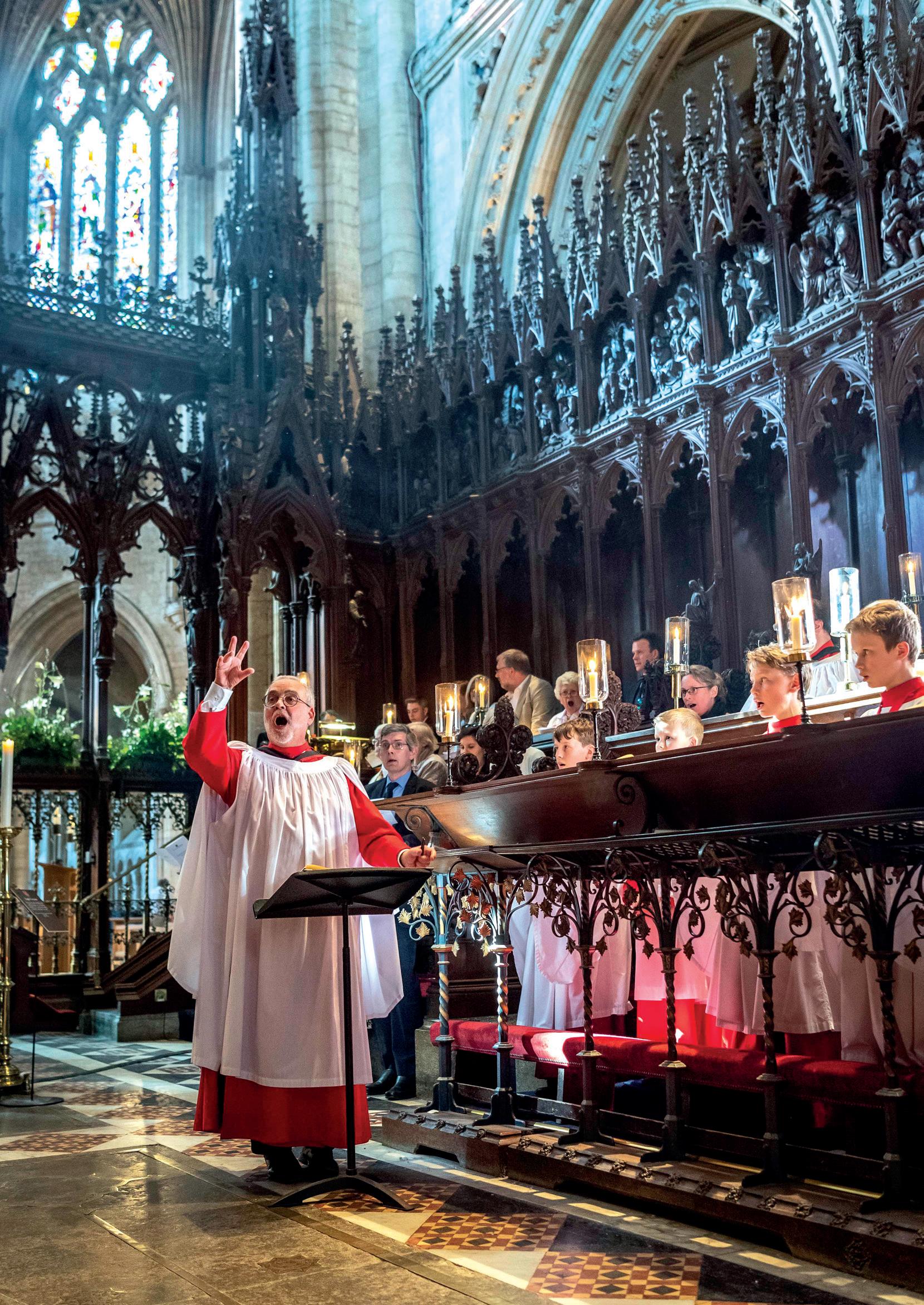

I’m sitting at the computer in my office at All Saints’ Episcopal Church in Fort Worth, Texas. It’s February. Yesterday it was 26oC outside, and tomorrow it will be -2oC; Texas weather changes dramatically at this time of year, but in the summer it will remain at around 40oC, which I love!
I moved here in September 2018, to be Organist and Choirmaster at All Saints’. The church seats around 400 people, and we have around 2000 parishioners. Obviously not all of them come at once – we have several services each Sunday, and of course there are some who don’t come every Sunday anyway. The organ was built by Garland Pipe Organs, Inc., in 2001, and it has 5 manuals, 207 stops and 4759 pipes. It’s in a Romantic/Symphonic style, very different to the Classical style of the Rieger organ I used to play in Oxford. On the Rieger, Bach’s preludes and fugues sounded wonderful; on the Garland, I’m particularly enjoying playing pieces by composers such as Howells, Elgar, Mulet and Reger.

Before I moved here, I lived mainly in Oxford from 1996 until 2018, first as an undergraduate, then a graduate, and then as Sub-Organist at Christ Church Cathedral. I loved it in Oxford, but I had been wanting to move on for a number of years. I applied for various jobs without success, at Westminster Abbey, St Paul’s Cathedral, and Jesus College in Cambridge. I decided to leave Christ Church in the summer of 2018 (at the same time as Stephen Darlington retired), whether or not I had another job to go to! I thought about changing career, and had a wonderful opportunity to do some work experience in Dubai, thanks to Paul Griffiths, CEO of Dubai International Airports. I also thought about trying to be a freelance musician in London, or finding an organist position on the Continent. But the idea of moving to the States seemed the right one, because I had travelled to the States so many times for concerts – about twice a year since 2001 – and I always enjoyed it. So I started letting lots of American friends and colleagues know that I was looking for a job over here. Several mentioned that the American Guild of Organists and the Association of Anglican Musicians were good sources of job listings; I was already a member of the AGO, and I decided to join AAM too. In the end, I found my job here by another route – a recommendation from a friend in Philadelphia, who said that there was a church in Fort Worth looking for a new organist. I wondered whether it was All Saints’, because I’d given three recitals here (2007, 2011, 2014), and I knew that my friend Rick Grimes (my predecessor at All Saints’) was thinking of retiring soon. So I had several conversations with the rector at All Saints’ in January 2018, and in February I started the arduous process of applying for a work visa –six months later, in August, the visa was stamped in my passport, just in time! … which reminds me that it runs out next year (it’s a three-year visa, from 2018 to 2021), so I must start thinking about applying for a Green Card, for Legal Permanent Residency.
There are two choirs here, the Family Choir and the All Saints’ Choir. The Family Choir sings at the 9am service on Sundays. There is no commitment to being in the Family Choir, so anyone can attend the 8.30am rehearsal, and the purpose of the choir is to lead the congregation in the singing of the hymns, psalm, and service music. Usually only five or six people sing in the Family Choir, which makes it a little small, but I’m hoping this number will increase over time. The size isn’t a problem at the moment because the choir doesn’t sing anthems on its own. It’s perfect for those who enjoy singing in a group but who don’t have the time to commit to all the rehearsals of the main choir.

The All Saints’ Choir is the main choir. We rehearse every Thursday evening and Sunday morning, and sing at the 11.15am service on Sundays. We prepare two anthems each week (an Offertory Anthem and an Ablutions Anthem), and we sing a wide variety of music – from Byrd and Tallis to Howells and Stanford, as well as lots of lovely American choral music. I don’t have an assistant – I can conduct when the anthem is unaccompanied, but if it’s accompanied, the choir has a good view of me sitting at the organ, and either they follow my body movements, or I play with my right hand and pedals, and try and conduct with my left hand … but it’s rather hard to coordinate! My predecessor, Rick Grimes, chose reasonably similar music, and I’m gradually introducing one or two new pieces as I go along, such as Peccantem me quotidie by Morales, which we sang on Ash Wednesday.
The All Saints’ Choir also sings for one evensong a month, and there are a few Sundays during the year when it sings for both the 9am and 11.15am services: All Saints’ Sunday, Palm Sunday, Easter Day, Pentecost, and the Sunday in January each year when the Bishop visits. It also sings for two services on Christmas Eve (at 7pm and 10pm), and the liturgies on Ash Wednesday, Maundy Thursday, Good Friday and Easter Eve.
Unlike the Family Choir, there is a commitment to being in the All Saints’ Choir. Everyone is a volunteer, and everyone is expected to attend at least 80% of the rehearsals and services during the choral season, which runs from late August to early July. When I arrived, there were 19 singers, and I’m pleased to report that there are now 27, including some new younger members, which means that the average age has come down a little! A few members have sung in the choir for over 30 years, about half have sung in the choir for over 10 years, and the remainder are relatively new.
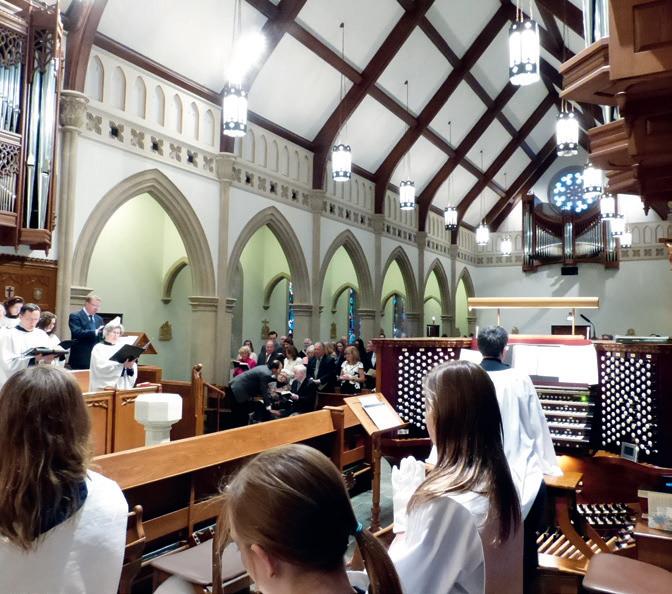
I’m working on inviting some choral scholars to join us next season, from local universities such as TCU (Texas Christian University). We also have plans for starting a children’s choir – they will rehearse on Wednesday evenings, and sing a little piece at the 9am service on one Sunday a month – probably the YOS (Youth Oriented Sunday) when kids are more involved with various parts of the service, such as reading the lessons and saying the prayers.
Looking after the choir library is another of my duties here – putting out music, making sure we have enough copies, repairing old copies, ordering new copies, preparing booklets of psalms and anthems, putting away music, and updating the catalogue when I order new anthems. Managing the various budgets is an additional task – the seven accounts are Worship

Commission Professional Expenses, Music Program, Organ and Piano maintenance, Sub Musicians, Choir Vestments, Music Program Assistants, and the Choirmaster Discretionary Fund. (There is a separate fund for choral scholars.)
We have a number of concerts at All Saints’ each season –mostly organ recitals, and a Christmas concert with the choir and a small orchestra of local musicians. Next year will be our 75th anniversary year, so we’re planning a few special events for that, including two concerts in collaboration with Fort Worth Opera, which is also celebrating its 75th anniversary.
When I first moved over here, I stayed with a delightful family (and two dogs, two cats, one turkey, one parrot, two ducks, and several chickens!) for a month, and then rented an apartment for a year, and now I’ve bought a house in Westworth Village, about 6 minutes drive from All Saints’. I’ve also bought a piano (a Steinway model B), and I have a dog too – a chocolate labrador called Daisy.
There are many similarities between my job in Oxford and my job here, not least because American Episcopal liturgies are similar to the Anglican services I played for in Oxford. But of course there are differences. One is that I am now working with a volunteer choir, rather than the boys, choral scholars (academical clerks) and professional singers (lay clerks) in the cathedral choir at Christ Church; I much prefer the volunteer choir here, because the atmosphere is fun and relaxed, although I do miss working with the kids.
the ‘Gloria’ during Easter. In Oxford, only the choir sang these movements – for example, Palestrina’s Missa Papae Marcelli or Byrd’s Mass for 5 voices. I do miss those beautiful Renaissance Mass settings, as well as the wonderful choral repertory for Mattins, such as Britten’s Te Deum in C major.
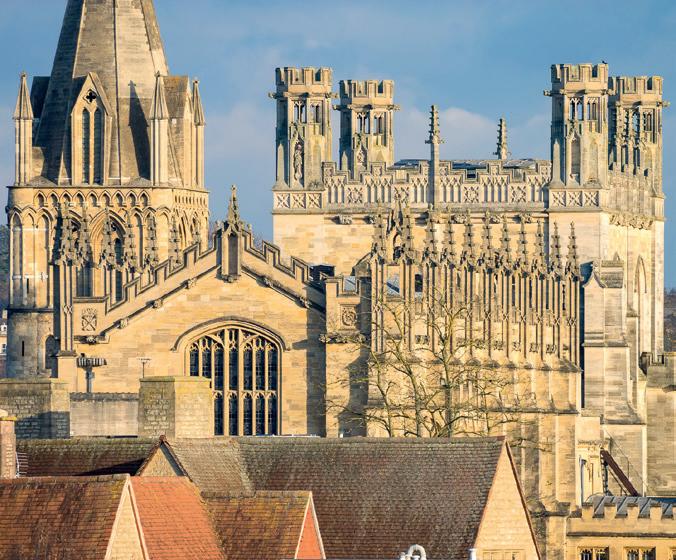
We have four services here on Christmas Eve, and no services on Christmas Day (actually there is a service at 10am on Christmas Day, but as there is no music, I’m not required to be there!). In Oxford, by contrast, we always had a festive Mattins and Eucharist on Christmas Day morning. The four services here on Christmas Eve are at 2pm, 4pm, 7pm and 10pm – quite an exhausting day! The first two services are more oriented towards families and children.
It’s very nice here at All Saints’ to feel part of a large church family, and I know most of the hundreds of parishioners who come to church every Sunday. Back at Christ Church, there were one or two regular members of the congregation, but most people were tourists or occasional visitors.
Aside from my work at All Saints’, I continue to give a few recitals – last year mostly around the US, but also in Hungary and Taiwan. I’m lucky that there is some flexibility in my job here, so I can arrange for a substitute, and I’m allowed to take a certain amount of time off each year. In fact, it’s rather easier to give recitals in the US now, because I can just fly to another city for one concert, and then come straight home to Fort Worth – whereas when I was living in Oxford, I had to make sure that I had a few concerts in a row, in order to make a transatlantic tour worthwhile. Talking of flying, it’s convenient that my local airport, DFW (Dallas Fort Worth), is one of the biggest in the country, so I can often fly somewhere directly, without having to change planes.
When I travel for concerts in other states, and say that I live in Texas now, the response is usually either, “Oh, I’m so sorry” (because plenty of Americans make fun of Texas and Texans) or “How’s the wall with Mexico going?”! But I love the lifestyle here in Texas – it’s quite relaxed and easygoing, and everyone I’ve met is warm and friendly. I used to ride horses when I was younger, so of course I’ve been on horses out here, wearing my cowboy hat and cowboy boots … although I’m not very good with a lasso or a gun yet! If I don’t say anything, I might pass as a Texan, but as soon as I open my mouth, my accent gives me away!
Another difference is that I choose all the music, including the hymns, for the services here; I did help Stephen (Darlington) choose the choral music at Christ Church, but the Precentor chose the hymns, so I had never chosen a hymn before I moved here! I enjoy choosing anthems and hymns which connect to the readings, and I like making certain links, such as playing a postlude based on one of the hymn tunes. And the organ voluntary before a service here is called the prelude; after a service it is the postlude.
A further difference is that here there are congregational settings of the ‘Kyrie’, ‘Gloria’, ‘Sanctus’, ‘Benedictus’ and ‘Agnus Dei’. We don’t sing all those movements each Sunday, but normally two or three, depending on the liturgical season; for example, we sing the ‘Kyrie’ and ‘Agnus Dei’ in Lent, and
There are many wonderful museums in the Metroplex (Dallas and Fort Worth are 30 miles apart, but the two cities have gradually grown together, and the whole area is now known as the Metroplex), including the Kimbell Art Museum in Fort Worth. There’s a Fort Worth Symphony Orchestra, and a Dallas Symphony Orchestra, as well as thriving chamber music societies in both cities. Last night, I heard the wonderful pianist Stephen Hough give a solo recital, and the Van Cliburn International Piano Competition takes place here every four years.
Oxford to Fort Worth was a big change, and many friends here can’t understand why I left the Dreaming Spires, but I don’t regret it for a second. If you like wide open spaces, hot weather, ‘the most prestigious classical piano contest in the world’ (Chicago Tribune), and rodeos, please come and visit!
What a remarkably self-effacing and personable man Alan Bullard is! Once, at a northern venue, the premiere of his new composition was the first item in the programme. After going up on stage to acknowledge the applause, Alan found he couldn’t remember exactly where he had been sitting – in fact, the hall seemed completely full. He later realised that, while he was on stage, ushers had admitted late-comers, one of whom had been shown to Alan’s seat. Never one to make a fuss, he stood uncomplainingly at the back of the hall for the rest of the concert!
Bullard has a significant catalogue of work in all genres, including orchestral and chamber music, but it is for his choral and educational output that he is particularly known. His compositional style might be called ‘approachable’ in the best sense, i.e. without compromise in its musical idiom. He has a practical outlook in terms of performability, catering for non-professional performers and allowing flexibility in his choral and instrumental scorings. When asked how his choral style has changed over the years he says, “I suppose my music has become more simplified – particularly in terms of a greater focus on the text.”

Seeking to identify works which illustrate this change in approach from complexity to relative simplicity, he volunteers his four settings of the evening canticles, conveniently spread throughout his compositional career. His first setting of the Magnificat and Nunc Dimittis (1992) is scored for unaccompanied SATB with divisions. It is quite a complex work and challenging to bring off but, as always, the musical language is attractive and rewarding for the singers.
His second Magnificat and Nunc Dimittis is The Selwyn Service, written for Sarah MacDonald and the choir of Selwyn College Cambridge. This dates from 2012 but is still firmly in the chapel choir’s repertoire, being performed as recently as the first Sunday in Lent this year. It is quite difficult technically, but there is also evidence of Alan’s later preoccupation with flexible scorings in that, unusually, it is designed to work equally well unaccompanied or with an organ accompaniment.
Alan’s third setting of the canticles is his Essex Service, which was commissioned for the RSCM Essex and East London Area Choral Festival at Brentwood Cathedral in 2015. It was originally written as a two-part service for sopranos/trebles and altos, with – optionally – tenors doubling the soprano part and basses doubling the altos, a layout which one wag has rather unkindly called (not, I hasten to add, in relation to this piece) ‘Bryan Kelly scoring’! In 2016, Alan recast the work as a genuine four-part SATB service and this version was
recorded by James Davy and the Chelmsford Cathedral choir. In this work there is a less discursive approach to setting the text and the musical style is cleaner and more concise, though not, as Bullard is quick to point out, ‘dumbed down’ in any way.
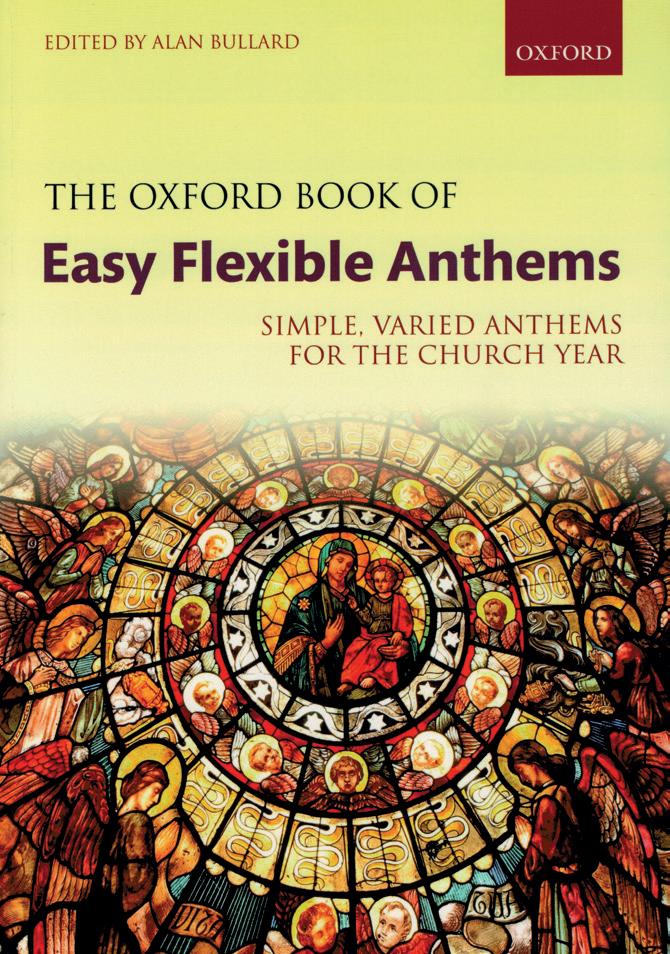
Bullard then went to the Royal College of Music, where he was taught composition by no less a figure than Herbert Howells. He has fond memories of Howells as a teacher – ‘A lovely man who was wonderfully supportive’, though his methods were not very pro-active, leaving it to Bullard to decide what to bring to show him, then carefully erasing or substituting a few notes to improve the proffered composition. Alan says: “It might not have suited everyone, but it was fine for me – I suppose I learnt from him through osmosis.” When Howells was unwell, Bullard was taught for a term by the formidable Ruth Gipps, always known as ‘Wid’ – “Though I wouldn’t have dreamt of calling her that!” he laughs. She was something of a shock after the laid-back Howells, but she encouraged Bullard to compose an orchestral work which she performed with her London Repertoire Orchestra. (Incidentally, it is strange that her really fine Magnificat and Nunc Dimittis for Westminster Abbey (1959) are hardly ever performed.) Gipps was quite unreceptive to any hint of modernism, such as sketches in 12-tone style, which she would dismiss out of hand, whereas Howells, who was clearly well aware of this music, would gently recommend Berg as a model rather than Webern!
After MA studies with Arnold Whittall at Nottingham University, a succession of part-time jobs followed before, at the age of 27, Bullard moved to Colchester Institute in Essex, where he was to stay from 1975 for 30 years. This time brought a new range of performance opportunities for him, such as writing for the Institute’s orchestras, choirs and chamber ensembles as well as for local groups like the Colchester Choral Society (Dance of the Universe, 1979) and the Colchester Chamber Orchestra (Sinfonietta, 1987), and for visiting groups such as Gemini (Lament, 1990) and the Vega Quintet (Dances for Wind Quintet, 1982).
Alan’s fourth service is his Colchester Service, which is included in The Oxford Book of Easy Flexible Anthems (2017), and flexibility is indeed the key factor here, with the music working as a unison service, hence it uses a narrow vocal range of only an octave, in two parts or for SATB, bringing the music within the capabilities of more modest church choirs. The text is changed too in that it is the Common Worship text that is used, not the words of The Book of Common Prayer, and the musical language, with its sensitive response to the words and easy, melodic flow, is altogether much simpler.
Bullard does not come from a musical family, although both his parents, Paul and Jeanne, were artists. He was born in London in 1947, and studied piano with Geoffrey Flowers at the Blackheath Conservatoire of Music before attending St Olave’s Grammar School, then near Tower Bridge, where he sang in the good school choir which performed ambitious works such as Messiah, the St John Passion – a lifelong love (in fact, a Dutch academic recently sent Bullard a detailed analysis of influences of the Passion in Bullard’s cantata Wondrous Cross – something the composer was unaware of!) – and more modern works like Vaughan Williams’ In Windsor Forest, and Delius’s On Craig Dhu. A particular influence was George Dyson’s In Honour of the City, of which Alan said, “It was thrilling for an 11-year-old to be part of such a huge sound, and the harmony really excited me!’
In terms of Bullard’s more extended works, five largerscale cantatas also conveniently illustrate his development. Wondrous Cross (2011) is a 30-minute Passiontide cantata, written for Lion Walk United Reformed Church in Colchester. The concept here was to provide something shorter than traditional Passions that the average church choir could attempt with relative ease. The thread binding the 16 short movements is the Seven Last Words and, perhaps unusually, the words of Christ are assigned to the full choir rather than a soloist. The congregation is actively involved too throughout the course of the work, rather in the manner of Britten’s Saint Nicolas perhaps, by joining in the singing of hymns (a familiar trait of Bullard’s longer works) such as ‘There is a green hill far away’ and ‘When I survey the wondrous cross’. Again, Bullard’s flexibility of scoring is apparent, with various combinations of strings, piano and organ allowed.
Wondrous Cross was later taken up by the choir of Selwyn College, and this led to a second cantata specifically written for them: O Come, Emmanuel (2012) – another substantial
Bullard does not come from a musical family, although both his parents, Paul and Jeanne, were artists.
work lasting some 35 minutes, this time on an advent theme and using the ‘O Antiphons’ as a connecting thread. Original plainsong melodies and, again, congregational hymns, are incorporated.
Alan’s third cantata, A Light in the Stable (2016) has a Christmas theme and this 35-minute work was written for Philip Brunelle and VocalEssence, Philip’s choir in Minneapolis, USA. Here again there is flexible scoring, for chamber orchestra and/or piano, and there are some congregational carols. Bullard mentions his delight at discovering that the two tunes usually sung to ‘Away in a manger’ will obligingly combine contrapuntally, as will the tunes of ‘While shepherds watched’ and ‘Go tell it on the mountain’, and those of ‘The first nowell’ and ‘Of the Father’s love begotten’ – an interest and facility in counterpoint which surprises me not at all, having been in receipt of delightful Christmas cards from Alan over the years which invariably featured an ingenious seasonal round or canon!
in 2008. Needless to say, this generated huge international interest in Alan’s music, particularly in the USA, from where he has received many commissions.
Alan feels a rather different style of church music is preferred in the USA, with an inclination towards short, text-focused works which do not ‘get in the way of the worship’, rather than the more traditional European discursiveness of, say, Palestrina or the lengthy fugues in Mozart masses. Many of his works have proved very popular there, and recent American commissions include two short works: This is the key and Song to the moon. Again, these pieces show a typically attractive, folklike melodicism, while their unison textures can be optionally expanded to two parts to cater for choirs of different sizes and abilities. They have also been taken up by UK choirs, and Bullard, still actively involved in writing for youth choirs, is currently working on a commission on a conservation topic for the Romsey Festival.
The fourth cantata, Psalmi Penitentiales (2016) is a 20-minute work for choir and organ written for Chelmsford’s Waltham Singers. More serious in tone, this work has a Passiontide text in Latin and is based on the Ubi caritas plainsong. Despite being more complex than some of Bullard’s other works, its striking harmonic design and easy lyricism make it very rewarding to sing.
Alan’s fifth work is the recent, shorter (15-minute) unaccompanied cantata, Images of Peace (2018), commissioned by Colchester Choral Society, in which the text, encouraging peace and understanding, is taken from a variety of sources, not focusing on any one particular creed or belief.
A significant moment occurred for Alan when Stephen Cleobury programmed his Glory to the Christ Child in the King’s College Service of Nine Lessons and Carols in 2007, and again
Alan is very well known for his educational music and he is enthusiastic about encouraging young people at all levels of ability. His compositions for both young and adult learners of piano and other instruments are widely known, for instance the Joining the Dots sight-reading course (eight volumes for piano, and five for each of guitar, violin, and singing) for ABRSM. There is also Pianoworks (2007-14), written jointly with his wife Janet, a series aimed at adult learners, now running to as many as nine volumes. As with all his educational work, there is an acute awareness of the exact technical requirements for each particular grade, but no sense of the patronising ‘writing down’, and no compromise in compositional integrity. As Alan says: “There is as much satisfaction in writing a really
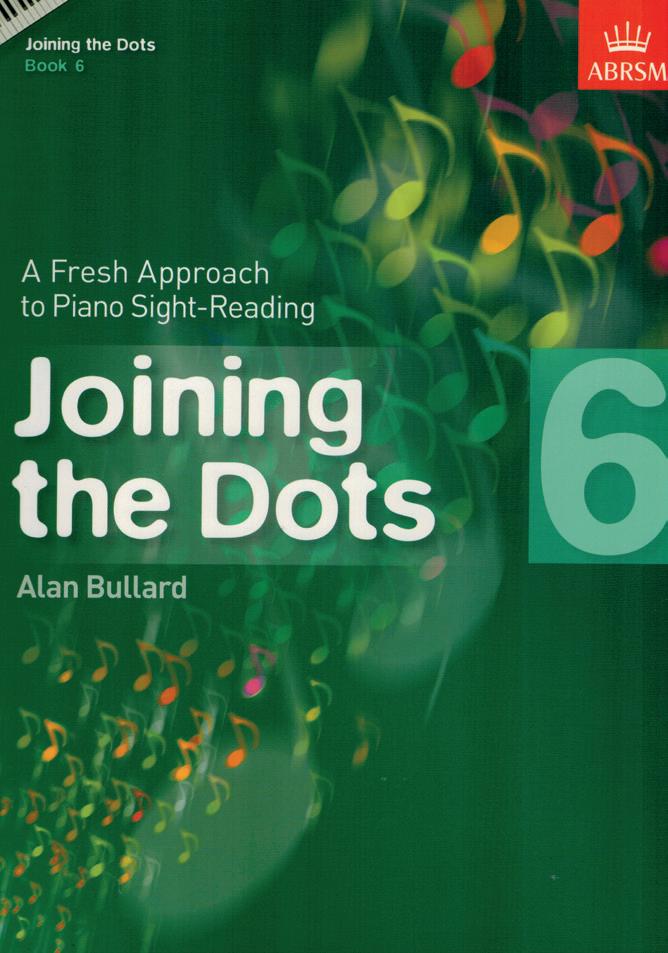
Alan is very well known for his educational music and he is enthusiastic about encouraging young people at all levels of ability. His compositions for both young and adult learners of piano and other instruments are widely known, for instance the Joining the Dots sight-reading course (eight volumes for piano, and five for each of guitar, violin, and singing) for ABRSM.
good Grade 1 piano piece as in writing something for a professional performer.”
There are also more advanced piano compositions, of course, for instance his wittily titled 12 or 13 Preludes for Piano (Book 1, 2017) consisting of a prelude in all the major keys (number 1 may be repeated at the end, hence 12 or 13!) and Book 2 contains the same in all the minor keys. The idea was to limit each prelude to only two pages of music, to include plenty of contrast, and ‘to ensure I could just about play them myself!’ – which, knowing Alan’s huge facility as a pianist, is perhaps a slightly daunting prospect for the more humble!
Bullard has composed relatively little for solo organ apart from contributions to Oxford Hymn Settings for Organists (2014-20) – a six-volume series of treatments of well-known hymn melodies in a variety of styles, and a welcome practical resource for organists. However, many of his choral works do feature large-scale organ accompaniments of course, as in the recent anthem Make a joyful noise unto the Lord (2019), written for the re-dedication of the organ of St Guthlac’s in Lincolnshire after a rebuild.


Alan Bullard is certainly a composer who has made a hugely significant contribution to church music. He is always concerned that his compositions should be eminently practical in performance, approachable in idiom and, most importantly, enjoyable for the performers – what a charmingly modest man, and what a fine composer too!
Originally from Flintshire, MARK BELLIS was appointed music lecturer at Colchester Institute in 2005, taking over from Alan Bullard on his retirement. He was Course Leader there for the BA Music programme, also teaching composition and music history for 13 years before retiring in 2018. He obtained a PhD in Composition from Durham University and subsequently taught at sixth-form colleges in Sheffield and Bournemouth before moving to Colchester. Mark is still active as a composer and choir trainer, conducting the Colne Singers, a Visiting Choir now in its 11th year, and Cambridge’s Erasmus Chamber Choir. He is FCM Diocesan Representative for Chelmsford.

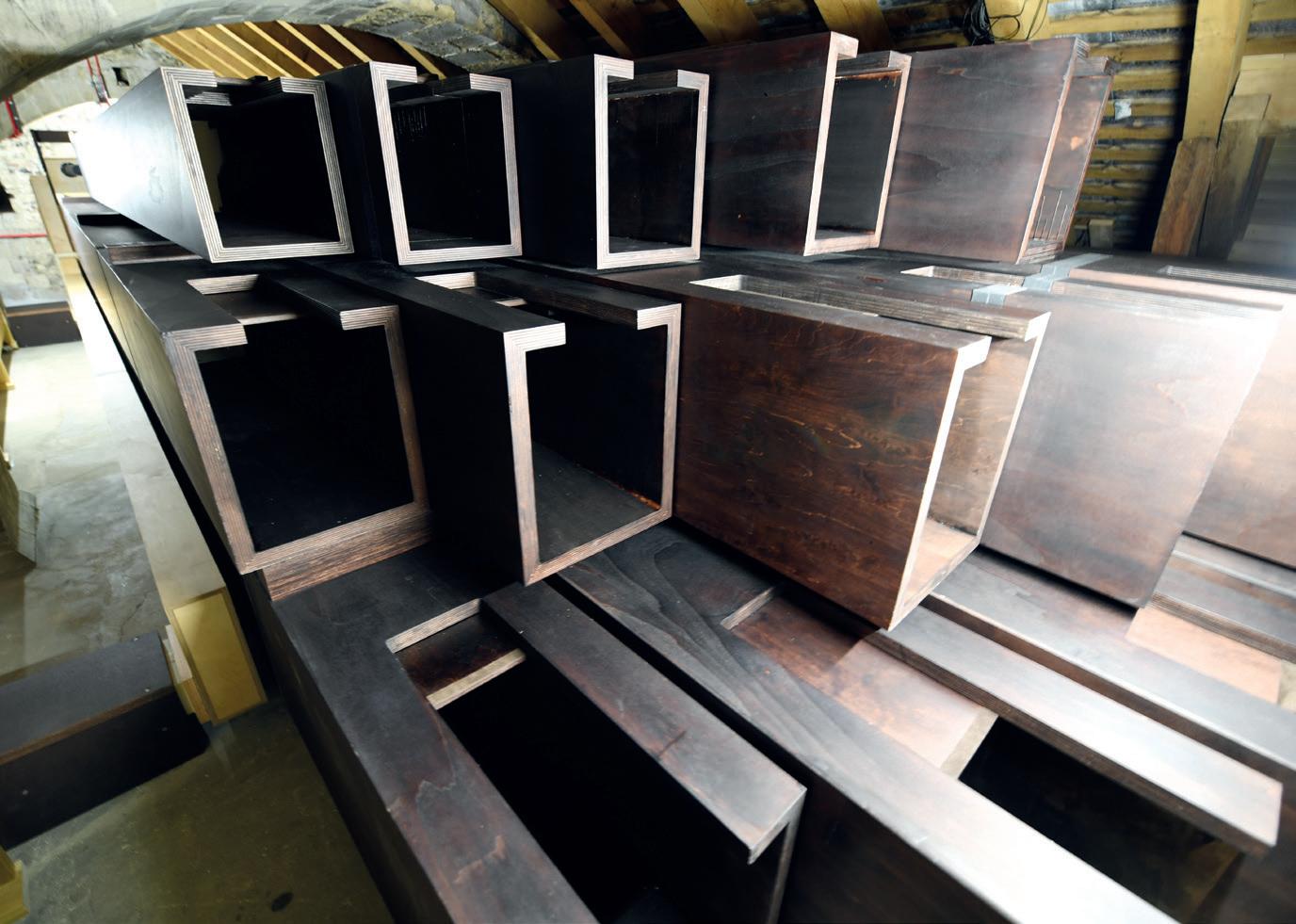

‘Dream on,’ I was told, some 15 years ago, when the question of revitalising the organ was raised. In 1979 the organ had been reduced in size from four to three manuals and situated at the west end of the quire triforium; the thinking was that this might help the sound to carry to the nave. It was, however, found to be less effective than expected and, just in time for the Enthronement of Archbishop Runcie in 1980, the small nave organ was added. The console remained on the pulpitum screen, giving a good vantage point both east and west but with little contact with the choir in the choir stalls. So, the dream began in 2005 and over the next five or six years a scheme was refined.
As Canterbury Cathedral is really two acoustic spaces, we were faced with the choice of either a huge project – to address both the quire and the nave – or something more manageable. It soon became obvious that we should address the quire organ first and allow the nave to be a second project in its own right. We needed to make the organ more versatile and more able to serve the needs of the daily programme of sung services in a more colourful way, as befits such a large and internationally important building. Because the choir stalls face towards the centre of the long quire space, the organ needed to be positioned to blend with and support the choir in the same area. The Swell, situated at the western end of the quire, i.e. the area furthest away from the choir stalls, needed to be moved so that it could be used for psalm-singing and the large amount of choir accompaniment that takes place in the cathedral. At the same time, substantial congregations
regularly require support over a longer space, rather than have the organ sound reaching towards them from a distance. The famously unobstructed architecture of the quire could not be disturbed, so the organ had again to be placed in the triforium, but this time it would be incorporated in the north side, as well as the south, for the first time.

Harrison & Harrison were appointed to undertake the work, following a fascinating tender process. Three firms of organ-builders produced detailed designs which took into account the strict limitations of the spaces available and also considered the impact on the liturgical and musical life of the cathedral. There were of course some similarities between the submissions, but all three firms approached the challenges with such imagination and energy that it was hard to choose a ‘winner’!
The disposition of the departments of the organ was quite easily refined, and using both sides of the triforium allowed the design much more space, even though the north side has a lower roof height. More than a year of temperature surveys gave everyone full confidence that the organ would work well in this new shape, with most of the new work placed in the departments on the north. All of the Willis pipework contained in the 1979 organ was retained and new ranks were added, keeping true to the Willis model throughout. A new Solo organ was built and the fine 1886 Tubas incorporated. These have been separated and moved, however, from the west (nave) end of the organ to the opposite east end and
enclosed in a box to give greater expressive possibilities. A new unenclosed Choir organ (as Willis provided) allowed some of the former ranks to be re-modelled but, essentially, it is new. At the western end of the north triforium a new Transept Great chorus allows core organ tone to reach the congregation at that end of the quire. One of the biggest (literally) additions to the organ has been the re-establishment of the 32’ Double Open Wood, now lying on its side in the north-west bays of the triforium. In addition to this, seeking to provide as much breadth as possible, we added a stopped 32’ Sub Bourdon on the south side for the soft, low rumble so often an essential element of a cathedral sound. The photograph in the cathedral archives of the previous open 32’ pipes being sawn up in the 1960s remains a harrowing sight! We have been without a full-length 32’ flue since that time, relying only on Willis’s tremendous 32’ reed.
For the performer, having to play at a distance from the main sections of the organ – especially the Pedal – had always been unsatisfactory. It was something every organist at the cathedral has learnt to overcome but for those who had but a short time to acclimatise it was a problem. So the console has been moved. It is now in the north quire aisle just behind the Cantoris choir stalls. It gives a clear and immediate awareness of the organ, especially the Great, Swell and Pedal on the south side, and also offers the opportunity, for the first time in many years, for the organist to be close to and hear the choir. The new console is beautifully designed, with everything where it is to be expected. It is on a new platform designed by Caruso St John architects and, being in the aisle, gives the organist an opportunity to see processions and also to hear the nave organ more directly.
The result of all this is an instrument of 89 stops (including those of the nave organ) which will serve the liturgy and music of the cathedral with colour, flexibility and the opportunity to thrill and enchant. The new Solo is full of completely different sounds (a fine French Horn, and a striking new Ophicleide, which more than matches the Willis Tubas on the opposite side). The new Choir department brings softer tones along with a new Trumpet and a revoiced Corno di Bassetto from the earlier organ. Using these two together brings a further, very useful, tone colour as with so many of the stops on the Solo in combination. The sound is overwhelmingly Willis, and beautifully united. We have continued to use the majority of the pipework which was made by Samuel Green in 1784 and which has been incorporated ever since. One rank, which it was thought best to replace, is displayed in a pipe-rack on the south side of the organ chamber.
We are hugely grateful to Dr William McVicker for such a long period of encouragement and dependable advice, and for steering the project through all sorts of twists and turns. The staff of Harrison & Harrison have been such a joy in collaboration throughout, and mention must be made in particular of Andy Scott, for his amazing attention to detail and his pride in what has been achieved. [Readers will remember Andy’s article on voicing and organ-building which appeared in CM 2/17 – Ed.]
The opening recital would have been given by Thomas Trotter on 2 May, but this will obviously not now take place. All being well, there will be a series of recitals later in the year by the cathedral’s own team. Although an answer for the nave is still in the distance, my initial dream has been realised.
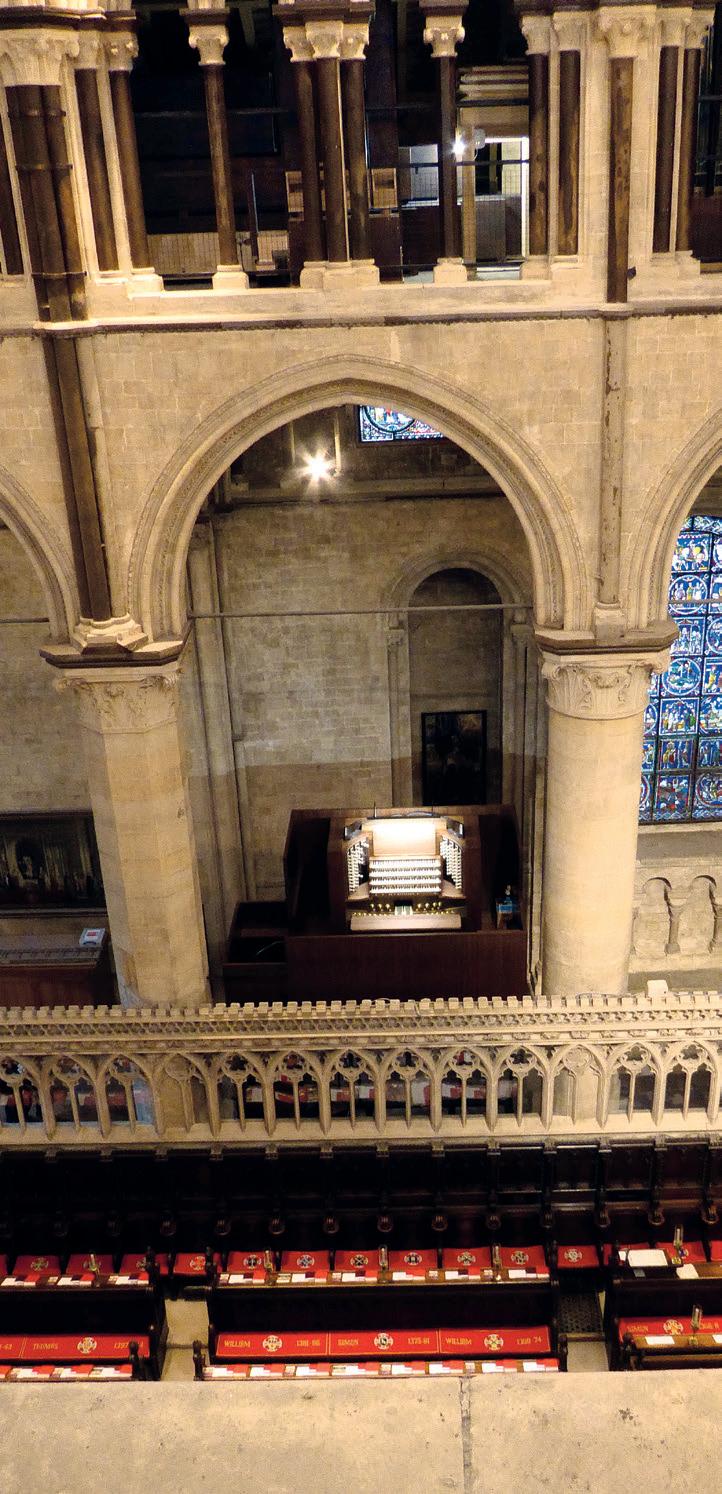
A detailed specification of the ‘new’ organ can be found on the Harrison & Harrison website.
DAVID FLOOD has been Organist and Master of the Choristers at Canterbury Cathedral since 1988, during which time he has overseen the music for the enthronement of no fewer than four Archbishops of Canterbury.


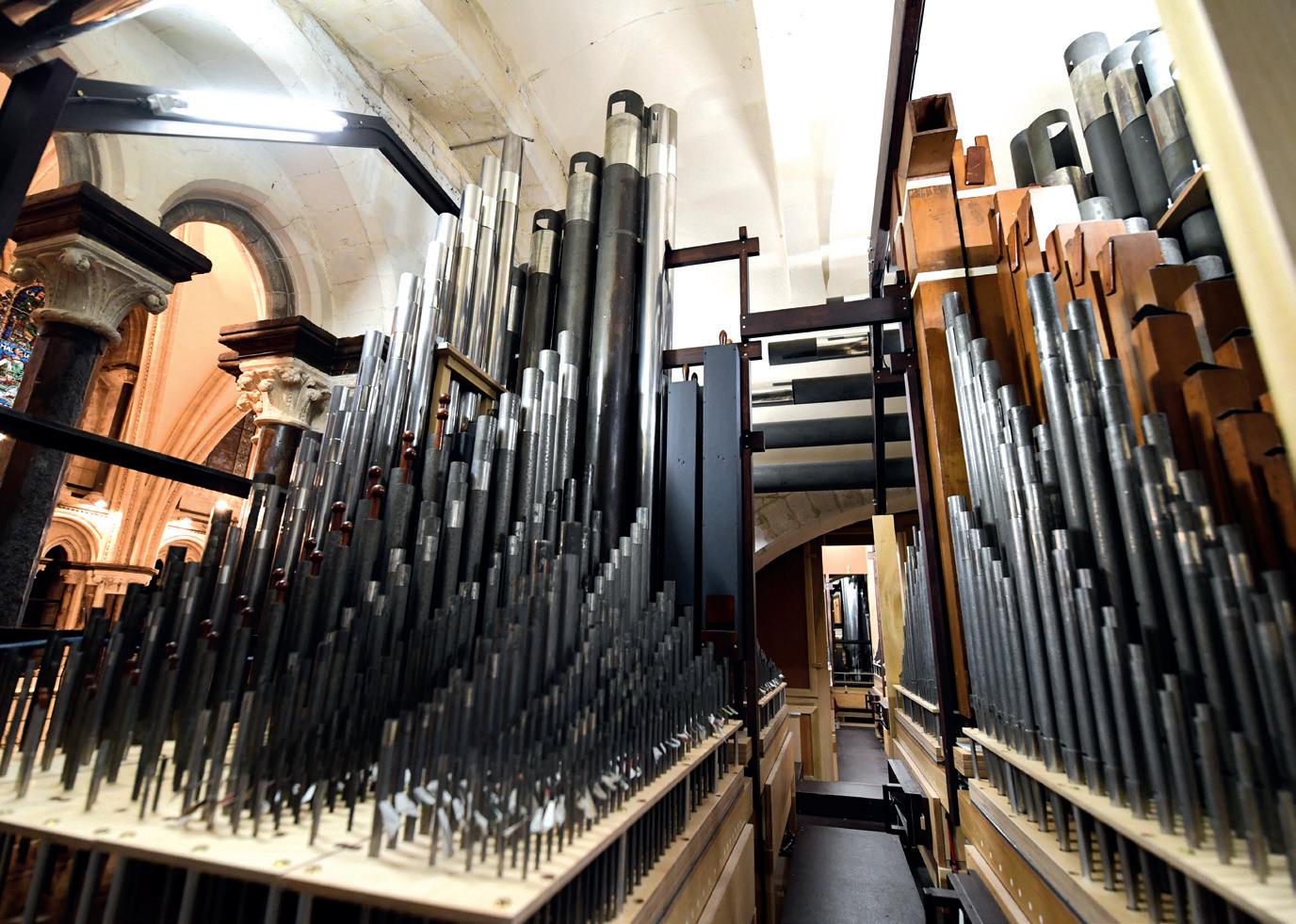

The distinguished choir director, organist and composer, Colin Mawby, died unexpectedly in Dublin in November last at the age of 83, just two days after the death of Sir Stephen Cleobury, who succeeded Mawby as Master of Music at Westminster Cathedral on the latter’s departure from the post in 1976.
Mawby’s precocious musical talent was evident from an early age (he had perfect pitch) and as a Roman Catholic he was directed to Westminster Cathedral where he was admitted as a chorister on the reopening of the cathedral choir school by Cardinal Griffin in 1946; there, his musical talents were nurtured under George Malcolm.
Mawby assisted Malcolm in accompanying the choir from the age of 12, and it was due to the latter’s influence that he was admitted to the RCM at the unusually early age of 15, where his teachers were John Churchill, Richard Latham and Gordon Jacob. Mawby did not take easily to the rigors of academic music study, and so left the College without obtaining any formal qualification. His undoubted talent was, however, recognised and he went on to hold positions as choirmaster of the Church of the Assumption and St Gregory, Warwick Street, and subsequently at Portsmouth Cathedral, returning to London to work at St Ann’s, Vauxhall. He was then invited back to Westminster Cathedral in 1959 as assistant to the then Master of Music, Francis Cameron, whom he succeeded two years later at the age of 25, a position he was to hold until his departure from the cathedral in difficult circumstances in 1976.

The mid-1960s was, however, a period of turmoil in the Roman Catholic church, as the liturgical reforms of Vatican II took hold, with the vernacular language being accorded equal status to Latin. Progressive elements in the Westminster Cathedral administration considered that the cathedral church should be a beacon for the future rather than a bulwark against change, and that the very traditional liturgy of the cathedral, of which the choir was the mainstay, needed urgent aggiornamento. Mawby and many like-minded persons, including musicians of the calibre of Benjamin Britten and Lennox Berkeley, reacted with dismay to the suggestion that this uniquely precious jewel in the crown of English Roman Catholic church music should be diluted in any way, and so battle lines were drawn. Through most of Colin’s time as Master of Music relations between the cathedral clergy and himself were therefore fraught. Unfortunately for him, Cardinal Heenan, the archbishop with whom Mawby had warm relations, was in declining health through the early 70s, and was not in a position to exert on his clergy the restraining authority he would certainly have shown had his health been more robust. (He died in 1975, and Mawby directed the music for his funeral, one of his last acts before his acrimonious departure from the cathedral in 1976, soon after the installation of Cardinal Hume.)
Mawby entered into his new job with energy and with a deep sense of commitment to maintain and enhance the high choral standards of his predecessors, particularly those of George Malcolm, who pioneered the development of the choir’s unique sound along continental lines as opposed to the prevailing English cathedral choral sound; he considered the former to be more appropriate to the choir’s staple repertoire of Gregorian chant and classical polyphony, both English and continental, adding to the repertoire as musicological researches of the 60s and 70s made available in good performing editions numerous hitherto unknown treasures of renaissance polyphony.
From Westminster Mawby moved to the Church of the Sacred Heart, Wimbledon, and he also taught at Trinity College of Music from 1975 to 1981 until, at the age of 45, he moved to Dublin as Choral Director for Irish Radio and Television (RTÉ), where his duties involved directing the station’s professional choir, the RTÉ Singers (later the RTÉ Chamber Choir), and developing choral policy for the Irish national broadcaster. Although before moving to Dublin he had no connection whatsoever with Ireland, he immediately took to the country and its people, and the Irish in turn welcomed his eccentricities of manner and genuine warmth of personality. He entered with customary energy into his new position and quickly set up a large-scale amateur choir of high standard, the RTÉ Philharmonic Choir, to complement the smaller professional group, and he also established the RTÉ children’s choir (Cór na nÓg). His work at RTÉ was distinguished and highly regarded, but unfortunately, due to financial cutbacks, the professional chamber choir was disbanded by RTÉ in 1991 (although it was subsequently reconstituted as the independently funded National Chamber Choir, which Mawby directed until retiring from the position in 2001).
Colin Mawby only began to compose seriously at the age of 52. Up to then he had composed occasionally and ‘to order’. The
Mawby’s precocious musical talent was evident from an early age (he had perfect pitch) and as a Roman Catholic he was directed to Westminster Cathedral where he was admitted as a chorister on the reopening of the cathedral choir school by Cardinal Griffin in 1946 ...
motivation was economic: he had by then married Beverley Courteney and had two young sons, Benedict and Clement, and he was concerned to provide for their future.

He became quickly recognised as a composer with a unique facility for writing for voices. He knew from long experience as a choral singer and conductor ‘how choirs work, how they make sounds’, as he put it, and he also admitted to learning, from long dealings with them, ‘what professional singers can do’. Plainchant was a primary influence on his compositions and is reflected in the plasticity of his linear writing, which he regularly combined with spiky, chromatically dissonant harmonies, an attractive combination, if a little repetitive when over-used. He also became known as a composer who could deliver promptly to order, and so the greater part of his oeuvre consists of works that were commissioned for a celebratory occasion. His choral output is vast, consisting of some 40 Mass settings, numerous motets and other music specific to the Catholic liturgy, and he is published by an array of international music publishers. His music has gained greatest traction in the Catholic parts of Germany, Italy and the USA, while in Britain he is well known and respected but relatively seldom performed. There are, however, a couple of gems which already have claimed a place in canonic church repertory: his SATB setting of Ave verum corpus and his haunting setting of psalm 23 for solo or unison treble voices. In addition, there are two children’s operas, five song cycles, and a number of works for organ, including two organ concertos, few of which feature in contemporary recital programmes.
For the last decade or so of his life Mawby divided his time between London, to which he had partially returned for family reasons, and Dublin, where he had forged so many personal and musical friendships. He was, for example, composer-inassociation at the city’s Catholic pro-cathedral for three years, writing settings of the three-year cycle of responsorial psalms and gospel acclamations for the cathedral choir’s weekly usage.
His last formal position was as Organist of the Carmelite Church in Dublin’s Whitefriar Street, and it was there that his Requiem was celebrated before a capacity congregation and at which Martin Baker was one of the organists, his presence testifying to Mawby’s reconciliation with Westminster Cathedral. This had been effected some years earlier and was given public expression by the conferring on him of the Knighthood of St Gregory by Pope Benedict in 2006.
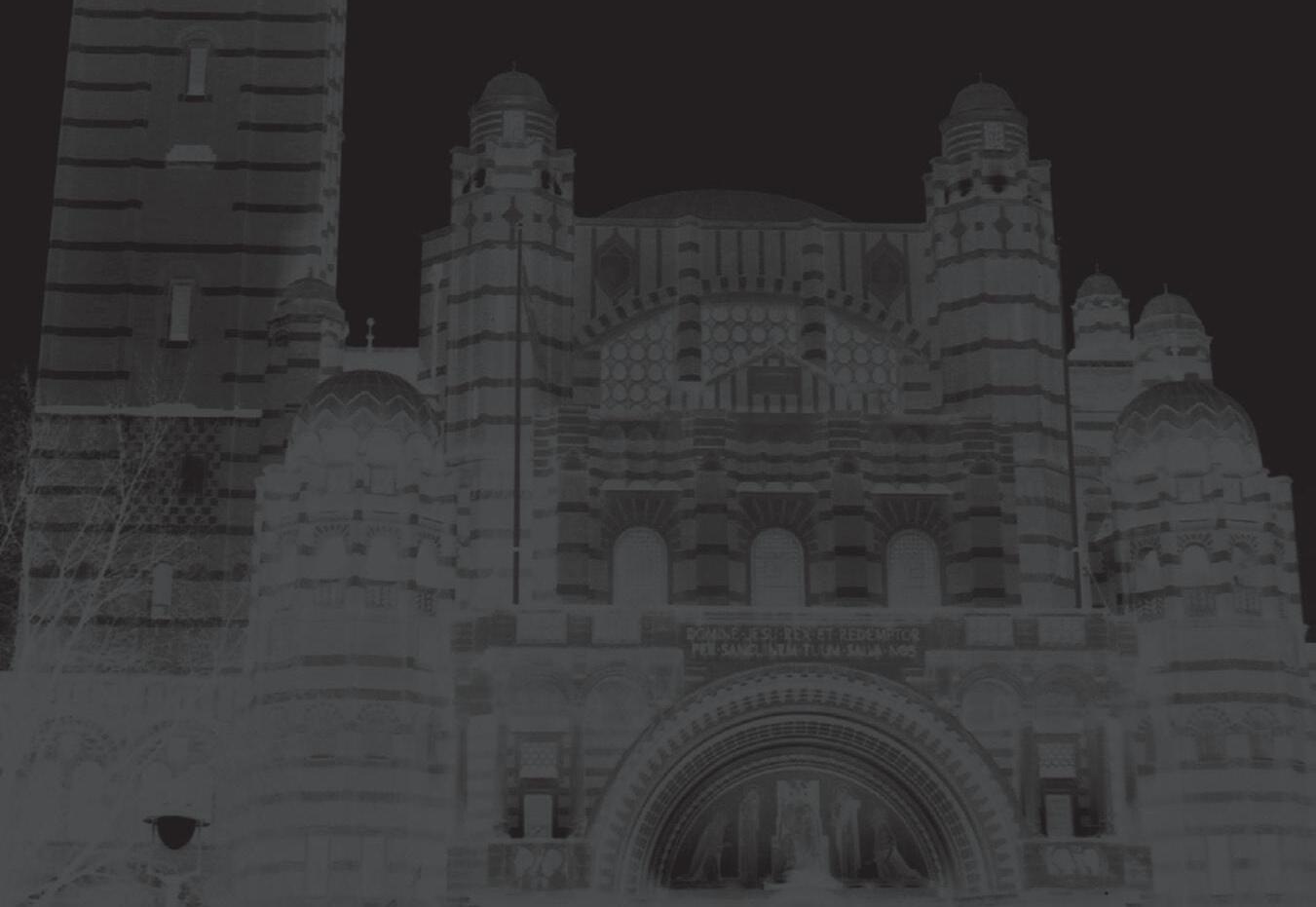








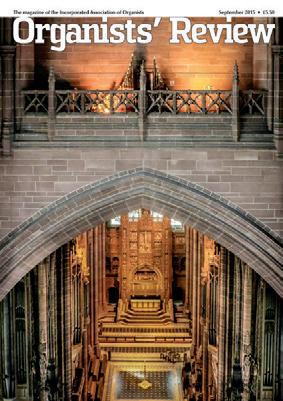

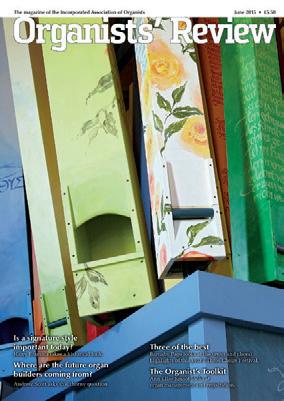

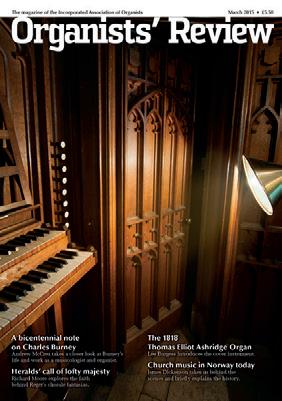



















The university city of Heidelberg, twinned with Cambridge, has a wealth of classical music on offer, including not just German but also English choral music. One weekend in February I attended a performance of Schubert’s last Mass, the E flat – a masterpiece, which leaves us to speculate on what else he might have composed had he lived to a good age, like Bach (65) or Handel (74), instead of dying tragically young at 31. This performance was on a Saturday evening; the next evening, at a different church, a large and very good student choral society sang Brahms’s Requiem, with accompanying small orchestra. The Schubert evening was interestingly and unusually arranged,
with parts of his E flat Mass, sometimes looked on as a requiem, being interspersed with other music, to make a kaleidoscope sound of great but harmonious variety. Starting with Henry Purcell’s anthem Thou knowest, Lord, (from his Queen Mary Suite), continuing with Schubert’s own early (aged 18) Mass in G major, then the first movement of his Unfinished Symphony; an alto solo by Max Reger, Meine Seele ist still, and with Mendelssohn’s Verleih’ uns Frieden near the end. The different items were run through, without any break, with the E flat Mass performed in the middle of the concert, with however a (controversial) 15-minute interval after the ‘Kyrie’ and ‘Gloria’.
English choral music was predominant some weeks earlier in three different concerts. To the fore was Elgar’s masterpiece The Dream of Gerontius, rarely sung in Germany. This was a strong performance by three combined choirs, two from Heidelberg, the university youth choir and the Anglisten choir, together with a choir from the town of Trier. The work was performed in each place on successive evenings, to enthusiastic receptions and critics’ acclaim. The Gerontius solo role was powerfully and dramatically sung by Peter Davoren from Britain, a frequent soloist for this in the UK. However, it was new territory for most of the singers, although they had youthful enthusiasm on their side and were ably conducted by Christoph Andreas Schaefer, director of music at the Heiliggeistkirche, Heidelberg’s biggest and most important church
For the next concert, a week later on Advent Sunday, in the nearby town of Eberbach, I was able to sing in two of John Rutter’s pieces, Magnificat and Mass of the Children. Rutter’s works are becoming increasingly well known in Germany. In fact, he was awarded the Prize of European Church Music in the nearby town of Schwaebisch Gmuend during a festival last July, for his great services to sacred music. Though sometimes challenging for amateur choral societies, his music

is accessible – the Magnificat and the Mass of the Children have texts in English (some of it 15th century) and Latin. After some difficult rehearsals, the performance was a success, the adult sopranos’ intonation problems having been largely overcome, while the children sang their parts accurately and by heart!
On that same evening, Handel’s Messiah was performed in English by the Neumayer Consort in Heidelberg under their conductor, Beate Rux-Voss. This was Handel’s original 1741 version for the first performance in Dublin in 1742. Although Messiah is usually sung in German here, it is also quite often performed in English.
The fourth concert brought the interesting juxtaposition of Handel and J S Bach, both born in the same month, March 1685, in cities only 22 miles apart – Halle an der Saale and Eisenach! The concert portrayed a fictional meeting between the two great masters, dramatically staged, with a theatrical prodigious meal, (gluttonously enjoyed by Handel)! The encounter, attended by Handel’s friend and secretary, a faithful factotum, Johann Christoph Schmidt (known as John Christopher Smith when he lived in England), was interspersed with examples of their music, sung on this evening by the local choral society in Neckargemuend, near Heidelberg. The supposed meeting (in Leipzig in 1747), never actually took place – their paths never crossed – and what a missed opportunity in musical history! If it had (according to this version), sparks would have flown, each composer trying to exert his superiority, initially claiming to know nothing about the other’s music. (By the end, both admitted they had followed the other’s musical progress in detail!) Bach boasted of his permanent status and reputation as a composer and local Kantor in Leipzig, churning out works for each Sunday’s service at St Thomas, and with a large family to feed. Handel (richer and apparently more successful), by now in England, preened himself on the patronage and personal friendship he enjoyed with King George I, whom he had followed over to London from Hanover after the accession of 1714. Yet Handel seemed to be jealous of Bach providing for his large, musical family, whereas Handel had no one.
On the infirmities of advancing old age, both men were now 62 (Bach had another three years to live, Handel another 12), Handel said it was terrible for Bach to be going both deaf and blind, and unable to see his wife. Bach retorted, “Well, my children are too loud anyway, and I know very well what my wife looks like!”
This of course is fictional; however, we know that, in addition to Bach, unfortunately Handel was also blind for the last six years of his life.
HUGH HUDSON, who is a retired radio broadcaster and UN Information Officer now living near Heidelberg, was a chorister at Lichfield Cathedral, a pupil at Radley College, and is a modern languages graduate of New College Oxford. He sang in the Oxford Bach Choir under Dr Sydney Watson, and later in the Bach Choir under Sir David Willcocks and David Hill, and also in the London Philharmonic Choir under Neville Creed.

Croydon Minster, still known to many as Croydon Parish Church, is steeped in history. Apart from being a place of worship of considerable age (it is mentioned in the Domesday Book), there was a close link with the Archbishops of Canterbury during the Tudor period, as their summer residence of the time – the Old Palace – is just next door. It should come therefore as no surprise that six archbishops are buried at the Minster and one of them, Archbishop John Whitgift (c.1530 – 1604), had a particular interest in Croydon and left a considerable amount of money for the education and care of the people of Croydon. His vision continues today under the auspices of the John Whitgift Foundation, which plays an important role when it comes to the choirs of Croydon Minster.
The Minster has always had a strong choral tradition and many of my eminent predecessors are well-known figures in the world of English cathedral music: Derek Holman, Roy Massey, Michael Fleming, David Brookshaw, Simon Lole, Carl Jackson, Peter Nardone, Nigel McClintock, Andrew Cantrill and, going back almost two centuries, Thomas Attwood Walmisley. For a number of years there has been a strong connection with the RSCM, too, with Addington Palace
almost on our doorstep (incidentally, Martin How still plays the piano every morning at the Minster and continues to compose wonderful things – he is a great supporter, mentor and friend). Traditionally, the Warden of Addington Palace was also Director of Music at Croydon Minster, and that collaboration proved to be a great model for many years. In 2012, the headmaster of Whitgift School (part of the John Whitgift Foundation), Dr Christopher Barnett, and the vicar of Croydon Minster, Canon Colin Boswell, agreed that the position of Organist and Director of Music at the Minster should be combined with that of Director of Choral Music at the school. With Croydon Minster having just received its new honorific, aspirations on both sides were high, and quite rightly so: it was agreed that there should be sung services during the week, in addition to concerts, international choir tours, recordings and broadcasts, all worthy of a minster church. This sense of raising the bar, of taking things to the next level, was what attracted me to Croydon.
When I arrived at the Minster, it was clear that some of the initiatives my predecessor Andrew Cantrill had put in place had already set the music at the church on the right trajectory: the boys were singing Evensong every Tuesday and the girls

did the same on Wednesdays. However, whilst Croydon is certainly not short of talented children, we needed to find a new way of ensuring the steady recruitment and training of boy and girl choristers, as well as male and female choral scholars. Carol Jewell, headmistress of Old Palace girls’ school (located in the former Old Palace and also part of the John Whitgift Foundation) and a member of the Minster Choir, agreed to offer choral scholarships to girls from the school who wanted to sing in the Minster girls’ choir; Whitgift School agreed to a similar arrangement for their boys. There has always been (and continues to be) a strong sense that both the boys’ choir and the girls’ choir should remain open to children from other local schools as well, and our two treble lines are made up of half the children coming from the foundation schools and the other half from local primary and preparatory schools. This model is not perfect and may not work in other places, but it works very well here in Croydon! Let me be clear: recruiting choristers from different schools has definitely become more challenging over the past years, with lots of children having already signed up from an early age to a plethora of clubs, sport activities and (particularly in Year 5) external tutoring sessions for 10+ and 11+ entry exams. One has to work hard to convince parents of the benefits of the English choral tradition, but on the whole, it can be done and it works. We run ‘Be a Chorister for a Day’ events and regularly visit about 20 schools during the year, offering
‘golden tickets’ to promising young singers (I’m grateful to Alex Berry from Bradford Cathedral for that tip!). All of this is hard work, but it does pay off and we currently have 25 boy choristers and 26 girl choristers on our register.
Whilst recruiting choristers is not so much of an issue at Croydon, attracting volunteer adult singers certainly is. Singers need to be very good sight-readers, and finding suitable volunteers of that calibre in London has become increasingly difficult. At the Minster we have a number of
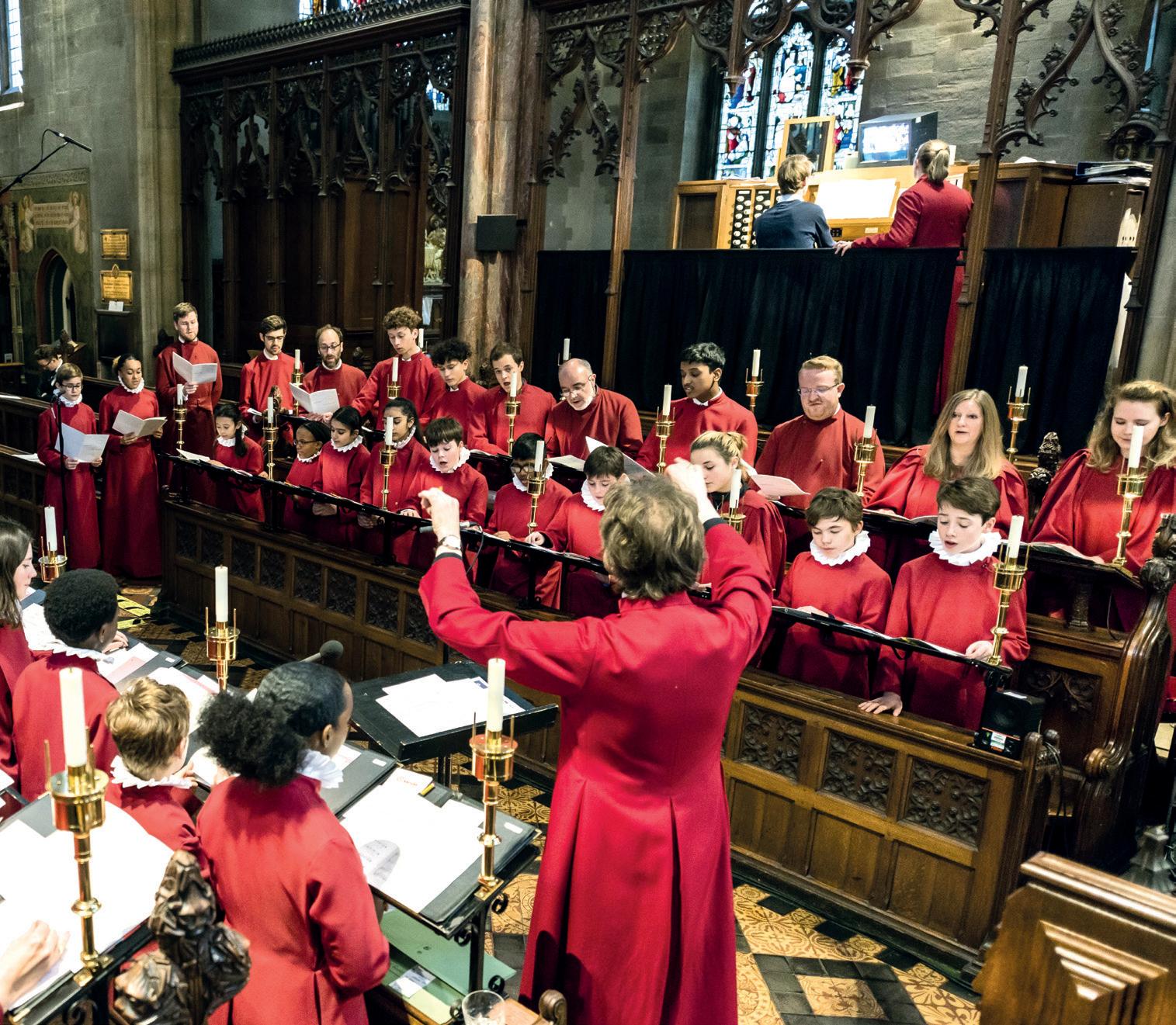
We run ‘Be a Chorister for a Day’ events and regularly visit about 20 schools during the year, offering ‘golden tickets’ to promising young singers
(I’m grateful to Alex Berry from Bradford Cathedral for that tip!).
excellent semi-professional volunteers but not enough to fill all the vocal parts, and shortly after I joined we looked at different ways of creatively filling the back row of the choir-stalls in order to maintain our cathedral-style choral tradition, and at the same time not turn the adult singers into an exclusive group of professional singers only (which we wouldn’t have been able to afford anyway!). The first step was retaining the boys when their voices broke, and we knew this would only work if the boys felt very much at home at the Minster and regarded their singing in the choir as a crucial part of their social life. Regular cathedral visits, concerts and recordings soon helped galvanise the boys, and girls, and we’ve been able to build up a very capable group of male and female junior choral scholars who form the basis of our back row today. In addition, it was possible to convince the Minster and our two other stakeholders (Whitgift and Old
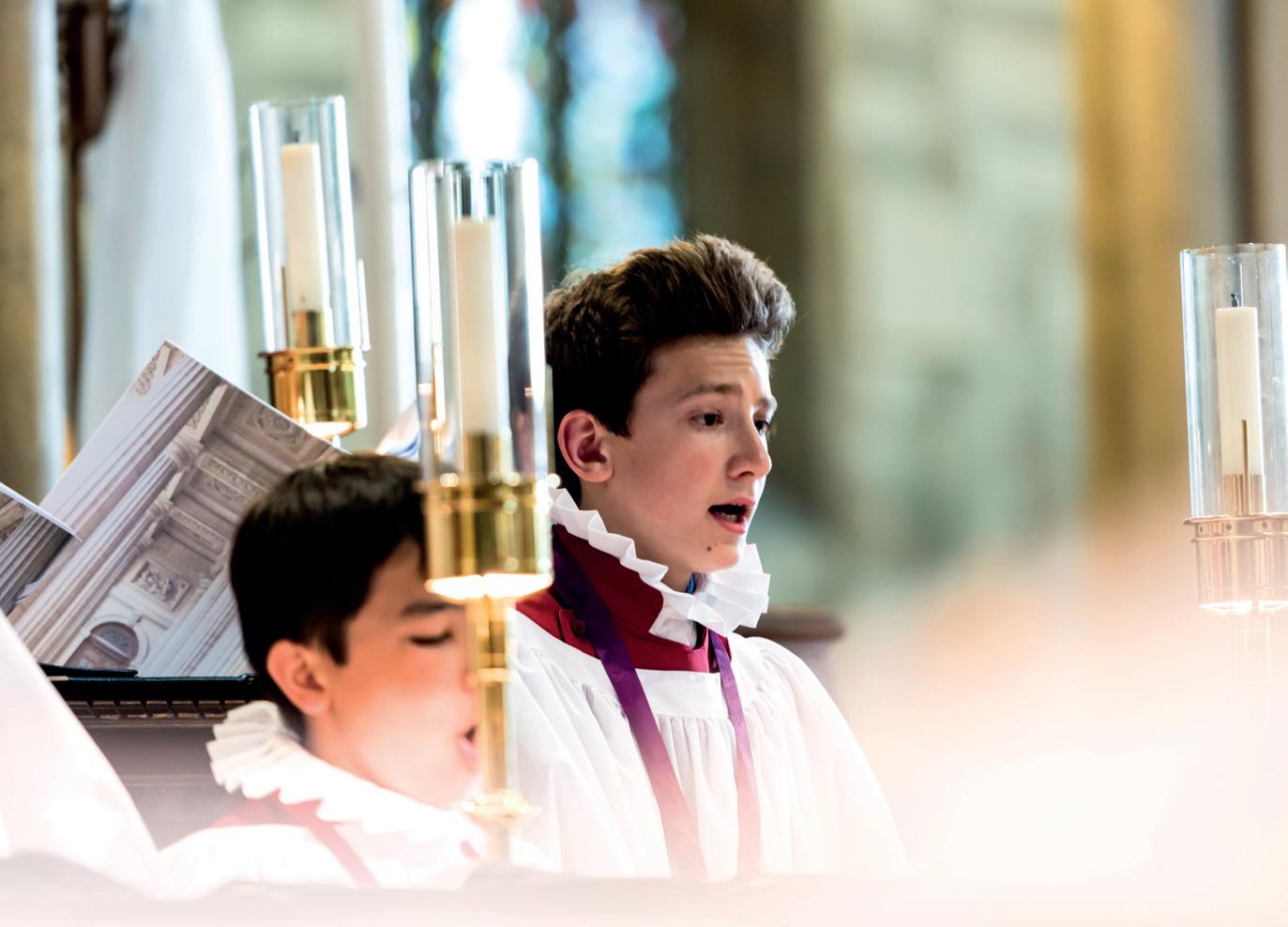
Palace schools) that we needed professional voice leaders, particularly during the week when volunteer singers are not always available to us. The task of these professional singers is not only to lead their part, but also to be vocal role models to the boys and girls when they sing alongside them, giving them useful tips here and there to improve the quality of everyone’s singing. At Whitgift, we soon introduced our GMA scheme (Graduate Music Assistants): the graduates work during the day at the school and sing at the Minster in the afternoon and on Sundays/feast days. This has proved very successful, and a model that continues to attract outstanding postgraduate singers. The GMAs are supplemented by a team of professional deputy lay clerks who are jointly financed by Croydon Minster, Whitgift School and Old Palace School, enabling us to run a busy schedule of five choral services per week during term time:
Tuesdays
Wednesdays
We have found that the constant exposure of our singers to a comparatively large repertoire of cathedral music has not only helped improve choral standards at the Minster, but has also helped at Whitgift and Old Palace Schools, and with children from the local community. It is this mutual benefit that makes the partnership between the Minster and both schools a successful model.
We have also thought hard about singers from the Minster community who would like to sing occasionally but can’t commit to the Minster’s busy choral schedule, or who may not meet the standard required to be a regular member of the Minster Choir. We decided to start a project-driven choral society, the Whitgift-Minster Choral Society, which quickly gained considerable momentum. This choir is made up of chorister parents as well as members from the Minster, Whitgift School, Old Palace School and local communities, and it works on specific projects, such as Brahms’s Ein Deutsches Requiem or Handel’s Messiah, often joining with the Minster Choirs and the Whitgift Chamber Choir. This makes for a choir of over 150 voices and I cannot tell you what a thrilling and inspiring experience it is for all the singers (and myself!) to perform large choral works with orchestra in a building such as the Minster. It is hard work, but definitely worth it.

Over the past few years, the Minster’s choral foundation has built up a fine reputation for excellence in choral singing and this has resulted in the Minster, as well as our two choir schools, becoming Associate Members of the Choir Schools’ Association, and for the Minster’s Director of Music to qualify for membership of the Cathedral Organists’ Association. We were particularly proud when BBC Radio 3 approached us to broadcast Choral Evensong live from the Minster in November 2018 (which hadn’t happened in decades), followed by BBC One’s live broadcast of our Midnight Mass last December (which was a complete first for us). This not only helped promote the Minster and its choirs’ work beyond Croydon, but also made our singers realise that what they do is indeed special (which doesn’t always feel that way when singing a mid-week Evensong on a drizzly November day with hardly any congregation present). One should never forget how important the BBC’s work is in helping to maintain our wonderful choral tradition and what a powerful morale boost to singers a BBC broadcast can give!
At the Minster, the secret to our choral programme is working in partnership with others, and this not only applies to working with schools from the John Whitgift Foundation but also to collaborating with other choirs, too. For the last five years now, our girl choristers have been singing an annual joint Evensong with the girls’ choir of Guildford Cathedral, alternating between the cathedral and the minster. When it comes to our boys’ choir and male junior choral scholars, the format is slightly different: each year they team up with the choir of the Chapel Royal, Hampton Court, and the Godfrey Searle Choir, Reigate Grammar School, to perform in a Three Choirs’ Concert which is hosted in either Croydon, Reigate or Hampton Court. This has turned out to be a very popular event and it is heart-warming to see and hear 100 boys and men united in song.
Apart from working with other choirs, the Minster remains a strong supporter of the RSCM and its mission and it was good
to welcome the RSCM’s new director, Hugh Morris, recently to discuss how we could best support the RSCM’s work. The RSCM chorister training scheme (originally conceived by Martin How) forms the backbone of our chorister training and within the last four years, 95 of our choristers have successfully passed RSCM award examinations.
Although the Minster has always maintained chorister recruitment links with local primary schools, we feel the time has now come to explore new ways of choral partnerships with schools in Croydon. Our new priest-in-charge, Fr Andrew Bishop, is not only a fantastic supporter of the Minster’s choral tradition, he is also a visionary who is keen to share our choral excellence with the Croydon community. Fr Andrew and I were particularly inspired by Tom Daggett’s work in East London, and the recent Choir Church conference has prompted us to look at new ways of making this model work in Croydon. The working title for our choral partnership initiative is MinsterSing! and it is hoped that our choral outreach programme will be launched within the next couple of months. I am also grateful to Dr Chris Ouvry-Johns from Leicester Cathedral for some excellent outreach suggestions which I am expecting to help shape our new school partnership programme.
It goes without saying that a busy choral schedule such as ours cannot be run by one person alone and I am immensely grateful to our (former) Sub-Organist Tom Little, who over the last ten years or so has not only been a first-class organist but has also helped with the chorister training.
Tom has recently started his new position as Director of Music at Christ Church Cathedral, Dublin – a well-deserved promotion – and we will soon be looking for his replacement. Also, many generations of graduate organ scholars have left their mark on the Minster music by contributing to our chorister training programme, playing for services and helping with the administration. Croydon Minster’s choral foundation is very much a team effort, and one we can be proud of.
So, what is the most important thing I have learned over the past seven years at Croydon Minster? I guess the answer would have to be the realisation that a successful Director of Music needs to be both a hard-working musician and a diplomat. And I would argue that the latter particularly is key to maintaining a happy relationship between the Minster and the two John Whitgift Foundation schools, a relationship that allows Croydon Minster’s choral foundation to flourish. We are not a cathedral, nor are we a rich parish church, so maintaining a strong choral tradition with five choral services per week is a bit like walking on water. But together with great supporters such as Fr Andrew Bishop, Chris Ramsey (Whitgift’s new headmaster) and Jane Burton (Old Palace’s new headmistress), the future for choral music at Croydon Minster is looking very bright indeed.
Finally, if I were asked to sum up the raison d’être of our choral foundation in a nutshell, I’d probably say, Croydon Minster, located in a particularly poor part of Croydon, seeks to bring beauty where there isn’t much beauty. This is what we’re about. And I am absolutely certain this would have met with John Whitgift’s approval. Long may it continue.

This biography, with a foreword by Yan Pascal Tortelier, traces the life of a pioneer of choral music in Northern Ireland. Ronald Lee’s life spanned the period from the ‘Hungry Thirties’ to the last decade of the 20th century, and, for almost 50 years, the music he created inspired many hundreds of singers, young and old. His work in parish churches and the school where he was effectively Head of Music all his teaching life set a standard for excellence that the present generation of celebrated Northern Irish choirs has been able to build upon.
His enthusiasm for cathedral music inspired generations of those who came into contact with him. Many of these went on to become top-flight musicians in their own right, enthusiastic promoters of good music in the liturgical context. As a musician, Ronnie had one particular source of inspiration: the choir of King’s College Cambridge. And successive directors of that choir knew him well and respected what he was doing. His achievements deserve to be remembered, something which this book sets out to do.
Ronald Lee was a most unlikely musical genius. Although his mother sang in the local parish church choir in south Belfast, the family had no history of musical excellence. There was absolutely nothing to indicate that the child born on 29 October 1929 would eventually achieve fame for his musical prowess in his home city and country, let alone across the continent of Europe. But so it was to prove.
‘Ronnie’, as he was known, suffered from poor eyesight, a fear of heights and left-handedness, all of which left him with a lack of self-belief and a potentially disabling shyness. These factors made him disinclined to involve himself publicly in any activity – even music, a subject for which he had begun to show some definite ability at school.
His mother, however, was determined to promote her son’s talents, and encouraged a friend to suggest that her son go with Ronnie to apply to join the choir of the local parish church, St Bartholomew’s. It did not take long before Ronnie fell under the spell of the church’s music. It occurred as a result of his encounter with Basil Harwood’s Evening Service in A flat. Here was something he found himself instinctively responding to, identifying with and making his own. The setting simply changed everything for him. It is no exaggeration to say that, from that moment on, he knew that choral music had to form a central part of his life.
The serious-minded youth was very fortunate in that the choir was directed by Dr Selwood Lindsay, a published composer and music enthusiast who set the highest possible standards for his singers. The church had a reputation for excellence in most areas of its collective life and thus had high expectations of its young trebles. Accuracy in sight-reading and intonation were absorbed by the young man, and he in turn passed on those qualities to his own choirs.
Ronnie Lee’s love of the organ was fostered by the parish organist, who encouraged him to begin lessons at St George’s, Belfast and later at St Anne’s Cathedral in the city.
In the meantime, he absorbed the admiration of both his choirmaster and the organist for the music emanating from King’s College Cambridge, access to which from a distance in those days could only be had by radio. Right until the end of his life, King’s would be the benchmark against which all other ensembles would be judged. As early as 1936, his church choir had taken the King’s Service of Nine Lessons and Carols as its model, and Ronnie was to come to the attention of the public, locally, then nationally, as its foremost exponent in Northern Ireland.
His first appearance as accompanist for the services in his own church at age 14 was a revelation to many. He had, however,
been practising assiduously behind the scenes, for his lack of natural confidence meant that he abhorred leaving anything to chance. Everything had to be well prepared before it was presented. By age 16, he was also to be found helping out at choir practices and conducting some of the singers on local BBC radio broadcasts.
An opportunity to conduct a parish choir of his own opened up in 1948 when he was appointed to St Matthew’s Church in Belfast, on the strength of his obtaining first place nationally in the equivalent of today’s Grade VIII examinations. Within the space of two years he had impressed the RSCM’s Chief Commissioner, Hubert Crook:
The work of this choir is excellent: I was particularly impressed with the control of the voices, which resulted in such sensitive singing, and in the excellence of the chanting.
So impressed was the Commissioner that he requested a recording of the choir’s chanting, so that he could use it as an example to other ensembles!
Ronnie’s ‘day job’ had been as a clerk in a local bakery. Dissatisfied, he determined to move into music teaching, and worked to achieve an LTCL. Recognising that, even with the diploma, he lacked a university degree and would need to provide greater experience for himself, he took up clarinet and trombone, achieving excellence in both.
One of the ways in which Ronnie Lee ‘pushed’ his singers to achieve more and more was by entering them into music festivals. Four years after his arrival, they carried off five cups at the Belfast Musical Festival. Unsatisfied with anything but the best, he entered them again, in 1954. This time, they won every class in which they were entered, including hymn-singing and anthem performance. To their, and their choirmaster’s, evident satisfaction, they carried off the trophy for overall choral winner.
The adjudicator, none other than the well-known English musician and composer, Eric Thiman, was fulsome in his praise. Characteristics that Ronnie would go on to cultivate in all his choirs were already evident: immaculate texture in chording, together with clarity and purity in the tone.
Ten years later, his school choir entered the Festival once again. To say that the adjudicator, Noel Cox, was bowled over would be an understatement. Awarding first prize to Ronnie’s singers, his comments speak eloquently of his reaction:
On the strength of his clergyman’s recommendation, he was appointed as temporary music master to a local grammar school, Grosvenor High in Belfast. Almost 40 years later, he was still there, having become Head of Music and Senior Teacher, without ever having attended music college or having a university degree in the subject! But he had taken the school choir to heights of excellence which, in truth, very few reach, and in so doing he had paved the way for the remarkable standards achieved by Northern Irish school choirs from the end of the 20th century on.
Among the ‘firsts’ of which he was quietly proud was the fact that in April 1958 his parish choir was judged worthy of appearing on BBC Radio 3’s Choral Evensong. This was the very first time that any church or cathedral choir in all of Ireland had been invited to feature on the programme.
Wonderful sounds – and dealing with all difficulties as if they did not exist! […] This conductor has a wonderful grasp of what the music should sound like. It was the finest choral singing of its kind that I have heard. Warmest congratulations!
By 1976 his choirs had many radio and television appearances to their credit. That year he set up his first choir made up exclusively of adult singers. The name, ‘Renaissance Singers’, was chosen to reflect his particular interest in music of the period. Winning the first BBC Sainsbury’s ‘Choir of the Year’ competition in 1984 with Renaissance was followed in 1986 (the second year of the competition) by a comprehensive triumph in the Youth Section for his Grosvenor High School singers. Chairman of the jury, Barry Rose, spoke for the panel of distinguished musicians when he wrote, ‘This is what real choral singing is about…’

That same year, it was the triumph of the Grosvenor choir at the international choral competition in Montreux, Switzerland (the Rencontres Chorales Internationales) which confirmed his standing in the eyes of the musical world of the time. The youngsters carried off not only the Premier Prix avec Félicitations du Jury but the Prix du Jury as well.
Like most top-flight musicians, Ronnie readily spotted aspiring young performers, to whom he generously gave encouragement and help. Among these were Barry Douglas (now the renowned international piano recitalist and conductor), David Graham (later to be distinguished Professor of Organ Studies at the RCM) and John Chillingworth (celebrated organist, teacher and Principal Cellist at English National Opera). He also helped bring a young local flautist to prominence – one James Galway – by inviting the talented teenager to feature in his early school concerts.
Later in his career, Ronnie’s choir work with the Ulster Orchestra under Yan Pascal Tortelier resulted in some of
the most memorable performances of 20th-century French repertoire heard in Belfast and some of the finest, critically acclaimed recordings ever to emerge from Northern Ireland. With their conductor as chorus master, the Renaissance Singers rose to the occasion, producing some effects in their interpretation of Ravel that, according to Tortelier, ‘the composer could only have dreamed of’.
And the orchestral musicians (like all such players, inclined to be sceptical of what a ‘mere’ choral conductor could achieve), held him in the highest regard. One of the country’s finest solo singers explained:
He was a very fine conductor – he conducted the Ulster Orchestra on two or three occasions, and they always appreciated him. The orchestra were not the easiest people to please, but you could see they appreciated him
Official recognition came near the end of his life. There was an MBE in 1985, for services to music in Northern Ireland and, four years later, the award of an honorary MA. True to character, he simply used these as a springboard to aim for even higher standards in future performances.
Such was his fame that the traditional Irish band, The Chieftains, invited Renaissance to appear on their 1991 Christmas CD, along with Marianne Faithfull and Elvis Costello. The disc was marketed worldwide.
Following a relatively short but aggressive illness, Ronnie died on 22 December 1992. His funeral was held in the space he loved above all others in his home country – Belfast’s St Anne’s Cathedral.
The sell-out memorial concert in the Ulster Hall in June 1993 brought together not just his Renaissance Singers and the Ulster Orchestra, conducted, as a tribute, by Yan Pascal Tortelier, but soloists Barry Douglas and Michael Pearce, the head chorister of King’s College Choir.
Among his many friends who have spoken about Ronnie Lee’s life in music, John Rutter’s comment reflects the opinion of many of those in high positions in cathedral music:
I hold Ronnie Lee in high esteem as a fine and sensitive choral director. He was a conductor of profound musicianship, whose performances came from the heart and touched the heart.
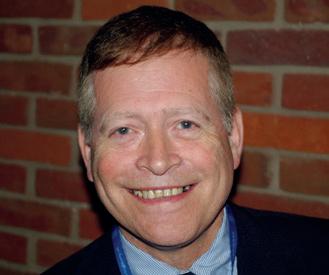
The late Sir Stephen Cleobury was no less enthusiastic in his praise:
He was a man of great humanity, great integrity – and with a wonderful sense of humour! He couldn’t have achieved the standards he achieved without possessing a high level of musical ability.
Ronnie Lee, someone who came from a most unpromising background and never consciously sought the limelight, but who achieved a consistent record of success, and was admired by the musical ‘greats’ of his generation, was to many a baffling, inexplicable phenomenon.
Looking back at his life, with its record of amazing success in competitions at local, national and international level, one is tempted to conclude that the spark of genius he clearly possessed was responsible for it all. But that would be to underestimate the personal commitment and determination that marked everything he set his mind to.
Gramophone magazine, in June 1993, mourned the death of ‘Ronnie Lee, Northern Ireland’s most famous choral conductor’. But it was Canon Charles Kenny, in his funeral eulogy, who captured the essence of someone whom he knew particularly well:
Ronald Lee had [a] vision of the beautiful, the best – in music, in choral music, in the music of the Church. And he worked at it. How he worked at it! Today we lament, quite simply, the untimely passing of one of the world’s greatest choir directors of our generation.
JOHN CROTHERS, a native of Belfast, has worked for many years as organist, singer, conductor and composer, alongside his main career as a grammar-school modern languages teacher. For many years he chaired the RSCM in Ireland and was founder-director of the RSCM Ireland Singers. Moving to France to teach in university, he was instrumental in setting up the work of the RSCM in that country. Now in retirement, he conducts the singers of RSCM France at the annual Paris RBL Festival of Remembrance, formerly held each year in Notre-Dame Cathedral and now in the Cathedral of Saint-Louis des Invalides. For many years he has been a member of the Executive Committee of the Hymn Society of Great Britain and Ireland and has authored a number of articles on hymnology. This is his first book.
A proportion of any profits realised from sales of the book will be given to the David Willcocks Trust, which works to support and encourage singing among young people, particularly those in challenging circumstances. The book, Echoes of a Distant Music by John Crothers, is available from jcrothers@free.fr and The Book Well, 73 Belmont Road, Belfast BT4 2AA.
Some would say there is no such thing as a plainsong accompaniment! The medieval tradition of singing plainsong, whether in cathedral, college, abbey or priory, was of course unaccompanied. However, many traditions of the Church have changed over the centuries, more usually by addition rather than replacement. The 19th-century church revival in England saw not only parish and church expansions but the augmentation of choirs, organists and repertoires within these organisations. Because a cathedral organist was the sole senior musician – under the precentor – he would inevitably be on the organ stool for the duration of all the services, and thus he accompanied everything including responses, Byrd anthems and plainsong hymns and psalms. He would have considered himself essential to all music (unconducted, of course), and certainly wouldn’t allow the choir to think they could do without him! Thus plainsong accompaniment became the norm; the organist would add his own harmonies to the plainsong melodies, most probably in chordal style as shown in the original 1861 edition of Hymns Ancient and Modern. This newer tradition could be considered as no less valid than a choir procession into and out of the choirstalls, which is also only a 19th-century novelty.
If plainsong accompaniment is valid, though still by no means essential, it is necessary to understand and accommodate a major problem: one sings a plainsong melody in a mode, and accompaniment is in a key, and modes and keys are not identical. A mode would normally be one of the eight ecclesiastical modes, whilst a key will be either major or minor and at an appropriate pitch. The essential consideration is that the chosen key must obey the rules of the mode as well as its own inherent rules. A key can only be regarded as what could be called a ‘latent’ key – because a melody requires many harmonic changes as it progresses. The fewer changes the better, however, and of course the modal discipline must be maintained.
If we take the ‘D’ or Dorian modes (I and II, depending on the lie of the melody: Mode I melodies lie within the octave D to D but also include the low (flattened) 7th, and Mode II (technically the Hypo-Dorian) melodies have at least one note in the lower octave), and assuming for this example that a melody is at pitch, then we would choose D minor to accompany it. However, whilst our normal use of D minor would allow a C#, the Dorian mode does not, and this note therefore can never be used modally. An accidental B flat is allowed (albeit the authentic Dorian contains a B natural. Bach’s Dorian Toccata & Fugue is not actually in the Dorian
mode because the use of C# precludes this; the title is not Bach’s but a later nomenclature – Bach’s manuscript has no key signature, and gives the impression of the Dorian mode. Similarly, Wood’s Phrygian mode mass setting is not actually in the Phrygian mode because it employs a G# in the first bar and an F# in the second.)
The Phrygian mode family (III and IV) is a difficult one to deal with because of the diminished 2nd from E to F. Accompanying in E minor is clearly not appropriate, so a key must be found to accommodate this, and it must be a minor one because in general terms the first four modes are of a ‘minor’ flavour (because of the minor 3rd in their scale), whilst modes V to VIII are of a ‘major’ flavour (because of the major 3rd in their scale). The latent key of A minor is therefore found to be suitable for ‘E’ modes III and IV. So the melodic ‘Final’ will be E, but the latent key termination will be A minor, having the modal final as its dominant.
The ‘F’ Modes V and VI (Lydian family) are fairly easily accommodated in F major because a B flat is allowed in both mode and key. Thus the modal final is F, and the terminating (latent) key will also be F major.
The G modes VII and VIII (Mixolydian) are not so easily dealt with (as per III and IV) because of the flat 7th F (F# is not allowed). Consequently, an accompanying latent key of G major is not appropriate. An appropriate major key which can accommodate a natural F in open, modal style is C major. Hence a VII or VIII mode melody would have a final of G, the dominant of its terminating key of C major.
Transposition is of course quite normal in the modal system, so a mode VII or VIII melody e.g. ‘Veni Creator Spiritus’ (Mode
VII but often wrongly categorised as Mode VIII), transposed a tone down, will end on its new modal final F but, as we have seen, F major is not the latent key for this (transposed) mode because F major cannot satisfactorily accommodate the flat 7th e.g. the penultimate note of the melody; a terminating chord of F must sound to the trained ear as the dominant waiting to be resolved to the tonic. The latent key must here be B flat and therefore the key’s final chord should be B flat, with the modal final on its dominant.
This last paragraph must address dynamics. It has been said that the fewer chords the better, and of course with the modal discipline mentioned above, but with a low dynamic such as a Swell 8’ diapason and occasional Choir 8’ and 4’ flutes, and preferably no pedal. Accompaniment should be very much in the background and not leading the melodic singing. Here, singers have a higher status than the organist!
From a lecture given to the Salisbury & District Organists’ Association in Salisbury Cathedral in November 2019.
Philip Baxter is a former Precentor’s Lay Vicar Choral at Salisbury Cathedral and is currently Director of Music at Beaulieu Abbey in the New Forest. His book: ‘Sarum Chant –Plainsong of the English Church’ is available from the publisher Sarum Script (sarumscript@outlook.com) £8 inc. postage.


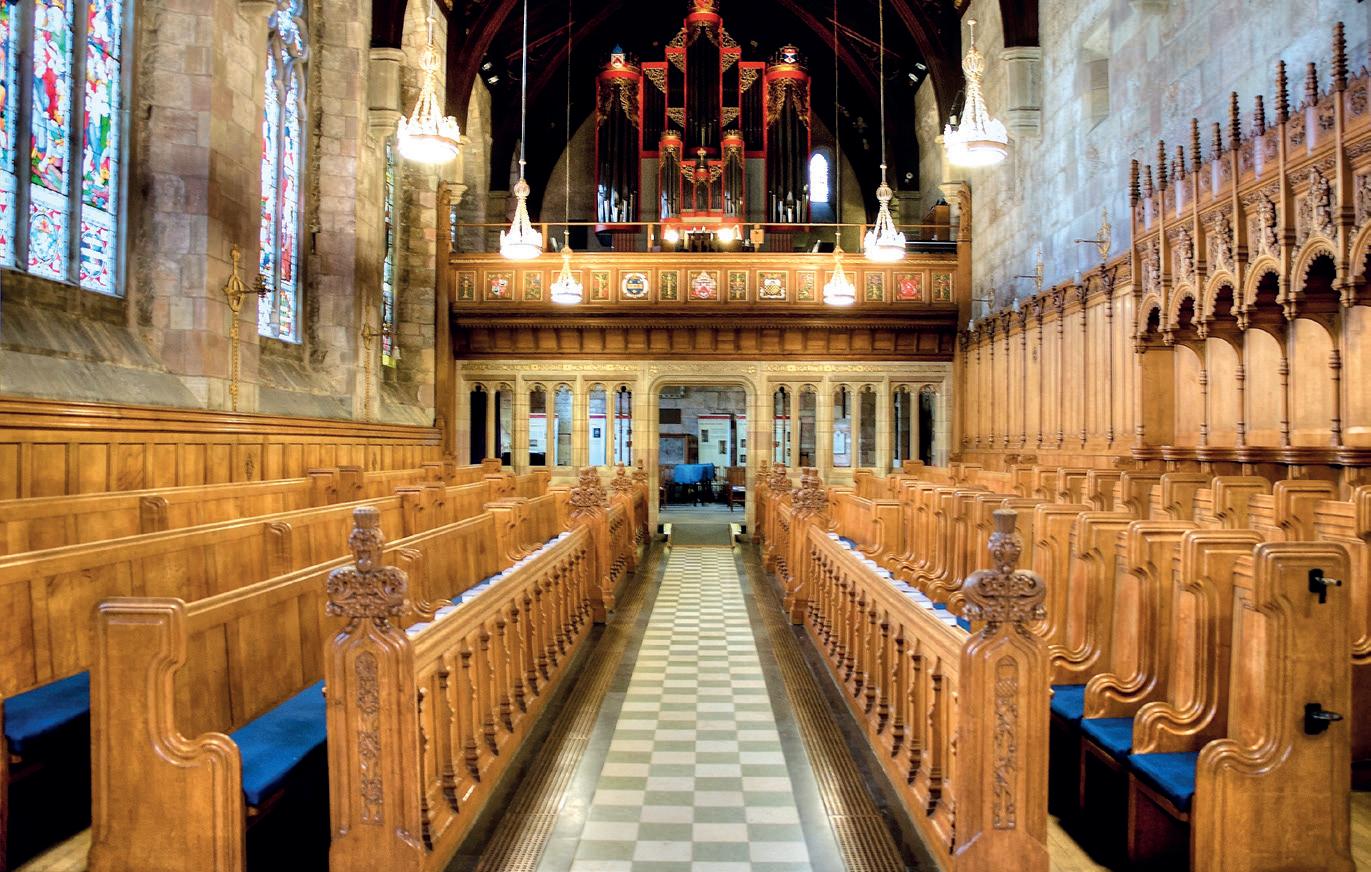 George Corbett
George Corbett
‘In music, there seems to be an umbilical link with the sacred,’ writes contemporary composer Sir James MacMillan. This rich metaphor implies a genetic, blood, mother–child relationship between faith and art, but it also suggests that the link is broken at birth as the music is given to the world and, today in the West, listened to by a predominantly secular public.
The post-war zeitgeist of our conservatories and musical departments has been that music is ‘complete in itself’ and any outside influence – such as religion – is ‘extraneous and irrelevant’. Testifying to a typical experience, composer Roxanna Panufnik wrote: ‘I left music college swearing never to write another note again. … It was during the mid1980s when esoteric and cerebral avant-garde music was still
considered the right kind of music to be writing.’ MacMillan, an overtly religious composer, laments this divorce of music from any extra-musical inspiration, whether religious or not. It has led, in the end, to musical sterility: a mere playing around with notes on a page, with composers even revelling in their music’s inaccessibility and unpopularity.
Excessive formalism, experimental music which is innovative for its own sake, has affected performance as well as composition. The recording industry has placed increasing emphasis on musicians’ technical prowess, and on a perfectionism in sound quality. ‘Historically Informed Performance’ (HIP) has preferred musical style over its content, with a claim to ‘authenticity’ based on the adoption of period instruments, pitch, and performance practices.
These tendencies then affect how we listen to and appreciate music. If we prioritise technically flawless and stylistically ‘authentic’ performances of well worn, well-known pieces, the danger is that music ends up becoming just another cultural commodity, and the concert hall a museum. Similarly, if we cut music off from its source, we dampen its power. We also demote the vocation of a sacred musician to that of a secular practitioner of culture. Can we not once again see music as the medium of the divine in a secular world, and musicians as, in MacMillan’s terms, ‘the midwives of faith’?
MacMillan’s own thinking about spirituality and music has been deeply influenced by theologian and amateur pianist Joseph Ratzinger, better known as Pope Emeritus Benedict XVI. Speaking in 2015, Ratzinger pinpointed three key sources of music as love, sadness, and ‘the encounter with the divine’ – which, like the first two, are part of what it is to be human and demand new ways of expression. Music’s mysterious power (even many non-religious people speak of their experience of music in spiritual terms) can be separated only artificially, therefore, from that sacred source. MacMillan advocates unstopping the dam of a narrow formalism, and unleashing again the creative power of tradition, the perennial spring of religion.
Toward this end, over the past couple of years I have been collaborating with MacMillan on a TheoArtistry project at the University of St Andrews called ‘Annunciations: Sacred Music for the 21st Century’. The aim has been to re-engage composers with the creative inspiration that can come from an encounter with scripture, theology, and Christian culture. We selected six composers from almost 100 applicants, and gave them the opportunity to collaborate with theologians in the Institute for Theology, Imagination and the Arts (ITIA), leading to six new choral works. Our plan was to show how an appreciation of the theological engagement, and/or profound spirituality, of composers can influence not only the creation of their music, but that particular music’s performance and reception. The spiritual content in music was emphasised by championing and practising TIPP (Theologically Informed Programming and Performance), seeing it as a correlative to the focus on style in historically informed performance.
Today, as in the past, some composers and musicians are religious, others are atheist or agnostic and for still others it can be difficult to pigeonhole them either way. We did not request that either the theologians or the composers had any faith background, but we actively encouraged any engagement with the Christian tradition (reverent, irreverent, playful, provocative, etc.) in the confidence that, as in the past, such engagement would be creatively fruitful.
We did establish, however, a strict framework for the theologian–composer partnerships, and commissioned a video documentary to record the progress. In the first two months, the theologians researched passages in the Old Testament: God speaking to Adam and Eve (Genesis 3), Jacob wrestling with God (Genesis 32), the Burning Bush (Exodus 3), the calling of Samuel (1 Samuel 3), Elijah and the ‘sound of sheer silence’ (1 Kings 19), and Solomon’s erotic love poetry (Song of Songs 3). Over the next three months, the theologians and composers collaborated through one-to-one meetings via Skype and email correspondence. In the final month
the first drafts of the new compositions were rehearsed in a workshop with MacMillan. Finally, the six new compositions were recorded alongside five works by MacMillan and four works by his contemporaries or key influences.
What happens when you put theologians and artists together? Surprising things, I would suggest. Creative, new, interesting things. Theologian Margaret McKerron noticed that Genesis 3 is typically envisaged in terms of the temptation and judgement of Adam and Eve, with the verses between the eating of the fruit (3:6) and God’s judgement (3:1) conspicuously under-represented in art. She encouraged her composer partner, Anselm McDonnell, to draw out the literary, chiastic structure of the Hebrew text. At the heart of the episode, God poses three questions to Adam (‘Where are you? Who told you that you were naked? Have you eaten of the tree of which I commanded you not to eat?’). Even after Adam and Eve resist the opportunity to acknowledge their guilt and seek repentance (instead Adam blames Eve, and Eve blames the serpent), God continues to provide for them in the world outside. McKerron and McDonnell explored this provision and promise as a protoevangelium (God’s statement to the serpent) to be fulfilled ultimately in Christ’s passion on the cross. In the second part of McDonnell’s composition, it is now Man who questions God on the cross: ‘For whom are you naked? What is this you have done, my saviour? Hanging cursed from the tree of death, of wrath, for me?’
Reflecting on the theologian–composer partnership, McDonnell commented that the ‘collaborative attitude was vital not only for the conception of the initial ideas, but also for the project’s development as the piece began to take shape. On several occasions, the work took interesting twists and turns that neither of us had anticipated, highlighting nuances we had not noticed. This experience caused me to reflect with more self-awareness on the nature of art as a vehicle of discovery.’ He added: ‘Composing this piece was an enjoyable learning curve for me, both as my first experience of this kind of collaboration and as a project with the explicit intention to explore theology and the arts.’
While McKerron and McDonnell’s choral work challenges conventional readings of the fall, theologian Kimberley Anderson and composer Stuart Beatch sought to interrogate contemporary questions about masculinity and femininity in their reworking of Song of Songs 3:6-11. “I was naturally drawn to the salient textual elements: the beautiful language, the lush imagery, the formal elegance,” reflected Beatch. “I completely bypassed the chance to draw any deeper meaning! In contrast, Billie was focused on the absence of male voice and agency in the excerpt, and the idea of ‘masculine annunciations’ (clearly the far more imaginative approach!).” Anderson considered how a traditional gendering of God (the
What happens when you put theologians and artists together? Surprising things, I would suggest. Creative, new, interesting things.
soul as female, God as male) can be difficult for contemporary men to inhabit, given pervasive cultural norms. While registering traditional glosses of the bridegroom and bride in terms of Christ and his church, or God and the human soul, Anderson chose to focus on the heterosexual relationship in the Song of Songs alongside, and as a reconstitution of, Adam and Eve’s relationship in Genesis. She highlighted Adam’s incompleteness (‘It is not good that man should be alone,’ Genesis 2:18), and pointed out that even Eve’s status as ‘bone of my bones’ can be interpreted in a superlative sense (as in Song of Songs itself). She also suggested texts from Milton’s Paradise Lost in order to give a voice to the bridegroom, and to explore the vulnerability and sensitivity of maleness within the marriage union.
In the first section of his composition, Beatch’s threefold repetition of the line, ‘Who is this?’ underlines the key question of identity. In the second part, Beatch adapts Milton’s text with its description of Eve as ‘in herself complete’. Deciding that ‘Solomon’s masculinity would be purposefully feminised’, Stuart ‘intentionally aimed to portray this masculine music through stereotypically “feminine” music. ... The harmonies are lush, the phrases are short and breathless, and even the rhythms are gentle.’ In the final ‘chant-like’ section, the pomp of ‘Solomon King’ is downplayed, and – instead – the vulnerability of the young man and woman in the marriage union is evoked. The result, arguably, is a marriage anthem for our times, one that Beatch says “engages deeply, meaningfully, and respectfully with complex issues of voice and gender in a sacred context. My wish is that this type of collaboration carries on and allows for the passionate interrogation of religious themes across all forms of contemporary art in the future.”
What happens in the artistic encounter with theology? I like the scriptural image of water and wine: there is a sense, I think, in which music can be transformed by the encounter. Music that sets a sacred text goes far beyond it, revealing the mysteries of religion in a way that words alone cannot. Music can come not to serve theology but to be theology or, more exactly, ‘theoartistry’, insofar as it may reveal God in a new way through artistry.
But doesn’t this go against the idea of the free-spirited artist, free of tradition, or of religious commitment? What of the frequently made claim that religious engagement restrains the creative freedom of the artist?
For our second TheoArtistry project, the TheoArtistry Poets’ Scheme, six poets were mentored by MacMillan’s librettist, the poet Michael Symmons Roberts, in a collaboration with StAnza (Scotland’s international poetry festival). Both MacMillan and Symmons Roberts cite a passage by the poet David Jones, in which religion is seen as a binding that makes possible creative freedom:
‘The same root [that is in ‘religion’] is in ‘ligament’, a binding which supports an organ and assures that organ its freedom of use as part of a body. ... The binding makes freedom possible. Cut the ligament and there is atrophy –corpse rather than corpus.’
On this view, the idea of the free-spirited artist is a myth, a delusion. Instead, it is through religion and through the
creative bounty of tradition that artists may find true freedom of expression. As Ratzinger wrote at the close of the 20th century, ‘[Artists] are weary of the empty freedom from which they have emerged. Humble submission to what goes before us releases authentic freedom and leads us to the true summit of our vocation as human beings.’
The 21st century seems to be witnessing a new flowering in sacred music, and a rejection of the extreme formalism that infected the arts in the 20th century. At St Andrews, we are seeking to contribute to this through our new interdisciplinary MLitt in Sacred Music, which will be cotaught by the School of Divinity’s Institute for Theology, Imagination and the Arts and the University Music Centre. As MacMillan has intimated, music – with its umbilical link with the sacred – can lead the other arts in turning to their ultimate source.
[You can read more about the TheoArtistry project, the six theologian collaborations, and reflections on contemporary sacred music (including by Sir James MacMillan and Paul Mealor) in the open access volume Annunciations: Sacred Music for the Twenty-First Century, ed. George Corbett (Cambridge: Open Book Publishers, 2019).]
Dr George Corbett is Senior Lecturer in Theology and the Arts, School of Divinity, University of St Andrews. He has published on Dante, Aquinas, and theology and the arts, including most recently Annunciations: Sacred Music for the TwentyFirst Century (2019) and Dante’s Christian Ethics: Purgatory and Its Moral Contexts (2020). He directs TheoArtistry, a project bringing theologians and artists together in creative collaboration, and CEPHAS, a Thomistic Centre for Philosophy and Scholastic Theology.

Music that sets a sacred text goes far beyond it, revealing the mysteries of religion in a way that words alone cannot.
It’s a common myth that only the rich and famous leave money to charity when they die. The reality is that without gifts left in wills by people ‘like you and me’, many of the charities we know and support today wouldn’t be able to exist. Thankfully, 74% of the UK population support charities, and a good number say they’d happily leave a gift in their will once family and friends have been provided for.
The problem is that ‘the way to hell is paved with good intentions’, and most people do not leave any money to charity in their wills. Are you one of these? And if so, did you know that a reduced rate of inheritance tax (IHT), 36% instead of 40%, is applied to estates leaving 10% or more of their total to charity? This means, in essence, that on an estate worth, for example, £500,000, instead of paying IHT of £70,000, the tax would be £56,700. 10% of the estate – once the nil band of tax is removed – would be £17,500, which you could leave to the charity or charities of your choice, and the reduction in funds payable to family and friends would be only £4200.
Without a charitable bequest
If you consider that most charities would not survive without legacies, that a reduced rate of IHT will apply to your estate if you give 10% of it to charity, and that you are ensuring the vital work of your chosen charity can continue, it makes very good sense to donate 10% to charity in your will. The icing on the cake is that the taxman gets a lot less of your hard-earned cash than would be the case if you were to leave a smaller percentage.
If you have already made a will, as many if not most of us have, it’s still quite easy to change or add to it by writing a codicil. Sometimes it’s simpler to make a new will, and you’d do well to speak to a solicitor, but the benefits to whatever charity you choose to support (which clearly we hope will be FCM) will be worth the extra effort this requires.
If you’d like a short information pack about leaving a bequest to FCM in your will, please contact legacy@fcm.org.uk
Example:
With a 10% charitable bequest
including nil rate band
£56,700 instead of £70,000,
receive only £4200 less
A Pecuniary Gift
I give the sum of £ _____________ (in figures and words) to the Friends of Cathedral Music (FCM) (registered charity No. 285121). I direct that the receipt of the Treasurer of FCM shall be a sufficient discharge to my executors.
A Residuary Gift
I give the whole (or a _____% share) of the residue of my estate to the Friends of Cathedral Music (registered charity No. 285121). I direct that the receipt of the Treasurer of FCM shall be a sufficient discharge to my executors.
Please remember Friends of Cathedral Music in your will and help us to secure our priceless heritage for future generations
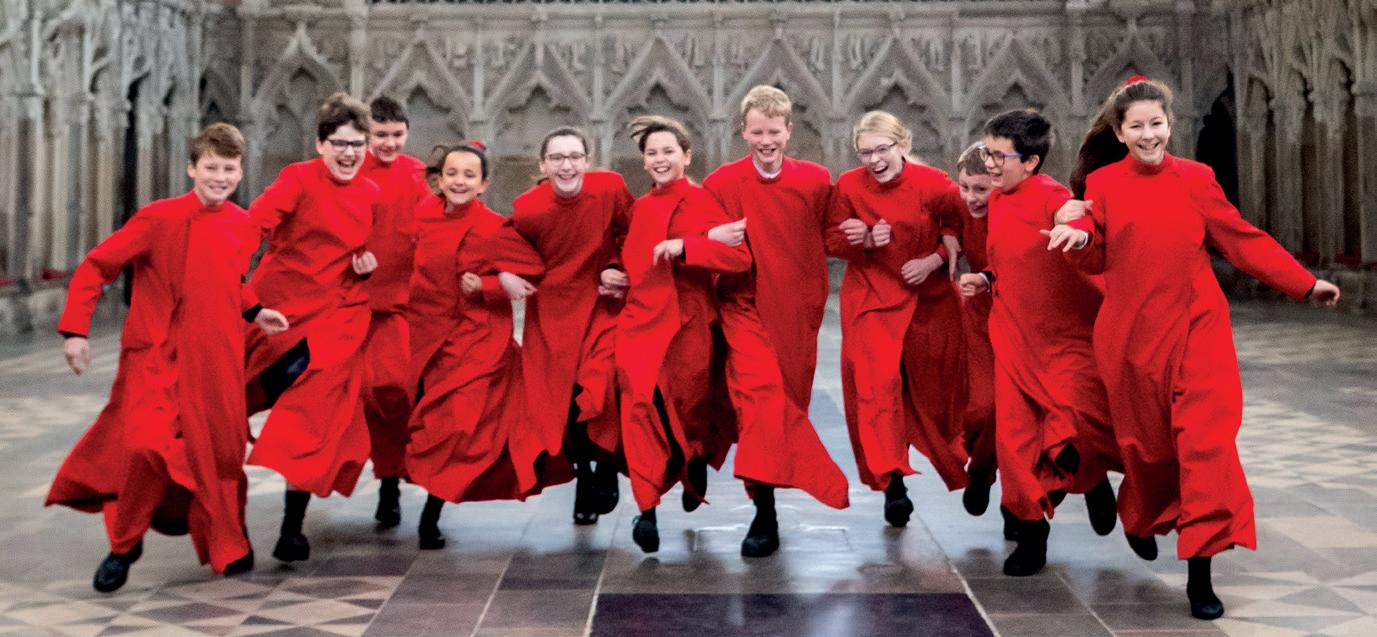

King’s
Timothy Day
Penguin ISBN 9780141988597
‘The modern cathedral choir, together with its counterpart in collegiate chapels and Royal Peculiars, is a Victorian re-creation of an ancient institution which had become corrupted by parsimony, inefficiency and neglect.’
With those words I began my MMus thesis on the work of Sir John Stainer and his successors at St Paul’s Cathedral, words which rather aptly sum up the general thrust of Timothy Day’s admirable book. Day describes in great, possibly excessive but always fascinating and sometimes amusing detail the woeful state of our choral establishments in the first half of the 19th century; in many places the lay clerks (the altos, tenors and basses) were of poor quality and/or elderly, a proud and stubborn race who regarded it as an affront to their professional status that they should be asked to attend a rehearsal; nor were the boys much better! I especially enjoyed Day’s description of the way the choristers of Magdalen College Oxford passed the time between Mattins and Evensong – drinking alcohol and smoking pipes. Choristers
were generally ill-educated, neglected and poorly trained, but there was one glorious exception. Zechariah Buck, Organist of Norwich Cathedral from 1819 to 1877, was a voice-trainer of rare ability, whose choristers’ singing was of legendary quality. We shall hear more of him later.
Reform was achieved through the efforts and influence of a few heroic individuals, and this book accords due honour to Sir Frederick Ouseley, whose foundation of St Michael’s College in Tenbury brought before the musical and ecclesiastical authorities of the 1860s a model of what the choral service could and should be, with a rigid musical and behavioural discipline applied to boys and men alike. From that stable came two successive organists of Magdalen College, who made the services there a model of beauty and refinement. Of these, Sir John Stainer moved on to St Paul’s in 1872, and Sir Walter Parratt to St George’s Windsor a decade later. More germane to our story is Arthur Henry Mann, who had been one of Buck’s choristers at Norwich, stayed on as his pupil and assistant organist, and had acquired an unrivalled knowledge of voice-training. He was appointed Organist of King’s College in 1876, dying in post in 1929, and to him is owed the quality and fame of the chapel choir in the early decades of the 20th century. He was able finally to replace the choir’s handful of lay clerks with a dozen undergraduate choral scholars, to the great benefit of the choir’s balance and ensemble, even if the tone of the basses was found to be somewhat lightweight.
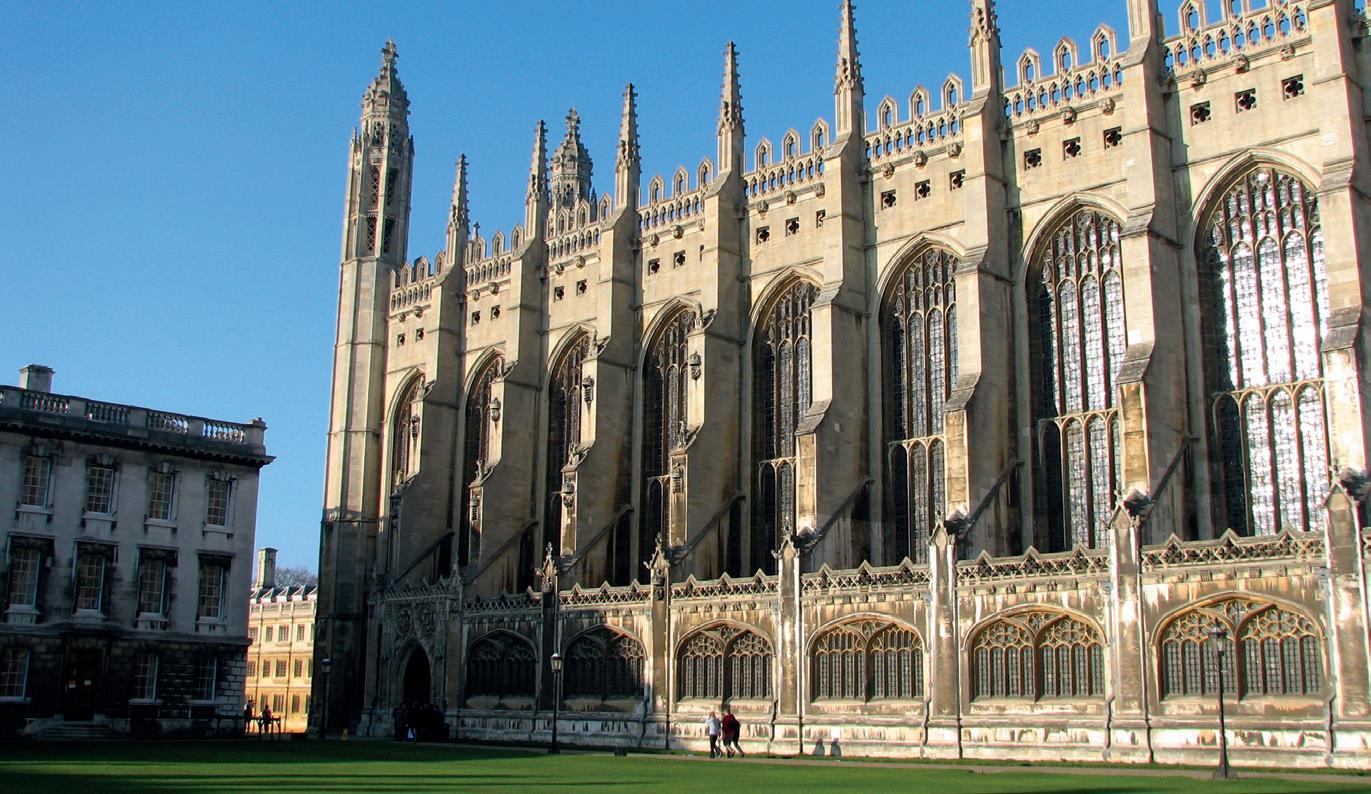
Mann committed the unforgivable crime of being a Victorian, and his musical tastes remained firmly rooted in that era; but already on hand to succeed him at King’s was Boris Ord, a thoroughly up-to-date musician, even if somewhat paradoxically that up-to-dateness manifested itself in the revival of what was then called Tudor Church Music. Ord taught the excellent choir which he inherited from Mann to sing unaccompanied, with a delicacy, finesse and accuracy of tuning perfectly suited to the chapel’s famously resonant acoustic. His successor, David Willcocks (Organ Scholar 1939-40 and 1945-7, also Organist 1948-74) maintained and enhanced Ord’s ethos and standards, and through numerous LP recordings brought the choir to a wider public, for many of whom Willcocks’s choir is still the authentic ‘sound of King’s’.
The tale I have told is the heart of this book, as its title correctly leads us to expect. There is detailed discussion of the methods employed by Mann, Ord and Willcocks, and of the choir’s influence in raising standards elsewhere. The successors to these three men, Philip Ledger and Stephen Cleobury, receive due attention, though one might have wished for a little more. There is an analysis of why the choir of St John’s College sounded so different, and how its boys’ ‘continental’ tone became so fashionable and widely copied. Due credit is given to Bernard Rose, who brought the choir of Magdalen College Oxford to a peak of perfection more than worthy to be compared with its rival at King’s. Several other distinguished choirmasters are singled out for special attention, but mention might well also have been made of John Birch and Stanley Vann, who at Chichester and Peterborough respectively proved that provincial cathedral choirs could, with skilled training, match the standards of more famous establishments.
Distinguished soloists, alumni of King’s and other collegiate choirs, are given due praise, and there is a generous, even over-generous treatment of the burgeoning of adult mixedvoice vocal ensembles, of which the first was The Clerkes of Oxenford, the brainchild of a former member of Magdalen College choir. Some of these groups sound remarkably like King’s in the 1960s, but without the verve and energy. The recent introduction of female choral scholars and female cathedral choristers is discussed with insight and generosity, and mention is made of the beneficial influence of such welltrained sopranos and contraltos when they enter the wider adult world of music-making.

The reader may be less convinced by Day’s forays into psychology, theology and sociology. His dissection of the personalities of Ord and Willcocks perpetuates the received wisdom of the former’s harshness and unkindness, a depiction which several devoted former choristers would question; and of the latter’s ‘stiff upper lip’ and Public School reserve and formality of manner. These qualities, we

are told, manifested themselves in the renowned and even excessive polish and discipline of his choir’s performances; but there is anecdotal evidence that he acceded to his choral scholars’ suggestion that they be allowed to sing out a little more, with results that may be discerned in the recording of Byrd’s Mass for Four Voices. Such recordings as Taverner’s Western Wynd Mass and the Chandos and Coronation Anthems of Handel do not conform to Day’s caricature. He is overfond of referring to the ‘clipped consonants’ encouraged by Ord and Willcocks, as though the singers were instructed to sing like Noel Coward rather than merely being encouraged to sing intelligibly; and he makes rather too much of the famous Willcocks vowel-sounds –‘end heth exalted’ etc – though these were common to the educated speech of the period and are still to be heard in H M The Queen’s Christmas broadcast. Would that today’s singers sang so clearly!

So, Timothy Day has made exceptionally good use of an impressive range and depth of material to produce a mighty work that will entertain, instruct, irritate and provoke anyone with a love of church music. No true friend of Cathedral Music should be without it, and I recommend it with great enthusiasm. By the way, its somewhat enigmatic title is a quotation from the metaphysical poet Henry Vaughan.
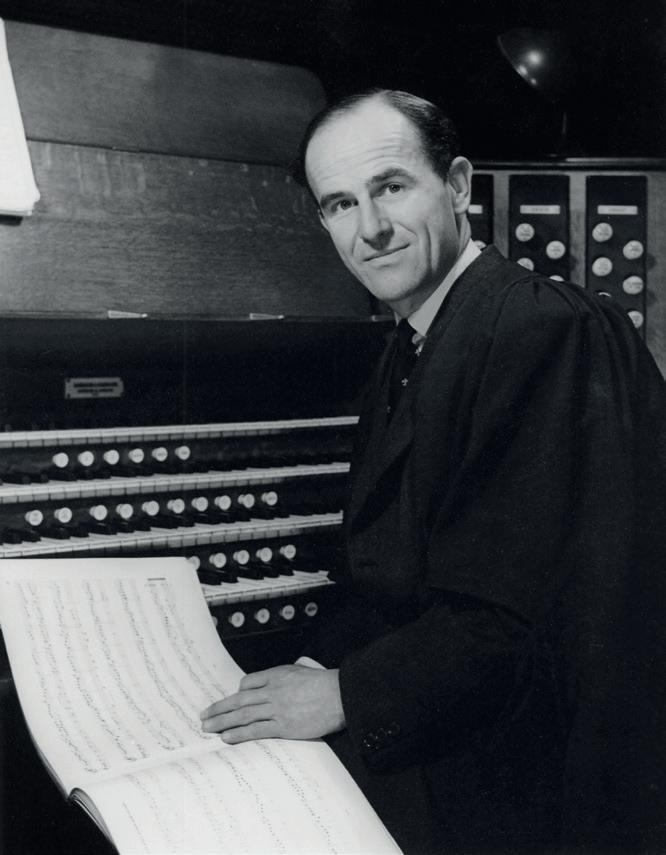
La Maîtrise de Toulouse
Les Sacqueboutiers
Dir: Mark Opstad
Manuel Correa Commisa mea pavesco; Guerrero Hei mihi, Domine; Miguel Juan Marqués Versa est in luctum; Victoria Requiem; O sacrum convivium; Lobo Versa est in luctum; Mateo Romero Libera me; Carlos Patiño Taedet animam meam.
REGENT REGCD551 61:34
La Maîtrise de Toulouse, part of the Toulouse Conservatoire, is a choir school with no regular requirement to provide music for liturgical worship, and is more accurately to be described as a centre for sacred music, the boy and girl choristers (treble and alto) of which are joined in this programme by former choristers and a few adult professionals to supply the tenor, baritone and bass parts. There was a full-length article in CM 1/17, page 30, which will tell you a great deal more. The singing is not unlike that of a very good British cathedral choir, and for that reason if for none other this CD should appeal to lovers of cathedral music. Its virtues do not end there, for this is a well-chosen programme of Renaissance music for the funeral of a Spanish king, with the majestic and expressive Requiem of Tomás Luis de Victoria (1548-1611) providing a centrepiece of great solemnity and beauty which is framed by a highly-appropriate selection of his contemporaries’ motets, some entrusted to the suitably plangent tones of a sackbut (precursor of the modern trombone) ensemble, and the rest sung with immaculate tuning, blend and ensemble. I greatly enjoyed this anthology, which I have no hesitation in recommending with much enthusiasm.
Timothy Storey

Kenneth Leighton
St Mary’s Cathedral, Edinburgh
Dir: Duncan Ferguson
Lift up your heads, O ye gates; Awake, my glory; Wassail all over the town; Crucifixus pro nobis; Lully, lulla, thou little tiny child; What love is this of thine?; Of a rose is all my song; O sacrum convivium; Missa Sancti Petri.
DELPHIAN DCD34218 79:36
A very generous recital in terms of recorded time and vocal textures by this superb choir with two extended works from Kenneth Leighton’s pen – the fine 1987 [and thus late] Missa Sancti Petri, for Peterborough Cathedral and the supremely well-crafted Passiontide cantata Crucifixus pro nobis,
commissioned by New College Oxford a quarter of century prior to that. Then there is the composer’s lengthiest anthem – Awake, my glory (almost 12 minutes’ duration), written for the choir of St Mary’s Cathedral, a festival service (1979), and a number of Kenneth Leighton’s finest and most exquisite miniature masterworks, of which the glorious unaccompanied setting of The Coventry Carol must be towards, or at the highest summit, of the preferences of many. There’s also other music devised specifically for St Mary’s – Leighton’s final work for unaccompanied voices – a deeply-felt setting of Edward Taylor’s text ‘What love is this of thine?’ Few will need reminding that Finzi drew on Taylor for two of his works – the ubiquitous Ascensiontide anthem God is gone up with a triumphant shout, first sung at the 1951 St Cecilia service at the Church of the Holy Sepulchre, Holborn and a wedding anthem for Finzi’s sister-in-law. The lilting arrangement of the Wassail Carol from Gloucestershire of 1964 comes over as freshly as the day it was written – one of a number of absolutely exquisite contributions to this compelling recital, enriched as it well and truly is by solo singing of the highest quality, preeminent among which must be tenor Samuel Jenkins, who delivers magnificent and deeply expressive contributions in Crucifixus pro nobis. Duncan Ferguson conjures lovely, sensitive singing from his choristers and lay clerks. Joseph Beech’s entirely faultless accompaniment impresses greatly, always supportively expressive alongside the singers and never over-prominent in the ensemble. Congratulations go to all at Delphian – the spacious and inimitable ambience of George Gilbert Scott’s magnificent creation is beautifully caught. A real bonus is the impressive notes from the pen of leading British musical scholar, Andrew Burn. Very highly recommended indeed.
Simon LindleyFive centuries of Oxford anthems
Magdalen College Choir
Dir: Mark Williams
Stainer Lead, kindly light; Sheppard The Lord’s Prayer; Taverner Christe Jesu, pastor bone; Leighton Let all the world; Rubbra
There is a spirit; Rose Lord, I have loved the habitation of thy house; Richard Nicholson O pray for the peace of Jerusalem; L Berkeley O that I once past changing were; Parry Crossing the Bar; Weelkes When David heard; Tomkins Almighty God, the fountain of all wisdom; Harwood O how glorious is the kingdom; Walton A Litany; Harris Bring us, O Lord God.
OPUS ARTE OA CD9045 D 61:10
This is the first recording made by the Magdalen choir under the direction of Mark Williams, who took up the post of
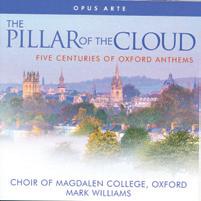
Informator Choristarum (IC for future reference) in 2017. What at first looks to be fairly bizarre programming turns out to be widely varying music by composers associated with the college or other Oxford colleges. So we have John Sheppard (IC) and John Taverner (Christ Church) alongside Edmund Rubbra (Worcester), Basil Harwood (Christ Church) and Parry (Exeter) amongst others. Starting with Stainer’s (IC) Lead, kindly light which provides the basis for the title of the CD – Cardinal Newman’s famous words come from his poem ‘The Pillar of the Cloud’ – the choir produces a bold and clear sound with good emotional contrasts and some fine solo work. This piece was recorded in Merton College chapel, as were all those works requiring accompaniment, and there is some excellent playing by William Fox and Alexander Pott with the Merton organ captured well. A cappella pieces were recorded in St John the Evangelist church at St Stephen’s House. There is some music here new to me, viz Rubbra’s There is a spirit, which is a beautiful, reflective piece for the most part, and the treble soloist does an exceptional job with his difficult phrases. This is followed by the work of yet another IC, Bernard Rose, which brings back memories of singing this under Christopher Gower at Peterborough (CSG was organ scholar at Magdalen). The boys are on fine form in Lennox Berkeley’s (Merton) wonderfully lyrical piece and it is good to hear a recording of Harwood’s O how glorious, which receives a bold and unashamedly romantic interpretation, contrasting with the two previous pieces from the 16th century. All in all, this is a fine first recording for Mark Williams with his choir and, as he says in an interview in the CD notes, “There could, quite easily, be a second volume”.
Nicholas Kerrison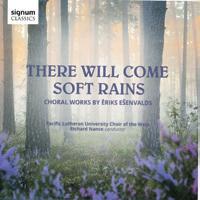
Choral works by Ē
riks EšenvaldsPacific Lutheran University Choir of the West
Dir: Richard Nance
There will come soft rains; The new moon; Long Road; Rivers of light; Northern Lights; Only in sleep; O, she doth teach the torches to burn bright; A Soldier’s Mother’s Lullaby; Spring Rain; In my little picture frame; Evening; My luve is like a red, red rose; Stars; Amazing Grace.
SIGNUM SIGCD 603 71:07
Born in Latvia in 1977, Ēriks Ešenvalds received his musical education at the Latvian Academy of Music, where he now teaches composition, and at Trinity College Cambridge where he was awarded a two-year fellowship (2011-13). Choral music has long been a preoccupation, and on the evidence of this CD he has a fine ear for imaginative vocal effects and original harmonies, not without some melodic inventiveness. In some of these settings a solo instrumentalist adds a little decoration. If the works presented in this programme are a fair guide, they display the composer’s predilection for texts which muse on various astronomical and meteorological phenomena, and on the emotions which they arouse in the human soul. I was most impressed by Rivers of Light, in which a folk song is deployed to good effect, and a Jew’s harp seems to create the sound of a didgeridoo; but listeners of a nervous disposition should be warned that the music contains a loud and unexpected crash which almost startled Mrs Storey from her seat. The ‘Rivers
of Light’ are of course the Northern Lights which inspired a companion (and equally fine) setting. In O, she doth teach the torches to burn bright, a setting of verses from Romeo and Juliet complete with a tambourine to evoke the spirit of Renaissance dance-movements, we escape from the weather and the stars; as also in A Soldier’s Mother’s Lullaby, ‘What passing-bells for these who die as cattle?’, a Wilfred Owen poem familiar to many from its inclusion in Britten’s War Requiem. On a more homely level, your reviewer was utterly beguiled by My luve (sic) is like a red, red rose, a neat arrangement of the traditional Scots melody, in which the sopranino recorder’s stratospheric descant rather suggests a lovelorn swain serenading his sweetheart on the penny whistle. Equally beguiling was the excellence of the Pacific Lutheran Choir of the West, a student body exceptionally well trained and directed, and the most powerful of advocates for this challenging and interesting music.
Timothy StoreyYale Schola Cantorum
Dir: David Hill
Tawnie Olson Magnificat; Roderick
Williams A New England Symphony; David Hill God be in my head; Daniel Kellog Shout joy!; Reena Esmail This love between us ‘Prayers for unity’.
HYPERION CDA68314 75:16
The opening work in this recital, Magnificat, by Tawnie Olson, grabs the listener’s attention from the start. In a fascinating concept, the composer utilises two choirs, two highly contrasting idioms, and two sacred texts (the other being the Ave Maria) in a celebration of feminine strength. The Elm City Girls’ Choir plays its part wholeheartedly, creating an extraordinary tonal colour which must be very different from its normal sound.
Roderick Williams is better known as one of our leading baritones, but on the evidence of his A New England Symphony we should hope for more from his pen. Mastery of choral textures is demonstrated, and there are some moments of exceptional beauty. The virtuosity of this 20-minute unaccompanied work holds no terrors for the choir.
Two short pieces continue the programme, the haunting God be in my head written by David Hill in memory of John Scott, and a setting of Shout joy! by Daniel Kellogg, in which the music does not quite rise to the energy of the poem, a sort of contemporary psalm.
What an extraordinary, magnificent work is the final piece, This love between us by the Indian–American composer Reena Esmail. Comprising seven movements, it takes texts from seven major world religions on the themes of unity and brotherhood. The accompaniment is for a Western baroque instrumental ensemble, supplemented by sitar and tabla, and the music has the cultural and textural variety implied by this. That extreme variety is, however, put at the service of a unified, universal message. This is music for our time.
David Hill’s work with the Yale Schola Cantorum is well known from previous discs, but the originality and freshness of this one is unique. The Schola Cantorum confirms itself as the equal of any mixed college choir on this side of the Atlantic.
 Christopher Barton
Christopher Barton
John Hosking plays the organ of St Asaph Cathedral with Olivia Hunt (soprano), Bethan Griffiths (harp) and Xander Croft (violin)
Bach Prelude and Fugue in C major BWV 547; Craig Sellar Lang Introduction & Passacaglia in A minor; André Fleury Variations sur un noël bourguignon; Boëllmann Ave Maria; Ave verum corpus; John Hosking Toccata in F sharp minor; In the halls of our patronage; Guillaume Connesson Toccata for solo harp; Lili Boulanger Pie Jesu; Karg-Elert Symphonic Chorale; Dupré Toccata from Symphony No. 2
WILLOWHAYNE RECORDS 78:24
This disc does not just feature the organ but, at times, rather interesting combinations involving soprano voice, harp and violin, varying from one track to another, in music ranging from Bach to Dupré via Boëllmann and Karg-Elert and performed by musicians associated in some way with St Asaph Cathedral. John Hosking’s opening Bach is a measured performance with some good clear articulation made all the clearer by what seems to be a relatively dry acoustic. He displays the whole range of sounds and dynamics available to him particularly in C S Lang’s Introduction and Passacaglia. The first group piece is Ave Maria by Boëllmann which may not be to everyone’s taste but which nevertheless receives sensitive treatment with some fine playing by the violinist. Hosking’s own Toccata in F sharp minor belongs, as the notes suggest, in the French Romantic tradition with influences from Vierne and Franck. Following this toccata, so varied is the programme that next we get a harp solo followed by two lyrical sacred works, one again by Boëllmann and the other by Lili Boulanger, both sung sensitively by Olivia Hunt. The ‘major work’ on the disc is Karg-Elert’s 19-minute Symphonic Chorale Nun ruhen alle Wälder which brings together organ, violin and voice. This is quite an undertaking, but John Hosking shows an affinity with this music. His handling of the organ is excellent considering the constantly shifting contrasts of timbre required, and the lack of a Rollschweller (general crescendo pedal), often necessary in this era of organ music, will not have made the job easy. The violin and vocal lines are performed sensitively and with a good sense of the ensemble as a whole. This music is not heard very often at all, I suspect, as, along with so much music, tastes have changed, but it is good to have the opportunity to hear it performed. The Dean of St Asaph writes in the notes: “I hope that this recording gives a flavour of the variety of musicmaking that happens within St Asaph Cathedral”. He can be assured that this disc does exactly that.
 Nicholas Kerrison
Nicholas Kerrison
Kynance Cove | On the South Downs
Truro Cathedral Choir | BBC Concert Orchestra
Cello: Natalie Clein
Organ: Joseph Wicks
Director: Christopher Gray
Alma redemptoris Mater; Jubilate Deo; Truro canticles; Diptych for solo organ; On the South Downs.
REGENT REGCD 530 TT 70:00
The first part of this CD consists of liturgical works sung by the cathedral’s girl choristers and lay clerks, unaccompanied or with organ accompaniment, while the second half comprises two larger-scale works in which there are additional singers (listed above) and fine contributions from the BBC Concert Orchestra and cellist Natalie Klein. These two works were recorded at a live performance in the cathedral in May 2018.

The girls and lay clerks are superb – although I was a little saddened not to hear the cathedral boys on their own. Blend and intonation are impeccable, tone is clear and pure, and the girls show themselves capable of highly expressive moulding of the free-flowing lines. Organist Joseph Wicks (who also has a solo piece) accompanies with musicality and discretion, and Christopher Gray directs with unfailing sensitivity.
The music, all by Dobrinka Tabakova, has yet to achieve wide currency, although that it should do so is not open to question. Her default style is serene and mystical, and admirably suited to worship. Her harmonic language is interesting, logical, and always satisfying. Listening to several works in succession one might wish for a little more textural variety, a little more counterpoint, but each work individually is ideally suited to liturgical offering. Greater tonal variety is inevitably achieved with the addition of the orchestra, although here too the tempi are mainly medium slow, the choir parts are mainly homophonic, and there is a consistency in the overall effect.
For me, the highlights were the first three choir works. They eschew brilliance and drama (even the Jubilate Deo), but their contemplative style is richly rewarding. The canticles in particular achieve a timeless quality in their austerity. Predominantly harmonic music often lacks interest, but not here. One of the most striking moments on the disc is the ‘Gloria Patri’ of the Nunc Dimittis, where the arching unison lines achieve a wonderful climax, the power of which is enhanced by the previous restraint.
This is a disc of much fine music, sung by a truly expert choir; it is to be hoped that Ms Tabakova continues to enrich the liturgy with music of such integrity.
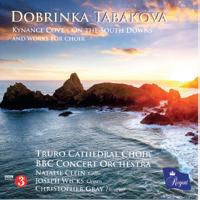 Christopher Barton
Christopher Barton
Choir of St James Cathedral, Toronto
Dir: Robert Busiakiewicz
Einojuhani Rautavaara Psalm of invocation; Bernat Vivancos Kyrie; arr Busiakiewicz
In dulci jubilo; Kodály Gloria from Missa Brevis; Willan The Three Kings; Behold the tabernacle of God; How they so softly rest; Cipriano de Rore Sanctus and Benedictus from Missa Praeter Rerum Seriem; Poulenc Sanctus from Messe en sol; Gareth Wilson Qui sine peccato est; Gombert Agnus Dei from Missa Philomena; Vaughan Williams Easter from Five Mystical Songs; Stephanie Martin In paradisum from Requiem. CD from www.stjamescathedral.ca 52:30
The choir of St James Cathedral in Toronto dates back over 200 years and comprised a mixed ensemble of adults and children. During the past decade, a professional choir was formed, one which enjoys an esteemed reputation not only in Toronto but across much of Canada.
This recording consists of some highly accomplished performances. Listeners accustomed to the more blended sound of many British professional choirs should not be taken
aback by the choir’s generally robust singing with a timbre not widely experienced in the UK. For some tastes, the tone might seem somewhat abrasive, although the more subdued and atmospheric pieces are sung with great sensitivity. Nevertheless, the moments of excessive vibrato, especially evident in the soprano line of the Poulenc Sanctus, certainly feel brash.
The programme is extremely diverse and follows the church’s year. However, Robert Busiakiewicz has chosen to use extracts taken from a number of diverse Mass settings to reflect various aspects of the particular season. Do not be surprised to hear movements from the Renaissance set against those composed in the 20th century.
Although consisting of some familiar music such as the ‘Gloria’ from Kodaly’s Missa Brevis, the disc consists mainly of 20th century and more contemporary works. The Finnish composer Einojuhani Rautavaara’s Psalm of Invocation is a highly dramatic and powerful work using a portion of the fifth ‘O’ Advent Antiphon. Vocal glissandi are well controlled whilst the addition of bells and tam tams in the ‘Kyrie’ (from Messe aux sons des cloches) by Bernat Vivancos contributes an abundance of colour. The dynamic range of the choir is extremely wide, almost to the point where, on occasions, such as in the ‘Sanctus’ and ‘Benedictus’ of the de Rore Mass, some of the counterpoint is lost.
Contrasting with the extrovert pieces are a number of sensitive performances. Gareth Wilson’s concise and harmonically challenging Qui sine peccato est (from Decalogue) is sung to great effect, whilst the final movement of the Requiem by the Canadian composer Stephanie Martin is quite sublime. The adeptness of the choir is especially highlighted in Healey Willan’s highly emotional setting of How they so softly rest, perhaps one of the most powerful performances on the disc.
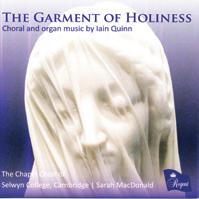 David Thorne
David Thorne
The Gentlemen of St John’s*
Dir: Graham Walker
A babe is born; Jesus College Canticles; Learsongs; The heavens declare the glory of God; Ave verum corpus; Riddles*; A May Magnificat.
NAXOS 8.574162 71:52
We have all been aware of the St John’s boys’ choir for many years and of the talented back row, but here we have the first recording by St John’s Voices. Established in 2013, ‘SJV’ is the college’s mixed-voice choir which is open to all students at St John’s and also to volunteers from the wider town and university community. The choir is directed by Graham Walker, a former chorister and choral scholar of St John’s. As well as singing Evensong every Monday during term time, St John’s Voices performs regularly on tours and in concerts throughout the year. Not only is this a debut recording but this disc of William Mathias’s music features world premiere recordings of the well-known Learsongs and Riddles. From the very start, in A babe is born, we get an idea of the quality and expertise of the St John’s Voices. Strength and clarity of sound coupled with rhythmic vitality abound and the choir is expertly accompanied by Hugh Crook. This continues in the Jesus College Canticles where the wonderfully articulate playing by Shanna Hart is thrilling. The Learsongs from 1988
provide us with an insight to the secular music of Mathias. Having taught some of these pieces to school choirs, it is rewarding to finally hear them recorded by such a good choir. For upper voices and piano duet they are wonderfully vivid settings of Edward Lear’s texts, full of character, and here they receive performances, with superb accompaniments by Glen Dempsey and Aida Lahlou, which bring the character of the texts and Mathias’s music to the fore. George Guest, whose legacy at St John’s is ever present (I suspect), commissioned Y nefoedd sydd (The heavens declare the Glory of God) in 1988 on the occasion of the 400th anniversary of the translation of the Bible into Welsh. It is a powerful and passionate work with a mysterious middle section in which solo vocal lines are sung very well (no names are mentioned unfortunately). The other world premiere recording is of Riddles, seven Anglo-Saxon riddles from the Exeter Book, and this is where the Gentlemen of St John’s join in. Unfortunately, no texts are provided in the CD notes. The writing for the solo voices is wonderfully rich and superbly performed here, as we might expect. My first reaction on playing these tracks was to question why I had not heard these pieces before. They are wonderful and deserve to be heard more often. Thank you, Graham Walker, for undertaking this premiere recording! The final offering is the setting of Gerard Manley Hopkins’ May Magnificat, written in 1978. It is not often that you hear a piece scored for double chorus and chime bars! Mathias said that “the work incorporates a significant part of my setting of the Magnificat written in 1971 for Jesus College”. It is a beautiful, expressive piece, richly scored, and once again deserves greater exposure – perhaps Mathias’s music does generally. This disc is an excellent debut recording with a great combination of musicians and is a very welcome addition to the catalogue. It is highly recommended.
 Nicholas Kerrison
Nicholas Kerrison
Music by Iain Quinn
Choir of Selwyn College
Dir: Sarah MacDonald
Organ: Shanna Hart, Alexander Goodwin Regina caeli; Christus est stella matutina; Bless the Lord, all you his hosts; Save us, good Lord; Cradle Song; Mirabile mysterium; Vidi aquam; Adoremus in aeternum; O esca viatorum; Jesu, dulcis memoria; Continuum (N-O-T-R-E-D-A-M-E); Mass; Magnificat and Nunc Dimittis; Salvator mundi; The garment of holiness; Toccata on ‘Victimae Paschali Laudes’.
REGENT REGCD503 76:44
The composer himself writes the programme notes for this disc and tells us that ‘the repertoire represents the core of my compositions written in the past 20 years’. Iain Quinn grew up as a chorister at Llandaff Cathedral. He served as Organist at St Michael’s Theological College, Llandaff, later joining the faculty of the Blackheath Conservatoire in London. In 1994 he moved to the USA and pursued advanced studies at The Juilliard School and now works in the USA. The disc is a welcome addition to the catalogue in that it explores music previously unrecorded and perhaps unknown generally. The music is rich and densely textured at times and there are some beautiful atmospheres produced by the chapel choir of Selwyn College Cambridge, recording in Ely Cathedral. Moving from one piece to another there is a certain ‘sameness’ to the
music which not everyone will appreciate, though the two organ pieces provide some real contrast, as does the ‘Gloria’ of Quinn’s Mass setting. That does not detract, however, from the confident and controlled singing, which is first-rate.
Continuum, the composer’s first organ work, continues with ‘atmospheres’ with ‘continuous oscillating patterns on similar light registrations and it is left to the performer (here Shanna Hart) to determine how long each harmony should remain in place’. Ian Quinn tells us that ‘a performance in Sweden drew praise from the late Peter Williams, who remarked that it was “a very nice union of Ligeti and Messiaen”. The other organ work, a toccata on Victimae Paschali Laudes, certainly has considerable French influence. The piece ‘developed from an Easter Vigil improvisation that – after gradually expanding over two years – several colleagues encouraged me to write down’. Alexander Goodwin gives a convincing performance here.
Nicholas KerrisonRomsey Abbey Choir
Colin Walsh
Dupré 15 Versets pour les Vêpres, Books I, II and III; Boulanger Pie Jesu; Demessieux
Attende, Domine; Rorate Caeli; Poulenc
Litanies à la Vierge noire
REGENT REGCD538 67:27
Marcel Dupré was born in Rouen in 1886 and died in 1971. It is no coincidence that this disc featuring one of his liturgical works for organ was chosen to be made in its abbey church. Dupré’s father was Organist at the Abbey and also a friend of the great 19th-century organ builder, Cavaillé-Coll. The magnificent building is now deconsecrated, but still boasts one of the finest organs in France and, despite its very poor condition, the success of this recording lies mainly in Colin Walsh’s outstanding playing. He navigates the organ seamlessly whilst demonstrating a marked insight into French repertoire. It seems only right to congratulate Denis Lacorre, who was able to render first aid to the instrument on a regular basis in between takes! Organising a recording session, as recounted in the liner notes by George Richford, was complex, and the fact that the Hyperion team were persistent in pursuing the project, despite the many setbacks and problems in making this recording, reveal a great achievement.
The works for organ highlight the significance of the instrument within the French Catholic tradition. In the office of Vespers, it is often customary for five psalms to be sung, with each one preceded and followed by an antiphon. It is also common practice for the organist to improvise upon the texts of the antiphons and in addition on the Ave maris stella and Magnificat. This particular set of Versets are unusual in as much as whilst improvisatory in character, they were also written down, having been commissioned by the managing director of Rolls Royce who heard Duruflé improvising whilst visiting Rouen. They were premiered at St Ouen in 1919 and then in 1920 at the Royal Albert Hall.
The Versets reflect Dupré’s highly idiomatic writing and all fully explore the numerous timbres available on the instrument. For example, in Lo, the winter is past (Antiphon 4), there is more than a flavour of the B major fugue from the Opus 7 set of Preludes and Fugues, and also of the splendid and invigorating toccata at the conclusion of Book II where the Ave
maris stella theme is heard in the pedal division underneath an invigorating toccata.
If you find 50 minutes or so of French organ music a little much, then enjoy the admirable singing of the senior girls of Romsey Abbey, not only in the psalms, but in moving accounts of both Lili Boulanger’s Pie Jesu and Poulenc’s Litanies à la Vierge noire. Their performances reveal not only an understanding of the text, but their tuning and blend are also excellent. The question of vibrato within a group of young singers is somewhat questionable, especially in the plainsong, but perhaps this is just a matter of taste.
Although the performances superbly captured by Gary Cole are an acquired taste, one could regard the disc as a stimulating didactic exercise, especially if you are more familiar with Choral Evensong. A good audio system is really essential, or at least a pair of high-class headphones. Only by listening via these resources is it possible to experience fully the quality of the performances and the magnificent instrument without upsetting unsympathetic neighbours!
David Thorne
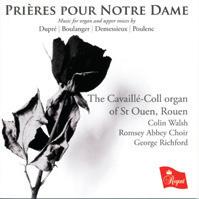
Maurice Duruflé
Houston Chamber Choir
Dir: Robert Simpson
Messe ‘Cum Jubilo’ pour choeur de barytons et orgue; Quatre motets; Notre Père pour choeur a cappella; Requiem pour soli, choeurs et orgue.
SIGNUM SIGCD 571 68:42
From the acclaimed Houston Chamber Choir comes the complete Duruflé choral canon. Recorded in the Edythe Bates Old Recital Hall of Rice University, Ken Cowan at the Grand Organ delivers a splendidly swashbuckling opening to the ‘Gloria’ of the Mass Cum jubilo for unison male voices. He also accompanies with much empathy and inner expression elsewhere. There are beautifully graded and shapely accounts of the famous four motets founded on Gregorian themes even though one longed for rather more forward movement –some moments needed the emotion nearer to the edge of the sleeve with a rather greater emphasis on timeamus rather than amemus in Ubi caritas, for example, and both Tota pulchra es and Tu es Petrus needed more kinetic energy and expression; both these factors were well to the fore in Eduardo Tercero’s glorious solos in the Cum jubilo Mass, where his lower register was beautifully focused. Throughout the Requiem balance between organ and choir was deftly achieved and there were many ‘5-star’ moments including a magnificent diminuendo on the very last chord at the close of ‘Agnus Dei’ in the men’s voices Mass. Cecilia Duarte delivers a great account of Pie Jesu, enhanced by Norman Fischer’s heartfelt cello obbligato. The movements from ‘Sanctus’ through to the final ‘In paradisum’ gain from tempi seemingly wholly apt for this fine choir, and those potentially graveyard entries to the interluded ‘Lux aeterna’ are a memorable experience. At last, one encounters truly dramatic, ‘vision of judgement’ singing in the faster segments of ‘Libera me’, and the sopranos’ ‘Requiem aeternam’ (as earlier in ‘Sed signifier Sanctus Michael’ at the Offertory) is splendidly and meltingly done. ‘In paradisum’ is exquisite, though the last chord needed to be much longer and that extraordinary G sharp from the organ a touch more prominent. But, of course, this is a concert, not a liturgical,
instrument and one very safely handled by organist Ken Cowan. The number of fine accounts by English collegiate churches and cathedrals on discs, mostly with boy trebles and bags of musical expression and even passion, should not blind us to the fact that Duruflé would almost certainly have envisaged the sonorities of an adult choir of women and men, and this Houston account gives you just that. Additionally, even if from time to time one longed for rather more easement and subsequent propulsion from instrumental and choral lines of the chant itself, this account would be a splendid study aid for any chorus singer coming upon the work and its hidden subtleties for the first time and seeking to match the rhythms on the page with the flexibility the composer expects.
Simon Lindley
Siglo de Oro
Dir: Patrick Allies
Werrecore Inviolata, integra et casta es Maria; Popule meus; Proh dolor; Ave maris stella; Inclina Deus meus; Beati omnes qui timent Dominum; Gaffurius O sacrum convivium; des Prez Alma redemptoris mater/ Ave regina caelorum; Inviolata, integra et casta; Weerbeke Ave regina caelorum, mater; Phinot Homo quidam fecit.
DELPHIAN DCD 34224 66:28
Four composers are named on the front of this CD, and there could well have been a fifth, Dominique Phinot. Your reviewer must confess to a certain relief that at least there was one composer whose music he had heard and performed, the mighty French composer Josquin des Prez (c.1450-1521), for this anthology takes us on a voyage of discovery into late 15th- and early 16th-century Milan, where the Sforza family maintained a ducal establishment which attracted musicians of the then fashionable Franco-Flemish school and considerably influenced the cathedral’s music, hence the proliferation of distinctly un-Italian names on this CD. Gaspar van Weerbeke acted as the Sforzas’ recruiting agent, enticing Josquin to their court in the early 1490s. Two successive choirmasters at Milan Cathedral are generously represented, Franchinus Gaffurius (1451-1522, choirmaster from 1484 until his death) and Matthias Werrecore (1500-74), who held the post with great distinction from 1522 to 1550. His Ave Maris stella is most attractive and one of the best works in a fine programme, and his Inviolata, integra et casta es Maria provides a most fitting prologue to this CD, Josquin’s setting of the same text providing the epilogue. I would also single out the sole work by which the somewhat shadowy figure of Phinot is represented; but everything in this anthology is well worth your attention, though it must be admitted that Josquin’s genius places him in a quite superior league, even such an eccentric work as Alma redemptoris mater/Ave regina caelorum, in which two sets of words are sung simultaneously, succeeding as completely as anyone could wish.
Sigla de Oro (‘Golden Age’) numbers a baker’s dozen and is thus a small choir rather than a consort, exhibiting a resulting warmth and expressiveness in the singing, with an attractively free and forward tone from the ladies and satisfyingly robust singing from the gentlemen. I am happy to recommend this CD to those wishing to discover an unusual musical tradition, one of very great interest.
Timothy StoreyThe Brabant Ensemble
Dir: Stephen Rice
Lupus Hellinck Missa surrexit pastor bonus; Johannes Lupi Salve celeberrima virgo; Quam pulchra es; Benedictus Dominus Deus Israel; Te Deum laudamus.
HYPERION CDA 68394 70:39
The Brabant Ensemble specialises in Renaissance polyphony and its name comes from the Duchy of Brabant, an area now forming parts of northern Belgium and the southern Netherlands. Its repertoire stems, at its core, from that area of Europe and there is much unexplored music available. The choir was founded in 1998 by Stephen Rice and has performed and recorded works by lesser known composers of the period as well as the more leading figures such as Lassus and Palestrina. The single work by Hellinck (1493/4-1541) is a substantial setting of the Mass lasting some 32 minutes. Written for five voices, it is based on a motet by Andreas De Silva, a slightly older composer who sang in the Papal Chapel in the early 16th century. The layout of the work is typical of many Mass settings of this era. The Brabant Ensemble is made up of just nine singers and shows itself to be totally assured in performance of this repertoire with excellent balance between the voice parts. Solo sections, when they occur, are very proficient. Johannes Lupi’s contributions to this disc consist of three motets and a rather rare setting of the Te Deum Laudamus. Relatively few composers set the Te Deum and Lupi’s setting is even more rare for the fact that every verse is set in polyphonic style rather than alternating plainsong and polyphony. Once again the Brabant Ensemble shows its expertise in delivering this music – sustained, lyrical singing with secure intonation and an excellent sense of style and ensemble.
Nicholas KerrisonArcangelo
Christopher Purves (baritone)
Dir: Jonathan Cohen
Gelido in ogni vena; Tu di pietà mi spogli; (Siroe, Re di Persia); Turn not, O Queen, thy face away; How art thou fall’n from thy height! (Esther); When storms the proud; Ah, canst thou but prove me! (Athalia); Oh memory!; Opprest with never-ceasing grief (Belshazzar); È ver che all’amo intorno (Catone); Concerto grosso in F major; Piangi pur (Tolomeo); Nell’africane selve; The walls are levell’d; See, the raging flames arise; Shall I in Mamre’s fertile plain (Joshua); Vieni, o cara (Rinaldo).
HYPERION CDA 68152 77:11
The first recording in this series was released in 2012 and received glowing reviews. The second volume featured here has been available since 2018 and is of a quality on a par with the earlier disc. Although it might not include many well-known pieces, it testifies to Handel’s inventive genius and Purves’s outstanding dramatic virtuosity and musicality. For instance, in See the raging flames arise (Joshua), an aria complete with fast-moving and powerful scalic writing, Purves is revealed as a highly accomplished artist with a clear baritone voice which not only demonstrates his exceedingly wide range

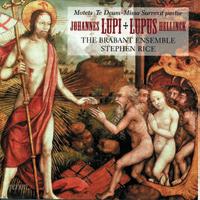
but a very solid lower register, especially conspicuous in the final cadence. Conversely, the arioso, Turn not, O Queen, thy face away (Esther) is performed superlatively with great lyricism complemented by his outstanding mellow tone. The lively account of one of the Opus 3 Concerti grossi, played with much sparkle and crispness by Arcangelo under Jonathan Cohen, is highly effective. The ensemble playing of Arcangelo simply adds to the quality of an extremely fine disc.
David Thorne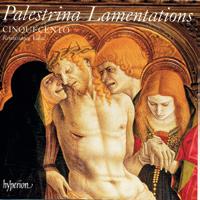
Lamentations for Maundy Thursday ‘In coena Domini’; Lamentations for Good Friday ‘In parasceve’; Lamentations for Holy Saturday
‘Sabbato Sancto’
HYPERION CDA 68284 72:11
Many readers will be familiar with Tallis’s Lamentations, wonderfully expressive and melodious settings of verses from the prophet Jeremiah, several of the Lessons in the gloomy and austere Holy Week office of Tenebrae, which ends in total darkness, as its name suggests. Each Lesson is prefaced by a letter of the Hebrew alphabet, which it was customary for composers of the Renaissance period to set as a quasiinstrumental vocal prelude. This CD presents three of the settings by the legendary Giovanni Pierluigi da Palestrina (1524-91); the music is intense and dark-hued and the sombre effect is enhanced by its being sung at low pitch by the five members of this all-male ensemble. These Lamentations are worlds apart from the sunny, radiant Palestrina of Missa Papae Marcelli and Tu es Petrus, even his Stabat Mater dolorosa seeming almost cheerful by comparison with the works presented here. In other words, be careful that you are fully aware of what you are buying, but I can only salute Cinquecento’s thoroughly admirable performances which I most strongly recommend to discerning collectors.
Timothy StoreyChoir of St John’s College, Cambridge
Dir: Andrew Nethsingha
Organ: Glen Dempsey
Stanford Evening Canticles in A; Leighton Second Service; Sumsion Evening Canticles in A; Howells Gloucester Service; Gabriel Jackson Truro Service; Tippett Collegium Sancti Johannis Cantabrigiense.
SIGNUM SIGCD 588 58:44
The choir of St John’s College Cambridge is justifiably renowned for some outstanding recordings, many of which have comprised music using liturgical texts. This release highlights the overall raison d’être of the choir – to enhance worship in the college chapel at various stages of a service – in this case, canticles sung at Evensong, the Magnificat and Nunc Dimittis. The settings are of significance to Andrew Nethsingha in that they have close associations to buildings in which he has worked. They vary in style from Stanford’s quasi-
symphonic setting in A to Gabriel Jackson’s highly effective unaccompanied setting commissioned by Nethsingha whilst he was organist at Truro. The sensational setting of Tippett’s Collegium Sancti Johannis Cantabrigiense, commissioned for the 450th anniversary of the college and featuring the organ’s Trompetta Reale stop, serves as an impressive and fitting conclusion.
Whilst a good proportion of the music will be well known to CM readers, the Evening Canticles in A by Herbert Sumsion, the distinguished former organist of Gloucester Cathedral, might be less familiar. Although a miniature in comparison with much of the music on this disc, it is a surprisingly demanding piece of writing, requiring technical skill, a sense of musicality and an understanding of the terms ‘phrasing’ and ‘dynamic contrast’. The choir, singing with remarkable ease and sensitivity, possesses all these attributes and is admirably supported in general by sympathetic accompaniment from Glen Dempsey. Moreover, Nethsingha’s fastidious approach is reflected in subtle musical nuances which permeate the complete disc.
In a relatively short review, it would be impossible to analyse all the performances in detail but suffice it to say that these comments apply equally to all the works on a disc where the sound of the trebles cannot be faulted and the melodic shapes are captured so superbly. This is certainly one of the finest discs of this genre to be issued in a very long while.
 David Thorne
David Thorne
Musical settings of words by George
Herbert
Choir of Salisbury Cathedral
Dir: David Halls
Organ: John Challenger
Walton Let all the world; Harris Come, my way; King of glory, king of peace; Halls I cannot ope mine eyes (hymn); Teach me, my God and King; Hadley A Song for Easter; Vaughan Williams Five Mystical Songs; Mary Plumstead A Grateful Heart; Ives Listen, sweet dove; Bingham Prayer; Ferguson Our life is hid with Christ in God; Alec Roth The Flower; Alexander Brent-Smith Come, my way (hymn); Britten Antiphon.
PRIORY PRCD 1206 73:01
The number of poems set to music by the metaphysical poet George Herbert is immense. Of 90 in total, 40 alone were adapted for the Methodist Hymnal by the Wesley brothers. Herbert became incumbent of the parish of Bemerton, a village close to Salisbury, to where he would walk twice a week to attend choral services in the cathedral. It is said that he often participated in music making with members of the choir after services, and it therefore seems appropriate that a CD containing 13 diverse settings performed by the choir of Salisbury Cathedral has been released and that it also includes a complete performance of Vaughan Williams’ Five Mystical Songs
Pieces range from those for upper voices to the substantial setting of Walton’s Let all the world and Britten’s Antiphon, both of which are performed with great commitment and vigour. More lyrical anthems include Harris’s King of Glory and Mary Plumstead’s A Grateful Heart. David Halls’ setting of the well-known text, Teach me, my God and King, is an expressive miniature, whilst Judith Bingham’s Prayer and Barry Ferguson’s
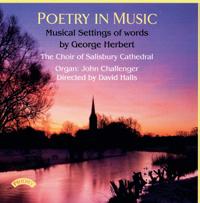
Our life is hid with Christ in God reflect the more profound texts and include taut writing. Two less well-known hymn settings by David Halls and Alexander Brent Smith reveal strong melodic lines combined with a firm harmonic sense.
Some might feel the overall balance somewhat suspect. Both the girls and boys are inclined to produce a rather forced tone, perhaps to compensate for distant miking and the size of the building, even though the feeling of space has been captured most successfully. On occasions, this does result in an absence of phrasing and dynamics. Easter, from the Five Mystical Songs feels particularly challenging, although Richard Hooper sings with great commitment and John Challenger’s accompaniments are superb throughout, especially in the way he explores the organ (before it underwent its massive rebuild).
Nevertheless, this is a most enjoyable disc with an abundance of good music.
David Thorne
Organ: Callum Alger
Bruhns Nun komm, der Heiden Heiland; Bach Trio super ‘Herr Jesu Christ, dich zu uns wend’ BWV 655; Allein Gott in der Höh’ sei Ehr’, BWV 662; Mendelssohn Organ Sonata in A major, movements I and II; Reinecke Organ Sonata in G minor, 3 movements; Reger Fantasia and fugue Halleluja! Gott zu loben bleibe meine Seelenfreud.
REGENT REGCD 548 65:41
Now Organ Scholar at Westminster Cathedral, Callum Alger was a fourth-year student at the Royal Birmingham Conservatoire at the time of this recording. As a result, he was able to record on two notable instruments, the Garnier organ in the Elgar Concert Hall of Birmingham University and the Walker organ of St Chad’s Cathedral. The disc is centred around that most important aspect of Lutheran worship, the chorale. The title, Klangreden, means ‘speeches in sound’, and the collection of pieces, beautifully recorded by Gary Cole at Regent, all feature chorale melodies for particular seasons of the church year. From the outset, on the university organ of 2014, Callum Alger shows his credentials as an organist.
There is a clear understanding of style in the two Baroque pieces by Bruhns and Bach, the Bruhns having sufficient freedom to convey the improvisatory nature of the music while the Bach is carefully controlled and neat in execution, particularly in the Trio super Herr Jesu Christ, dich zu uns wend Registrations are carefully chosen and show the northern German character of the university organ. The final work on this instrument is Mendelssohn’s third sonata, where the full organ sound is captured well. The playing is articulate and the build of sound is effectively managed during the second fugue leading to the return of the opening theme. The relatively dry acoustic of the Elgar Concert Hall is quite evident, however.
The final two works are played on the Walker organ at St Chad’s Cathedral. This is a very fine tracker instrument built on a west-end gallery in 1990 and is one of the most thrilling instruments, in situ, of its type I have heard. Students of the Conservatoire are very lucky to have access to it. The
classical layout and bright choruses make it most suitable for 17th and 18th century music but Calum Alger chooses 19thcentury music by Reinecke and Reger. The instrument is larger than the university organ and has the advantage of a more resonant acoustic and more sonorous foundation stops which are more evident from the start. In the Reinecke sonata (Reinecke, incidentally, taught Stanford) the chorale Wie schön leuchet der Morgenstern features in the concluding section whereas, in the Reger (a chorale fantasia) a set of variations closes with a vast fugue and a final verse of the chorale. In both works Callum Alger shows excellent technical security and a fine management of the instrument as well as stylistic awareness. Although built on classical lines there are some quite useful ‘string’ stops which are used to great effect in the slow movement of the Reinecke. The final statement of the chorale melody brings the full force of the organ in play which is thrilling. The Reger takes over where the Reinecke finished with equally thrilling sounds from this magnificent instrument, and CA is fully in charge of both the music and instrument. The entry of the pedal reeds in the Reger fugue is magnificent.
This is an excellent disc, and what a start to a career! It is no surprise that CA was awarded first prize in both the IAO/ RCO Organ Competition in Peterborough and the Dame Gilliam Weir Messiaen Competition in Birmingham.
Nicholas Kerrison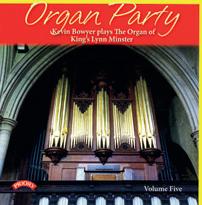
Kevin Bowyer plays the organ of King’s Lynn Minster
Jack Strachey Up with the curtain! Arthur Pryor The Whistler and his Dog; William Wolstenholme Bohemesque; Charles Wels Celluloid Sketches; T S Webster arr John Wells Waikato March; Edouard Mignan
Toccata médiévale; Bernard Johnson Elfentanz; Ernest Tomlinson
Triumphal Overture; Anthony Foster Jubilate Deo; Carl Robrecht
Kinderlieder potpourri; John Weeks Park Pages; David N Johnson
Trumpet Tune in E flat; Robin Erskine Aspects of Bunessan; Derek Nisbet Tightrope Prelude; Mons Leidvin Takle Young Spirit.
PRIORY
Enthusiasts for music’s untrodden paths will find much of real delight in this splendid and highly eclectic programme from the legendary Kevin Bowyer, here in great form at the fine instrument at King’s Lynn Minster with a programme of great diversity and one abounding in fun as well as rhetoric. This is a generous recital, the fifth of such programmes released by Priory, and it runs to 18 tracks and for pretty nigh an hour and a quarter. Kevin Bowyer’s stylish and indefatigably persuasive playing remains wonderfully fresh from start to finish. This is playing bound to entrance the general music-lover as much as the organ ‘buff’. The voicing of the King’s Lynn instrument is a real delight – bold, swift of speech and well capable of fulfilling the demands of a virtuoso of Bowyer’s calibre, assurance and stylistic integrity. Amid so much humour and bonhomie stands out the Toccata médiévale from the pen of Edouard Mignan, the immediate predecessor of the legendary Jeanne Demessieux as organist of one Paris’s very greatest churches, La Madeleine. Another very real serious ‘find’ is Ernest Tomlinson’s Triumphal Overture – described by Kevin as, for him ‘ET’s organ masterpiece’ – at seven minutes in duration, the most extended work in the programme and
a piece definitely within the shade of the stylistic legacy of Eric Coates yet at the same time abounding in Tomlinson’s soaring soprano lines atop the quieter textures. And then there’s Anthony Foster’s ebullient Jubilate Deo, composed for Dr Alan Thurlow, David N Johnson’s E flat Trumpet Tune and John Weeks’s Park Pages from 2012, and three fabulously tmospheric Aspects of Bunessan from Robin Erskine – recipients of some of the finest and most dedicated playing on this wholly memorable release.
Each of the five issues of my present endeavours is enhanced by magnificent, highly generous, inlay books – with Organ Party V, Redcliffe Experience and the Edinburgh Leighton anthology being by some degree the most comprehensive of all.
Simon LindleyMusic by Huw Morgan
Organ: David Pipe Dialogues; Invocation and Dance; Prelude; Haven; Hymn Preludes; Lullaby; Living Stones; Aria; Ffanffare; Partita borealis.
MERIDIAN CDE 84653 70:18
There are some interesting works on this disc although, like many similar recital recordings, it suffers as an entity from being made up of mostly small-scale pieces; in this case, only one track is (slightly) over six minutes. This inevitably creates a ‘bitty’ feeling, although if the listener dips in and out, there is certainly rewarding music to be found. The opening Dialogues for example is very satisfying; it is varied in colours and textures, but nevertheless coherent. The dark sonorities of Prelude are most effective, although some of the slower, quieter pieces lack a sense of direction.
Most successful are the two largest scale works, the Invocation and Dance and the Partita Borealis – although to claim a place for the latter in ‘the grand organ symphony tradition’ with a duration of under 13 minutes seems a little ambitious. Like the Invocation and Dance, though, it is original, varied, and atmospheric, and in these works in particular one feels that here is a composer with something worth saying.
The performances are committed, and David Pipe draws an impressive range of colours and textures from the Bridlington Priory organ. The booklet is interesting, and helpfully informative about unfamiliar music, although its prose is somewhat overblown and extravagant in places.
 Christopher Barton
Christopher Barton
Organ: Alexander Ffinch

Jongen Sonata Eroica; Dove The Dancing Pipes; Liszt Fantasia and Fugue on ‘Ad nos, ad salutarem undam’.
DIVINE ART 62:05
This CD features Alexander Ffinch playing the splendid Romantic organ of Cheltenham College. The original instrument was built by Norman & Beard in 1897 with a case designed by Henry Prothero, architect of the chapel. In 1930, the organ was rebuilt by Harrison’s, who were also responsible for the complete rebuild in 2017. The disc

compromises three works, with Liszt’s monumental Fantasia and Fugue serving as the tour de force.
Jongen’s extremely fine Sonata Eroica has been recorded many times. Performing this particular work on an English Romantic organ is relatively successful but, whilst the playing is highly accurate, some of the more bravura elements feel a touch lacking in drive, especially at the very beginning of the work, where a more dramatic approach might have been more effective. Ffinch very much adheres to Jongen’s tempo markings, although a lack of momentum is perhaps partly exaggerated by overuse of rubato, especially at the beginning and end of a number of phrases.
Jonathan Harvey’s The Dancing Pipes was written for Thomas Trotter, who premiered it on the Snetzler organ in Ludlow parish church. The work is characterised by a rhythmic drive with continual changes of metre. Harvey writes that a ‘dancing figure dominates the piece’, whilst the ostinato figures are notably effective. This rhythmically challenging work is a most successful addition to the repertoire and reflects both the versatility of instrument and performer. The liner notes by David Gambie, especially for this piece, are both highly informative and helpful.
The last work is Liszt’s huge and wonderful piece, Ad nos, ad salutarem undam. The very solid opening is followed by a lengthy second movement where the extremely rhapsodic and improvisatory writing greatly benefits from the variety of colours available on the instrument. The final fugal movement, complete with its fanfares, certainly justifies the inclusion of a work embracing half the programme.
The recording by Colin Rae is of an excellent standard. He captures not only the acoustic of the building but the fine Romantic qualities of the instrument.
David ThorneColin Walsh plays the organ of Lincoln Cathedral Bossi Entrée pontificale; Scherzo in G minor; Divertimento in forma di Giga; Étude symphonique; Jongen Cantabile; Choral; Petit prélude; Toccata in D flat major; Franck Prélude, fugue et variation op 18; Duruflé Méditation; Fugue sur le carillon des heures; Dupré Cortège et litanie; Mulet Rosace (Esquisses Byzantines); Langlais Hymne d’action de grace ‘Te Deum’.
Colin Walsh’s association with Lincoln Cathedral now spans some 30 years; he was appointed Organist and Master of the Choristers in 1988 and then Organist Laureate in 2003. He knows the instrument well! In an interview with Lorraine S Brugh in Cambridge in 2018 he compared the Willis organs of Salisbury and Lincoln: “I’ve always thought the Salisbury organ has a more vertical sound, much like the building itself. It was also built 20 years earlier than Lincoln. For me, it has a lighter and more classical sound. Lincoln Cathedral is a big, solid mass of stone, very wide with those huge towers. [The organ] is a much broader, reed-based organ. Lincoln needs the weight of the reeds and foundations to project the sound into the building.”
In a previous review I discussed CW’s performances of Bach on the Lincoln instrument and that ‘solid’ sound was certainly used to perfection. The new recording features music which many might consider to be more suited to the
Willis instrument. A previous recording of European organ music from the ‘Great European Organs’ series by Priory featured music by Gigout, Saint-Saens, Franck and Widor. This time CW ventures to Italy and Belgium as well as France and moves further into the 20th century. As we might expect, the combination of the Lincoln organ and its chief exponent produces yet another disc of quality performances which exploit the sheer strength of the instrument and the array of delicate sounds available. The opening piece, Bossi’s Entrée pontificale, sets the scene with great blasts of sound penetrating through the building. How thrilling this must be live! Three more Bossi pieces follow, demonstrating the versatility of this instrument and the virtuosity of this expert performer – the pedal 6/8 quavers in the Étude symphonique are something to behold. Four pieces by Jongen come next, not often recorded, I suspect, and here we can get a measure of the quieter sounds of this Willis organ (which dates back to 1898). The music of César Franck is represented by the Prélude, fugue et variation with beautifully lyrical playing. Colin Walsh then moves to Duruflé and his Méditation, dating from 1964 but unknown to the organist world until 2002. Here again we hear some of the wonderfully atmospheric timbres available on the instrument contrasting with the sturdy diapasons and ever-increasing reeds in the Fugue sur le thème du carillon which follows.
The CD booklet reveals some interesting information regarding Dupré’s Cortège – it was apparently played at the wedding of the late Duke of Windsor to Wallis Simpson in 1937! The final work by Langlais again shows the Lincoln instrument in all its glory and provides a fitting conclusion to a glorious disc by one of the UK’s greatest organists.
Nicholas KerrisonThe Oxbridge Organ Duo Benedict Lewis-Smith, Julian Collings Ravel/Senn Boléro; Stephen Paulus Paean; Stravinsky/Bovet Firebird.
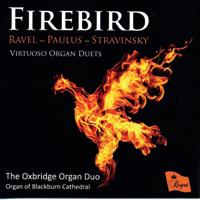
REGENT REGCD500 64:46
By any yardstick, this is a splendid disc. Firstly, on account of a great unanimity of purpose and ensemble displayed by the members of this inspirationally excellent, nimble and well-matched duo. Then there is the skill and daring of the ever-enterprising Gary Cole in capturing to a T the astounding quality of the Blackburn Cathedral instrument and its hugely generous acoustic. Andrew Senn’s deft arrangement of the infamous Bolero of Ravel is remarkable; one feels the absence of the all-pervading side drum not one jot! This is mostly due to the rock steady rhythm of this performance as much as to the exciting colours of the organ’s sonorities. Blackburn’s world famous Walker instrument, brought to birth just over 60 years ago by the combined vision of Dr Francis Jackson and the then cathedral organist, John Bertalot, took the world of English organbuilding by storm and, with further work by David Wood at the outset of the present century, it is set fair for another good long period of service. The cathedral’s ambient acoustic offers much to players and singers, though careful handling is necessary!
Benedict Lewis-Smith and Julian Collings well and truly make the most of things. Stephen Paulus’ very sharply projected Paean received its first hearing at the hands and feet of Todd and Anne Wilson at an event at New York’s St Patrick’s
Cathedral arranged for the American Guild of Organists’ 1996 Centennial Convention; the piece taxes the organ’s winding as much as the dexterity of the players involved; and yet, after a brittle opening, there is an increasing, and appreciated, sense of welcome well captured by the Oxbridge Organ Duo. The eponymous final work comprises music from Stravinsky’s Firebird output from the complete score of the 1910 ballet and from the celebrated orchestral suite of 35 years later. The recording encapsulates 15 highly characterised component pieces and retains the attention of the listener for almost 40 minutes of recorded sound. Above all, it is the medium dynamic levels of cantabile music – mp and mf for example –that are so welcome for lengthy periods alongside the higher echelons of volume and articulation that thrill the ear and stimulate the senses.
Simon LindleyJonathan Hope plays the organ of St
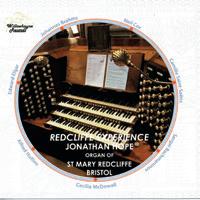
Mary Redcliffe, Bristol
Brahms trs Hope Tragic Overture; Neil Cox Creation Dance; Saint-Saëns trs Bernard Adagio from Symphony No. 3 in C minor (Organ Symphony); Rachmaninov trs Vierne Prelude in C sharp minor; McDowall Sacred and hallowed fire; Hollins Concert Rondo; Elgar trs Hope In the South [Alassio].
WILLOWHAYNE RECORDS 77:32
This recital unfolds in arresting and compelling style from a splendid account of the player’s own transcription of Brahms’ compelling Tragic Overture. The diversity of colour is deftly done and the rock steady rhythm carries all before it. This 1880 overture is a companion piece to the (more ubiquitous) Academic Festival and lends itself splendidly to performance by organ alone. Rhythmic energy and kinetic power vibrate in Neil Cox’s exciting Creation Dance composed during the 2015 summer vacation. The initial utterance utilises all 12 semitones excitingly, though harmonically more of the traditional organ textures are present – sustained harmonies topped by upwardly mobile melodies of great beauty. A real find, this piece in a Brockless-esque delivery but including more of the conventional harmonic language as a welcome guest in the mix.
At the heart of the disc comes Émile Bernard’s arrangement of the ‘Adagio’ from Saint-Saëns’ Organ Symphony. Here, the quieter timbres of the kaleidoscopically diverse Redcliffe instrument are given free rein – to the real delight of the listener; just occasionally, the internal balance tends too much to favour the melody and the accompaniment becomes somewhat diffident, but at the opening and close of this beguiling music things fare better and Mr Hope does just the right thing with an Adagio – a pulse at one’s leisure, not something approaching a railway stop signal all the time; the music has a lovely sense of forward movement. Listen out particularly for the extraordinary range and control of the Harrison Swell Boxes atop the agitated quaver movement in the bass prior to the compelling full harmonisation of the fabulous melodic line that pervades this section of the symphony.
Something of a rarity is Vierne’s fine transcription of the famous Rachmaninov Prelude in C sharp minor of 1892, a work sometimes known as The Bells of Moscow. The pent-up energy of the enclosed pipework on the chordal quavers is beautifully done. In just 60 or so bars, the composer entices the listener
to him in the same way that an icon painter draws the eyes of the beholder. Wonderful pedal registrations enhance all. Sacred and hallowed fire is a component panel of composer Cecilia McDowall’s organ triptych inspired by the writings of George Herbert; the work was commissioned by Harrison & Harrison, builders of the Redcliffe instrument in 1912, for the commemoration of the sesquicentenary of the firm’s foundation and was first heard at Westminster Abbey played by Robert Quinney in March of 2013. Hope provides an eloquent and expressive reading of a beautifully scored piece. Hollins’ jolly Concert Rondo – why is this not played more often, one wonders? – is given a terrific outing. Finally comes Jonathan Hope’s own organ remarkable and hugely stylish setting of Elgar’s In the South – like Neil Cox’s essay, a work closely connected with a holiday – in the Elgars’ case at the town of Alassio on the Italian Riviera. Although described on its title page as a Concert Overture, In the South bids fair to the descriptive of a ‘tone poem’. A 1924 transcription of the perennial favourite extract of the canto popolare segment of the piece by Herbert Brewer is, to some degree, a precursor of Jonathan Hope’s masterly score – but Mr Hope gives us the totality of this very fine work. Bravo.
A superb disc – essential for every lover of the king of instruments and its repertoire – and with four world premiere recordings within the 77-minute programme to boot! Those who know and admire Jonathan Hope’s profound artistry will be delighted with this disc, abounding as it does in playing that is lyrical and virtuosic by turn in equal measure. Warm congratulations go to Mark Hartt-Palmer and John Balsdon for their engineering skills in capturing the consummate magic of this Harrison masterpiece.
Simon Lindley
Organ: Iain Quinn
Arcangelo
Dir: Jonathan Cohen
Violin: Sophie Gent
Concertos Nos 1, 2 and 6 for organ and string orchestra.
Download available for Concerto No. 10. CHANDOS CHAN 20118 69:41
There is ambiguity about the exact chronology of these concerti, although all are early works dating from the 1750s, when Haydn was in his twenties. There is even uncertainty about the solo instrument, with Haydn’s own catalogue listing numbers one and two as ‘per il clavicembalo’ (for the harpsichord). It is, however, believed that these four concerti are the only keyboard concerti conceived by Haydn for organ, despite the lack of pedal parts. The remaining extant autograph source is for the first concerto, and on that score it is indicated ‘Concerto per l’organo’.
The opening concerto is unique in that the orchestra includes oboes (the first oboe on this recording is Nicholas Daniel, no less). The score also includes blank staves for ‘clarini’ (trumpets or horns), and while these have been added by some editors, including those of Haydn’s own time, they are not included on this recording. The other concerti have just string accompaniment, without violas in No. 10. There is no information on the organ used, other than its location; it is actually the 1971 Grant, Degens & Bradbeer at St Mary’s Woodford, an excellent choice which speaks with the clarity needed for this repertoire.
The character of the music is bright and open, very like the composer’s early symphonies; without reaching any great
profundity, it is most agreeable. The performances are buoyant and stylish, and informed by period performance practice without actually being on period instruments. Soloists Iain Quinn and Sophie Gent with the orchestra Arcangelo under Jonathan Cohen treat this, appropriately, almost as chamber music; one senses a real feeling of teamwork and equality. There are many highly attractive moments, especially in the serene slow movements. Violin and organ may be an unlikely pairing for a double concerto, but they provide engaging interplay in Concerto No. 6, especially in the ‘Largo’, where the lines unwind with sinuous grace supported by pizzicato accompaniment.
Christopher BartonVol 3
Kevin Bowyer plays the organ of King’s Lynn Minster
Harold Jeboult Postlude alla marcia; Frederick Massey Melodie in E flat; Robert Wilkinson Fugue in B flat; Paul Hillemacher Prélude archaïque; Andrew Freeman Toccata in C; Roland Diggle Twilight Reverie; George Young Andante Maestoso; James Lyon Festival March; Edouard Mignan Pastorale; Harry Crackel Grand Chorus; Robert Elliott Canzonet in B flat; Ernest Halsey Scherzo in F; John Meale Cantilene; Purcell Mansfield
Concert-Allegro in G; Pachelbel Choral Prelude; Charles Littlejohn Postlude; Eugene Wyatt De profundis (prelude); Alan Gray Elegy; Alec Rowley Sursum corda; Herbert Ellingford Recessional March.

PRIORY PRCD 1202
I dare say that even Kevin Bowyer would not claim that there is much great music on this CD – but what it does offer (in common with the two previous volumes) is a snapshot of the (mostly) English organ scene in the first half of the last century. What do we see in that snapshot? A certain uniformity of harmonic and textural style, it must be confessed, but also much energy, vitality and charm. Many of the names are now largely forgotten but, as with similar minor figures of the German Baroque, say, or 19th-century France, that does not mean that they were incapable of writing worthwhile and attractive music. For me, the most successful works were the more extrovert pieces (including a striking Concert-Allegro by the 14-year-old Purcell Mansfield), several of which would make attractive voluntaries, if one could source the scores.
The music could have no more devoted champion than Kevin Bowyer, whose writing in the programme notes is informative and whose playing is, as always, exemplary. His genuine affection for the music shines through. The booklet contains just three pages on the music, however, and 17 on the instrument!
Christopher BartonSimon Earl plays the organ of Christchurch Priory

Andrew Carter Trumpet Tune; Bairstow Elegy; Barber Adagio for strings; Dan Locklair Rubrics; Nigel Ogden Penguins’ Playtime; Whitlock Folk Tune; Bédard Variations sur ‘Amazing Grace’; Vaughan Williams Rhosymedre; Saint-Saëns arr Lemare Danse Macabre; Seth Bingham Roulade; Stanford Fantasia and Toccata in D minor.
PRIORY PRCD 1209
The first organ in the Priory was built in 1788 by Alexander Cummings at a cost of £500. By 1848, the organ had fallen into disrepair and was rebuilt and moved from the quire screen to the south transept. In 1865 the organ was rebuilt by ‘Father’ Willis, with a number of modifications made over a period of nearly a century. It was not until 1951 that the instrument underwent a complete rebuild by John Compton, incorporating electric action and being placed on a new gallery in the south transept with a detached console in the nave. Due to its very poor condition, by 1973 the instrument was replaced by a Compton Makin electronic organ, although the actual pipes still remained. A large appeal was launched as late as 1994, and ultimately the contract awarded to Nicholson & Sons, with work completed in 1999. There have been minor modifications since, but in 2017 the organ received its solo division. The present instrument is playable from two consoles, the mobile console (an essential part of the rebuild) allowing ease of communication with the choir but also enabling the recitalist to be seen by audiences attending the numerous organ concerts held in the Priory.
Simon Earl’s highly varied and colourful choice of programme, ranging from an arrangement of Barber’s Adagio to Denis Bédard’s Variations sur ‘Amazing Grace’, highlights the versatility of both instrument and performer, and the disc should suit all tastes. To be commended are Andrew Carter’s wistful Trumpet Tune and Lemare’s arrangement of Saint-Saёns’ Danse Macabre. Very easy listening is provided in Nigel Ogden’s Penguins’ Playtime, whilst Dan Lockier’s Rubrics and Stanford’s Fantasia and Toccata in D minor reflect the power of the instrument. Simon Earl’s technique is highly accomplished and his playing most colourful – revealing more than a passing acquaintance with the instrument!
David Thorne
Charles-Marie Widor
Organ: Joseph Nolan
Organ Symphonies Nos 1-8; Symphonie Gothique; Symphonie Romane; Suite Latine; Trois nouvelles pièces; Bach’s memento; Marche Americaine; Conte d’Avril: Marche nuptiale.
SIGNUM SIGCD
As a pupil of Richard Popplewell, Gillian Weir and MarieClaire Alain, Dr Nolan, the organist of Perth Cathedral WA, is supremely well qualified for the technical and musical demands of this mighty collection, which presents the music of Charles-Marie Widor (1844-1937) played on the kind of instrument for which it was composed, Cavaillé-Coll’s organ at La Madeleine, Paris, plus a church in Lyon and another in Toulouse, where the eighth symphony has been recorded on the very organ for which it was written. One is captivated by the beauty of the flutes, Fonds (Diapasons) and quiet solo registers, but thrilled and at times overwhelmed by the power and excitement of the full-throated, rather brassy Trompettes and Bombardes. And what of the music itself? Except in the Symphonie Gothique and Symphonie Romane, both based on plainchant and composed late in his career, Widor was not constrained by the conventional four-movement layout of a symphony, so that none of the first eight symphonies has fewer than five movements, and the first boasts as many as seven.
None lasts less than half an hour, three-quarters in the case of the seventh and eighth, so that British players have tended to regard these mighty works as a quarry from which individual movements could be extracted, most notably the (in)famous Toccata and first movement (a quite superb set of variations) from the fifth symphony; but the sixth is also worth more than a cursory inspection, and it seems a pity that Dr Nolan’s recording of these two is no longer available separately, now that all his Widor has been gathered up into the boxed set under review. I fear that only a committed enthusiast would be interested in such works as Suite Latine (plainchant-inspired); Bach’s memento (transcriptions of Bach’s choral and orchestral works) and Trois nouvelles pièces, products of Widor’s old age which rather puzzled contemporary critics. I suspect that only enthusiasts for the organ and its music will feel moved to spend nearly £50 on this generous collection, fine though the playing and recording most certainly are. I rather sadly must report that when I asked three holders of the FRCO diploma how much Widor they played, they all replied, “Not much”, symptomatic of a widespread neglect which these excellent CDs might perhaps do something to remedy – but I was always the optimist!
Timothy StoreyThomas Trotter plays the organ of Christ Church, Spitalfields

Corelli Concerto Grosso in F major (Preludio, Allamanda, Corrente, Gavotta, Adagio, Minuetto); James Hook Voluntary in D major (4 movements); Pepusch Voluntary in C major (12 movements); Handel Concerto in D minor; J C Bach Concerto in D major; William Russell Voluntary No. 10 in G major. REGENT REGCD 526 TT 71:00

The Pleasure Gardens of the title are those of Vauxhall, where a bandstand and even an organ pavilion were built for the open-air concerts held each summer in the late 18th and early 19th centuries. An important participant in these concerts was James Hook, whose music appears in this most attractive programme amid a selection of the arrangements and original compositions which made up the secular repertoire heard in the royal palaces and pleasure gardens of the period. From a richness of delights one must single out J C Bach’s Concerto in which the rather cheeky variations on the National Anthem reflect its dedication to George III’s spouse Queen Charlotte; and Pepusch’s lengthy Voluntary, the 12 movements of which demand every solo effect known to 18th-century organ-builders, a demand which Richard Bridge’s mighty instrument of 1735 at Spitalfields triumphantly succeeds in fulfilling. Church and organ alike have been magnificently rescued from disuse and dereliction, the latter’s somewhat contentious restoration to its nearoriginal condition deliberately not producing a versatile instrument but one which forces the player to investigate a repertoire contemporary with the organ. The results of such an approach are triumphantly vindicated by this excellent CD from the organist of Birmingham Town Hall. Mrs Storey and I recommend it with the greatest possible enthusiasm.
Timothy Storey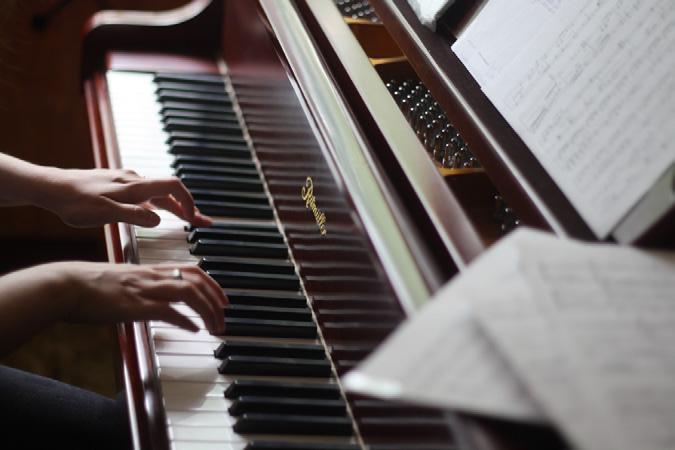
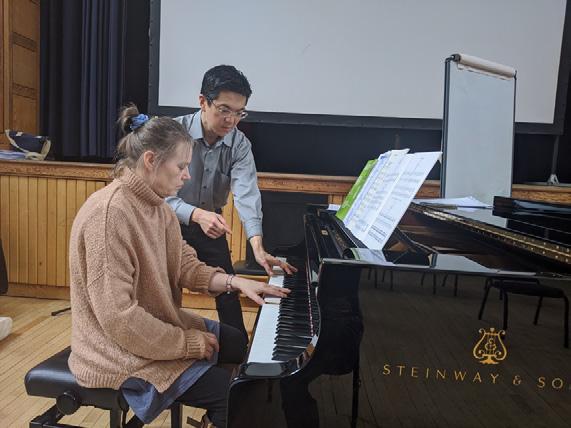

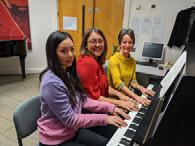

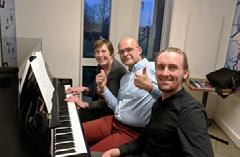
We provide all types of new instruments
New Organs
Restoration
Rebuilding
Tuning
Maintenance
We can give unbiased advice for all your requirements
Hillside Organ Works
Carrhill Road, Mossley, Lancashire OL5 0SE Tel: 01457 833 009
www.georgesixsmithandsonltd.co.uk



New and Recent Releases
Timothy Parsons plays the organ of EXETER
The ENGLISH CATHEDRAL Series Vol XX
This is the debut solo recording from Exeter Cathedral’s brilliant young assistant organist, and the first recording to showcase the Exeter organ since its major rebuild and restoration in 2014 Music by Mendelssohn, SS Wesley, Vierne , Blatchly, Elgar, Muhly, Brahms , Messiaen, and Duruflé


‘The Cathedral, and Timothy Parsons , should be rightly proud of this highly satisfying and well-executed programme ’ Choir & Organ
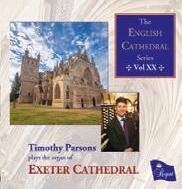
Anthems by Sir Edward Bairstow
Tewkesbury Abbey Schola Cantorum
Simon Bell (director)
Carleton Etherington (organ)
Blessed City; Heavenly Salem; Lord, I call upon thee; The Lamentation; Though I speak with the tongues of men; The Blessed Virgin’s Cradle Song; Let all mortal flesh keep silence; Lord, thou has been our refuge; Our Father in the Heavens*; The King of Love my Shepherd is; If the Lord had not helped me; Save us, O Lord, waking; Jesu, grant me this I pray; Of the Father’s love begotten*
* first recording
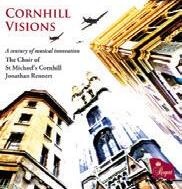
A century of musical innovation
The Choir of St Michael’s Cornhill directed by Jonathan Rennert
A celebrator y recording featuring some of the many composers who have written works for the Choir of St Michael’s over the past 100 years.
The Prayer Book Society promotes the use and understanding of the Book of Common Prayer in churches, chapels and cathedrals throughout the Church of England. We work with clergy, ordinands and laity to provide information and encouragement, and we offer a variety of resources (both online and in print).

Do you love the timeless beauty of the Book of Common Prayer? If so, please join us! Members receive regular magazines, as well as invitations to events.
For further information, please visit pbs.org.uk pbs.admin@pbs.org.uk 0118 984 2582
Music by Darke , Vaughan Williams , Randle , Bax, Renner t Moore , and Treseder



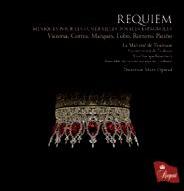
POUR LES
FUNÉRAILLES ROYALES ESPAGNOLES
Victoria, Guerrero, Marqués, Lobo, Romero, Patiño
La Maîtrise de Toulouse, Conservatoire de Toulouse, Les Sacqueboutiers, Ensemble de cuivres anciens de Toulouse
Direction Mark Opstad
This original programme, centring on Victoria’s Requiem, recreates the sound world of the Renaissance, marr ying children’s voices with the subtle but luxurious richness of the wind instruments
It sounds glorious ’ BBC Radio 3 In Tune
REGENT RECORDS, PO Box 528,Wolverhampton, WV3 9YW Tel: 01902 424377 www regentrecords com (with secure online ordering)
Retail distribution by RSK Entertainment Ltd, Tel: 01488 608900, info@rskentertainment co uk
Available in the USA from the Organ Historical Society www ohscatalog org
